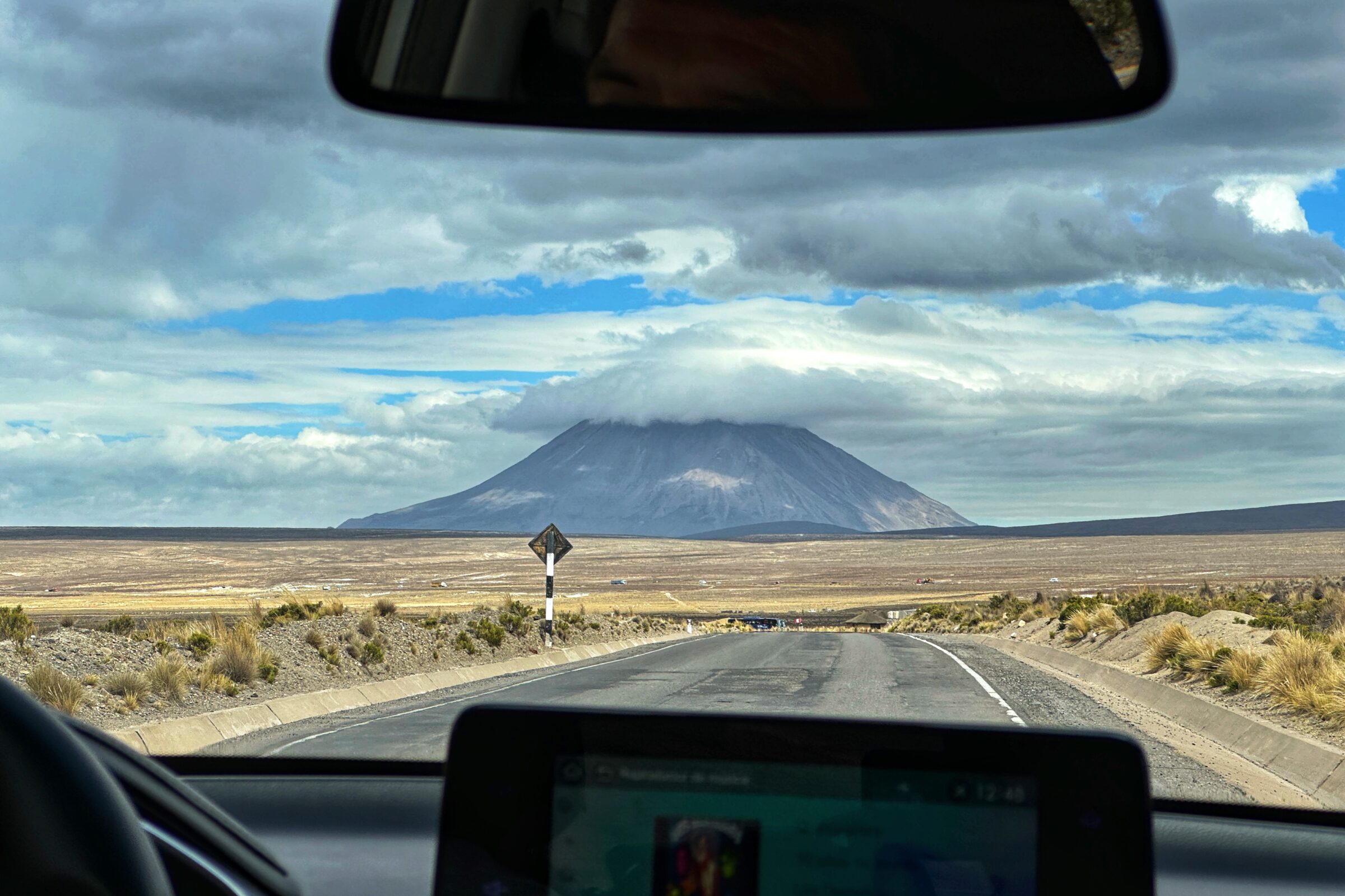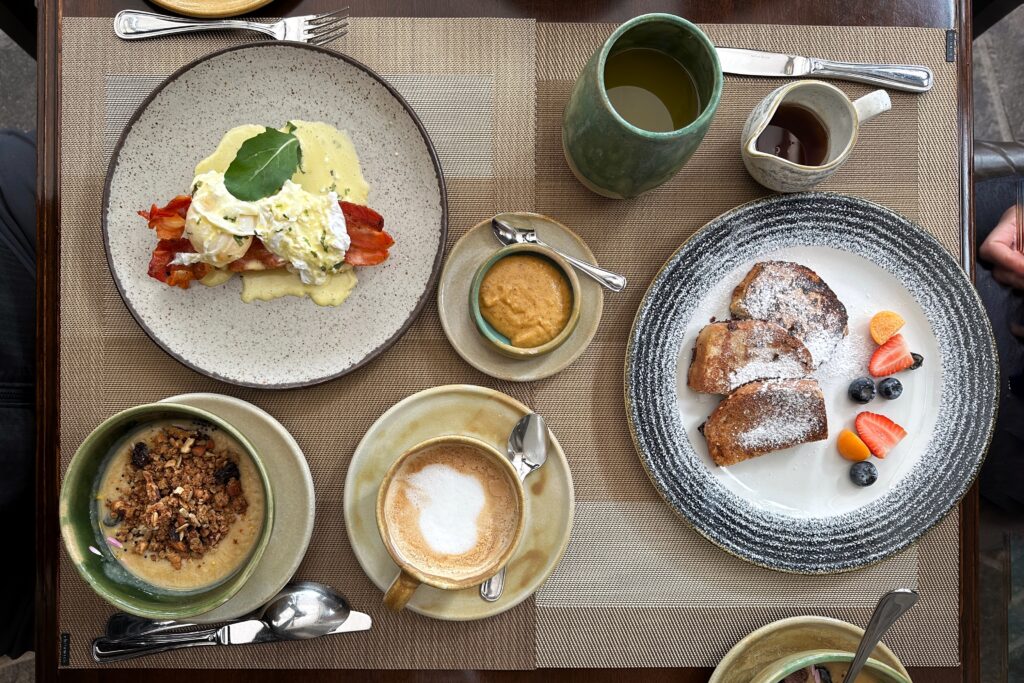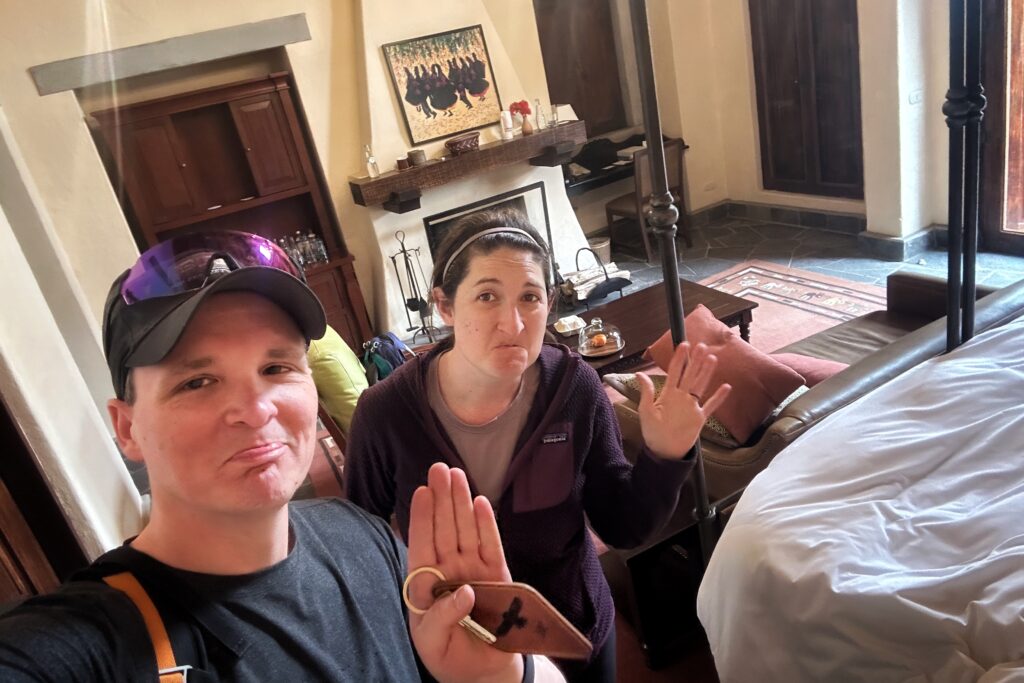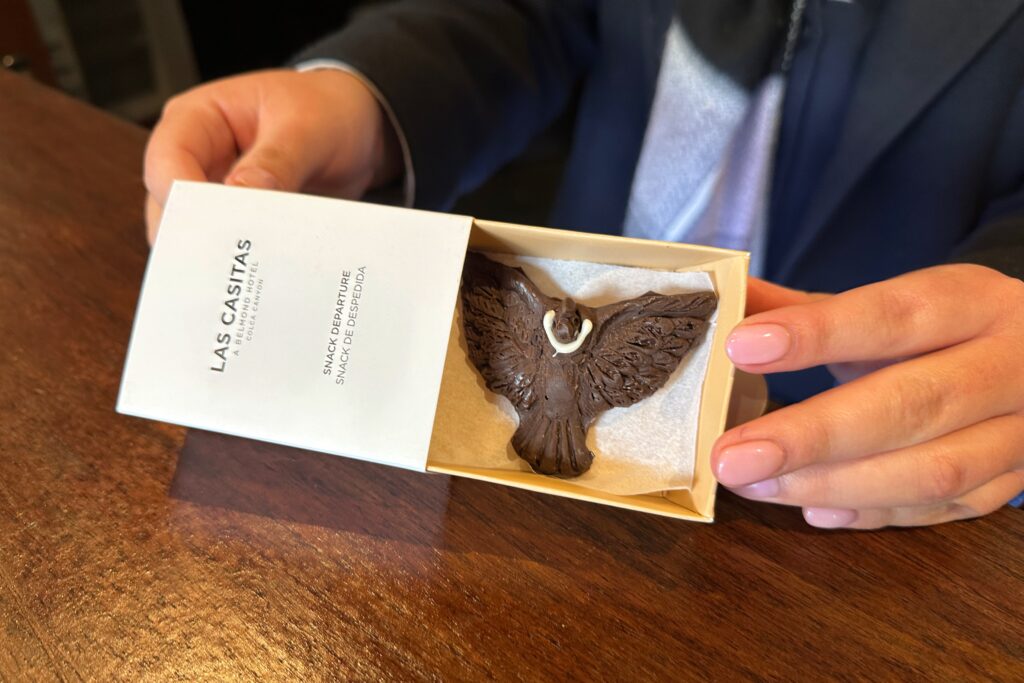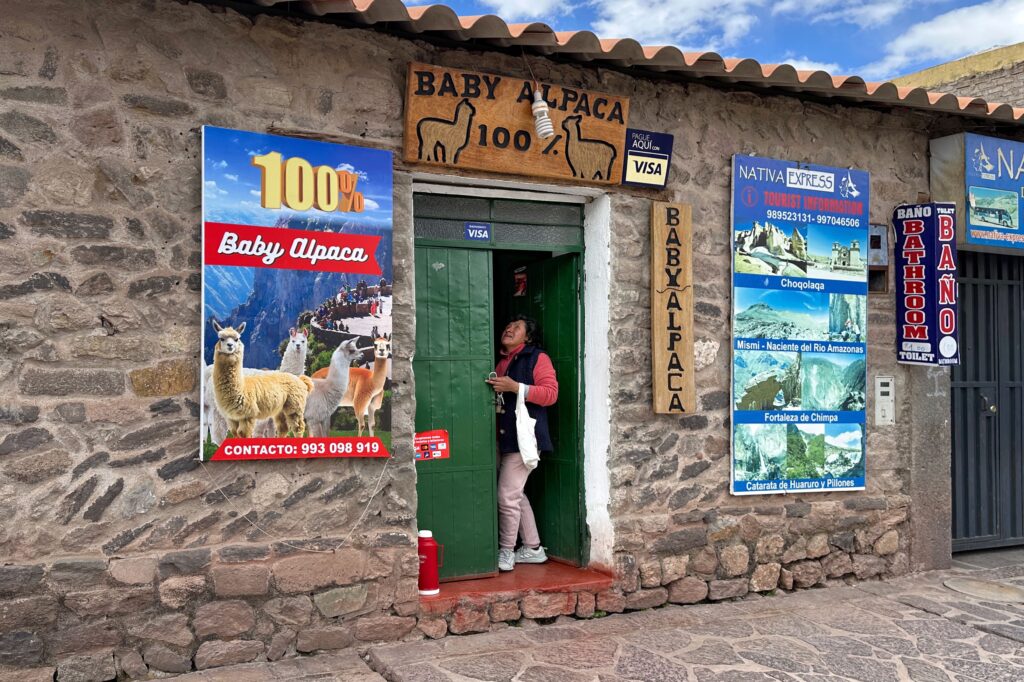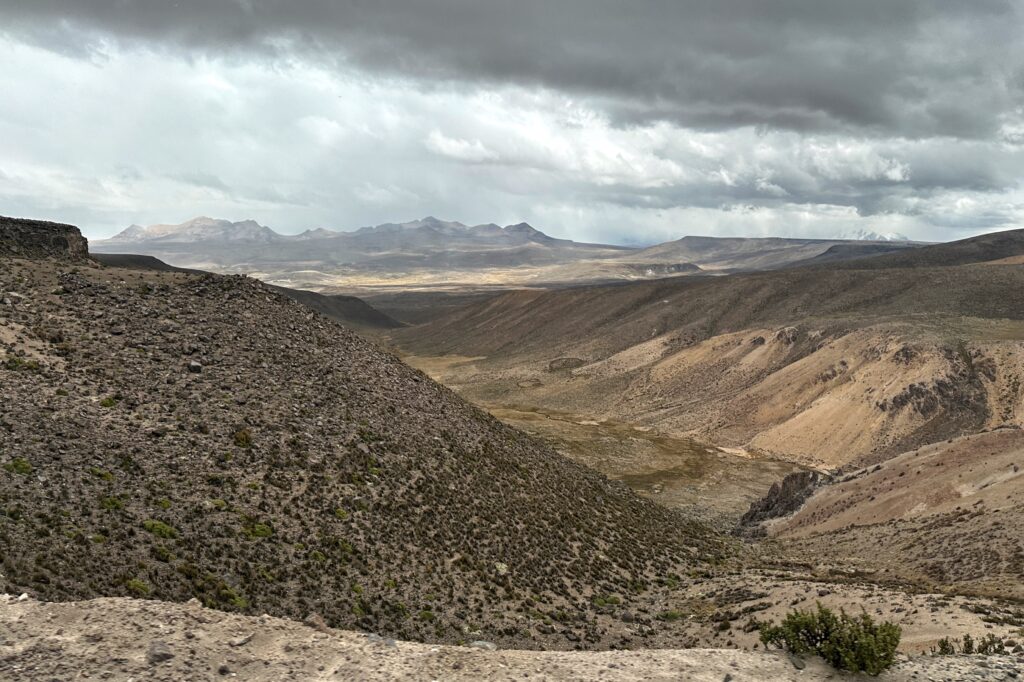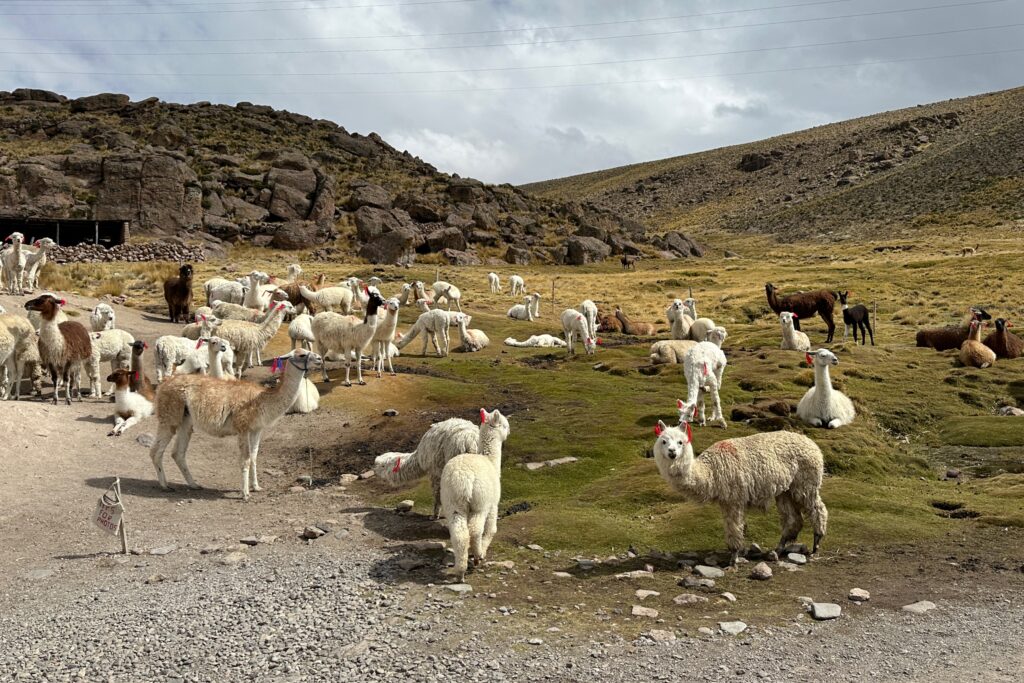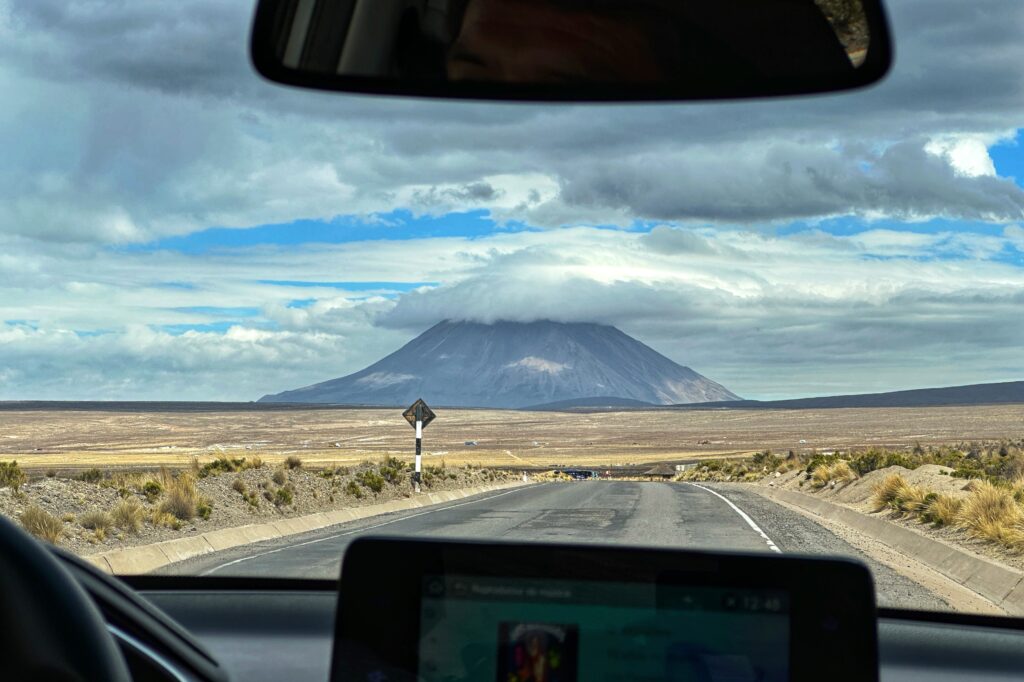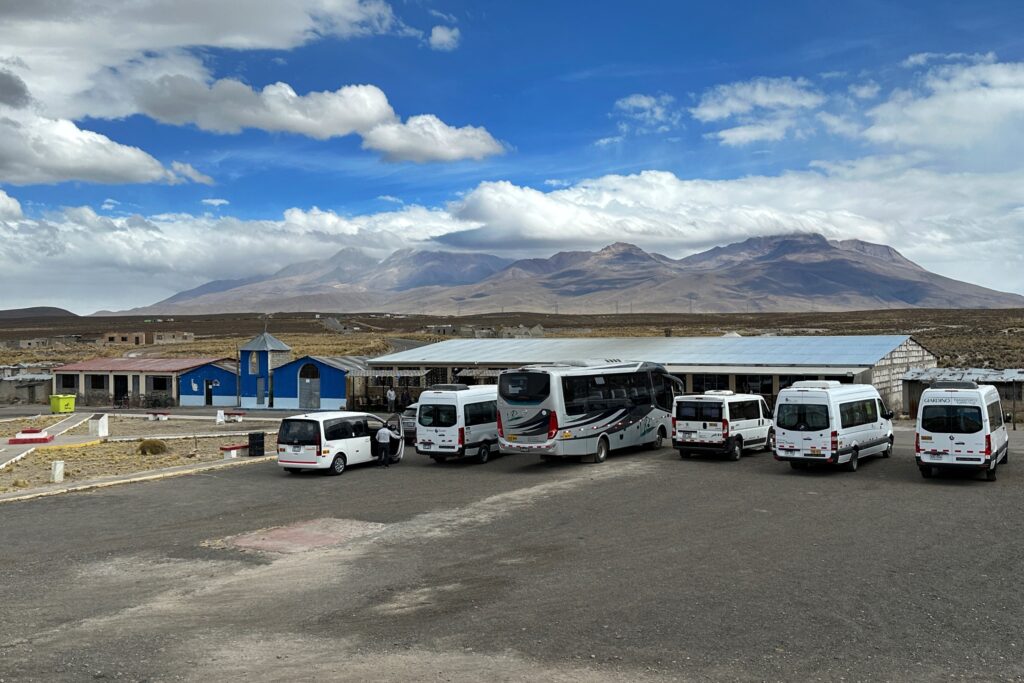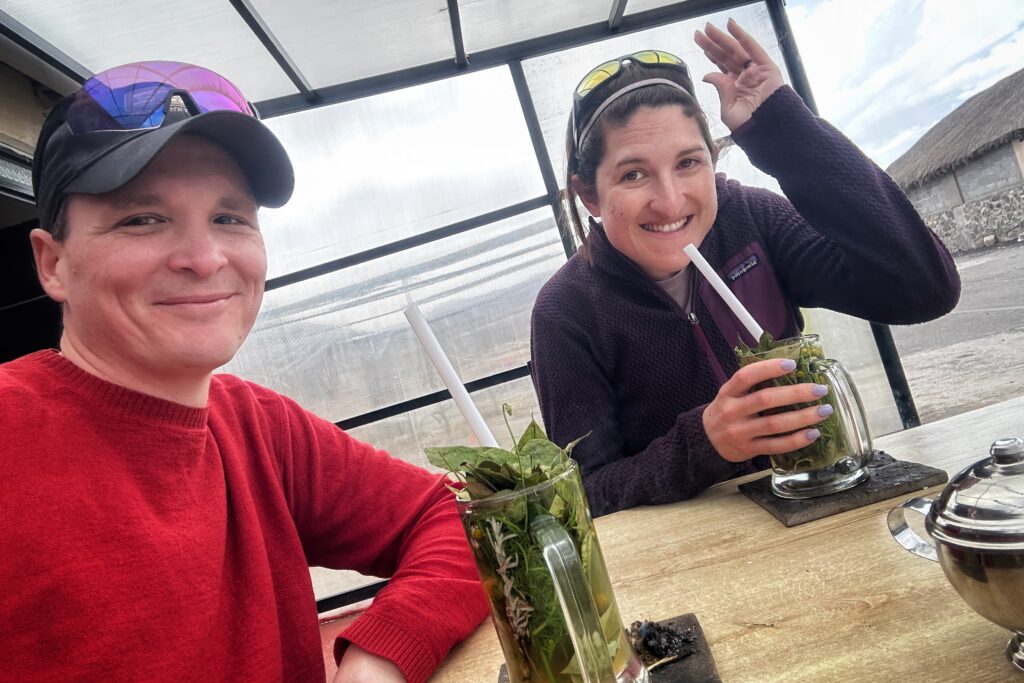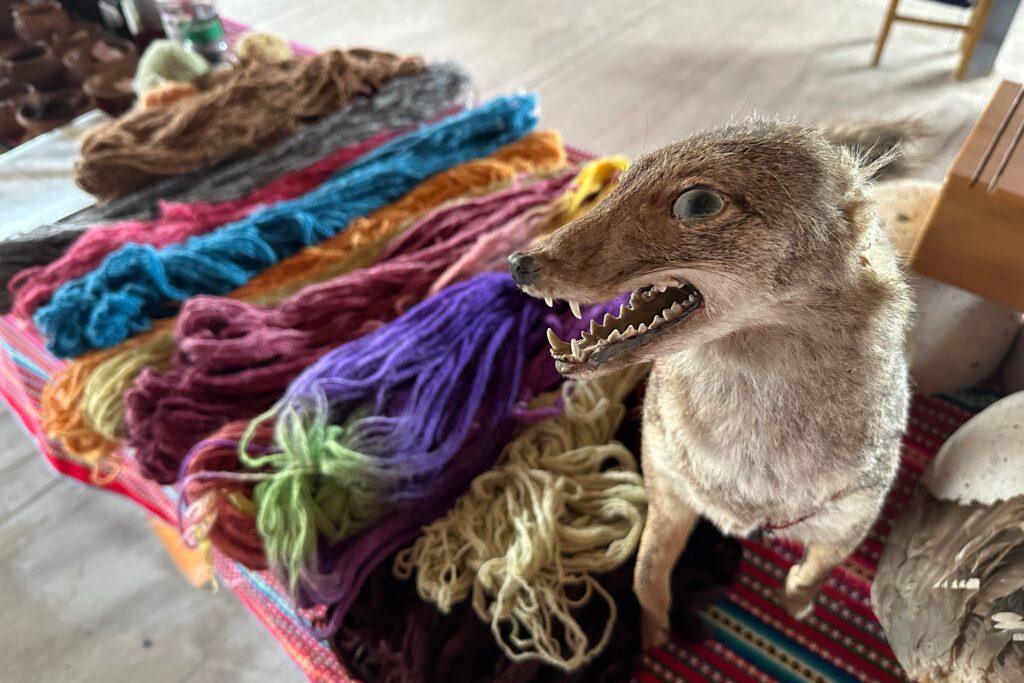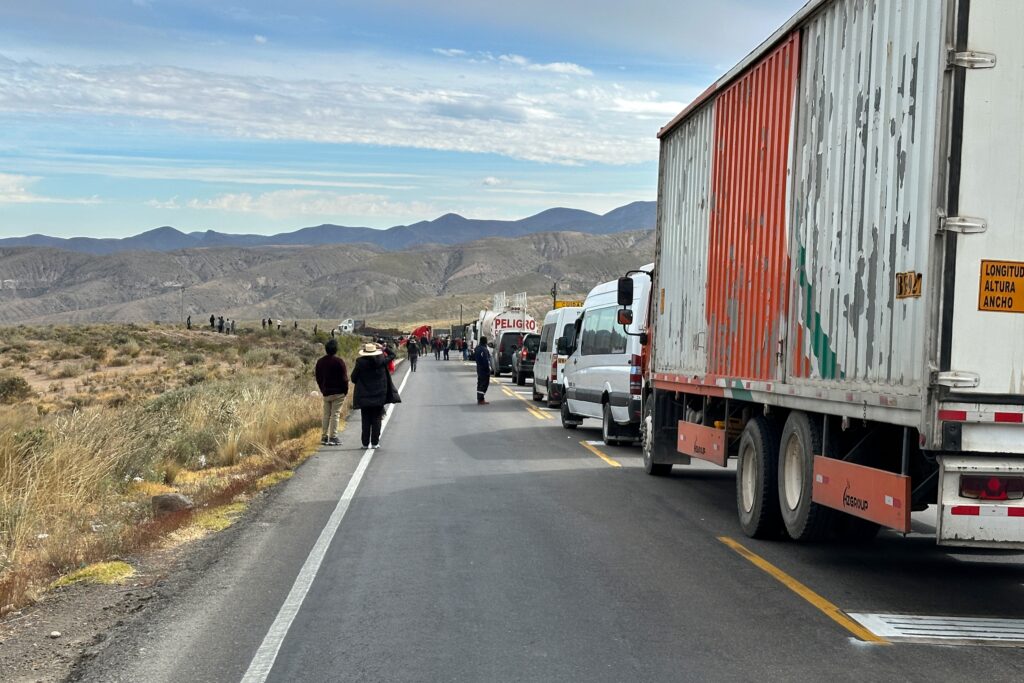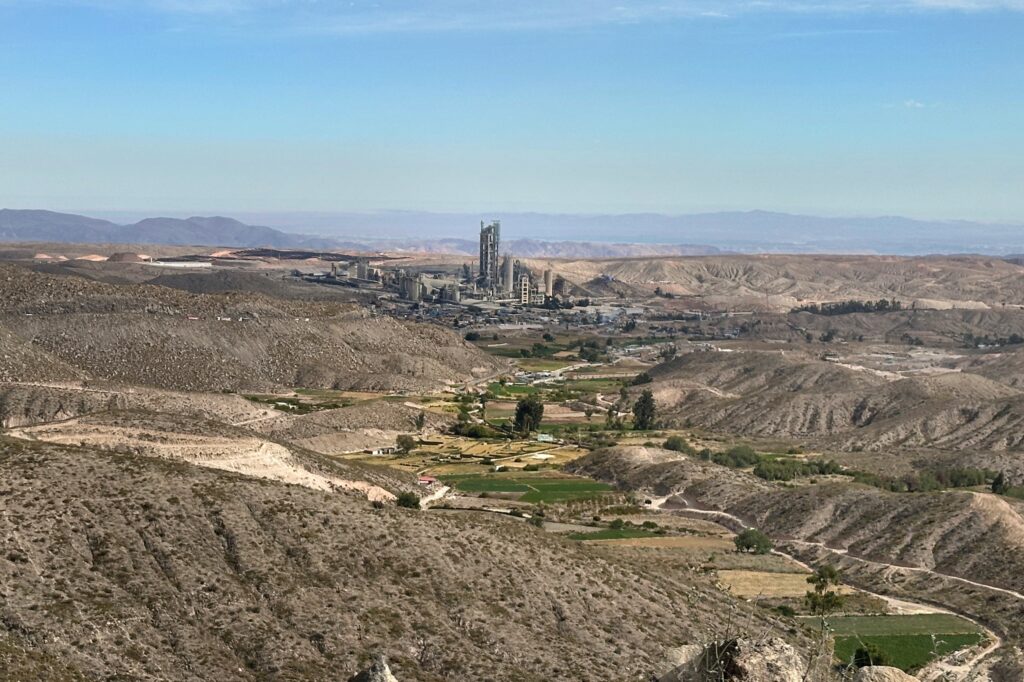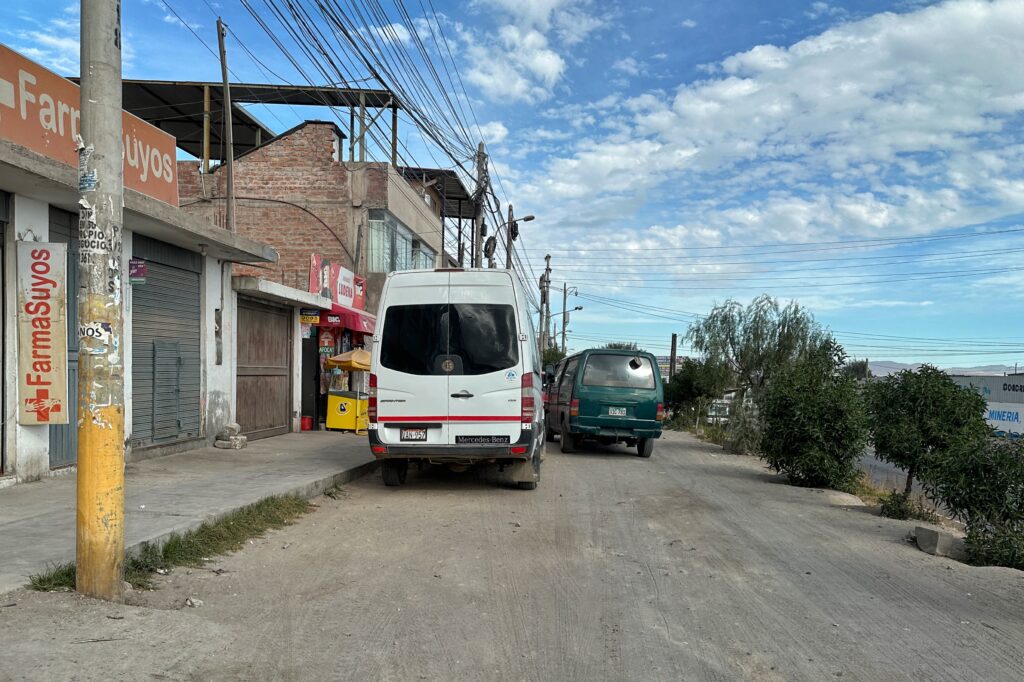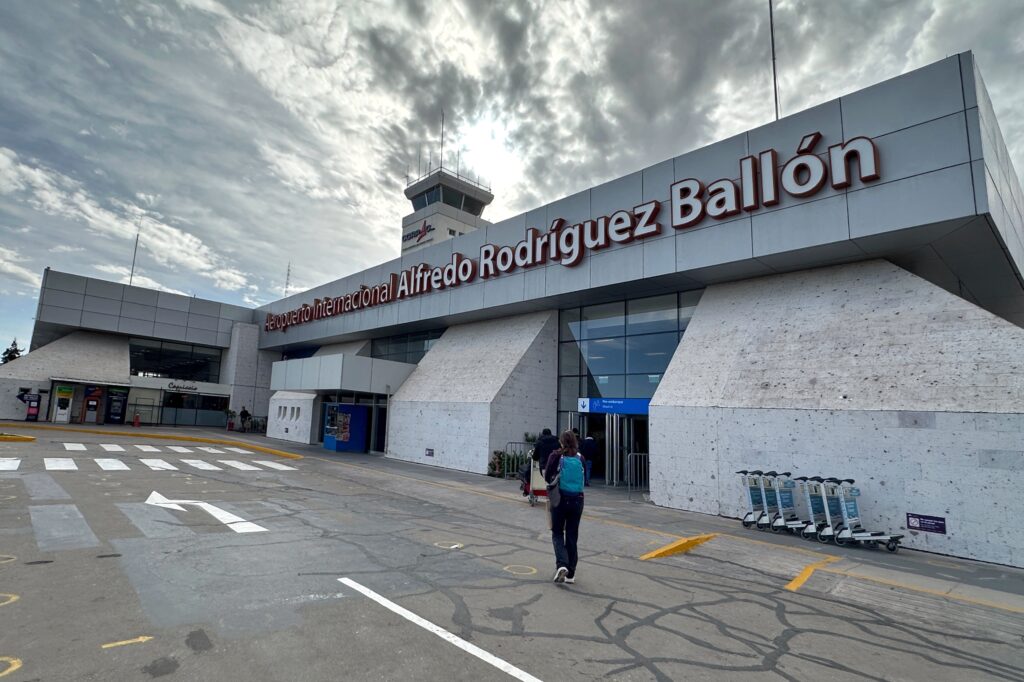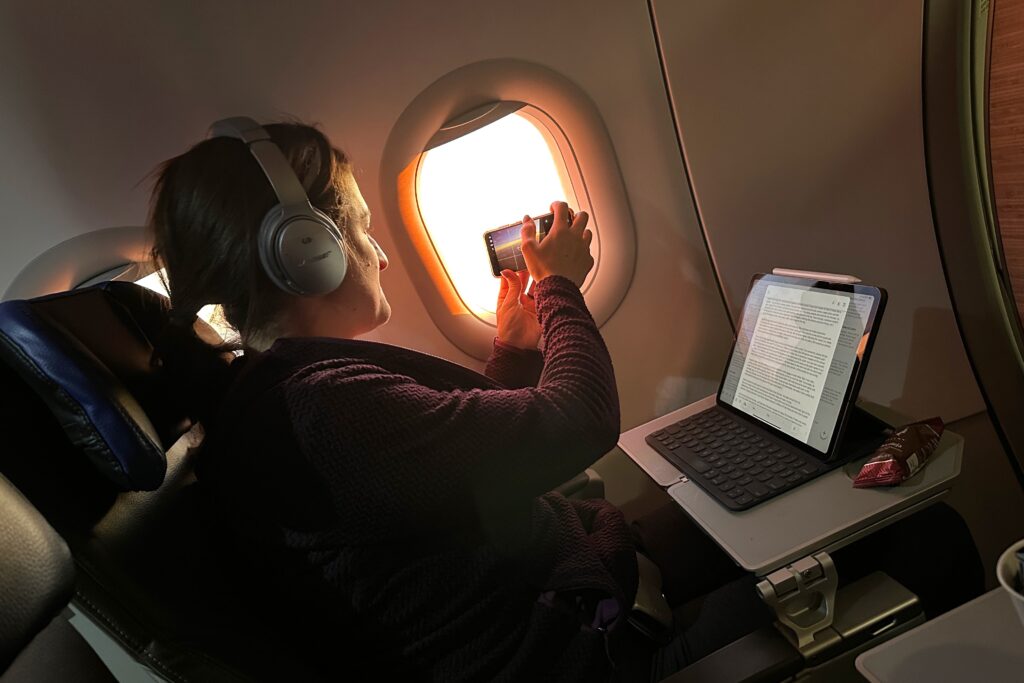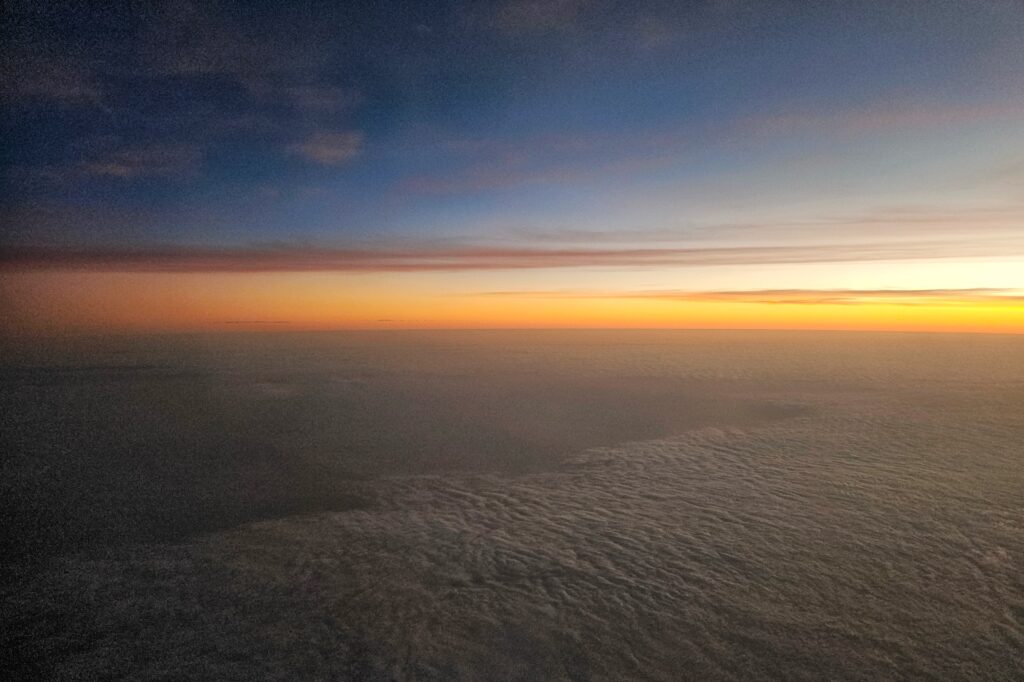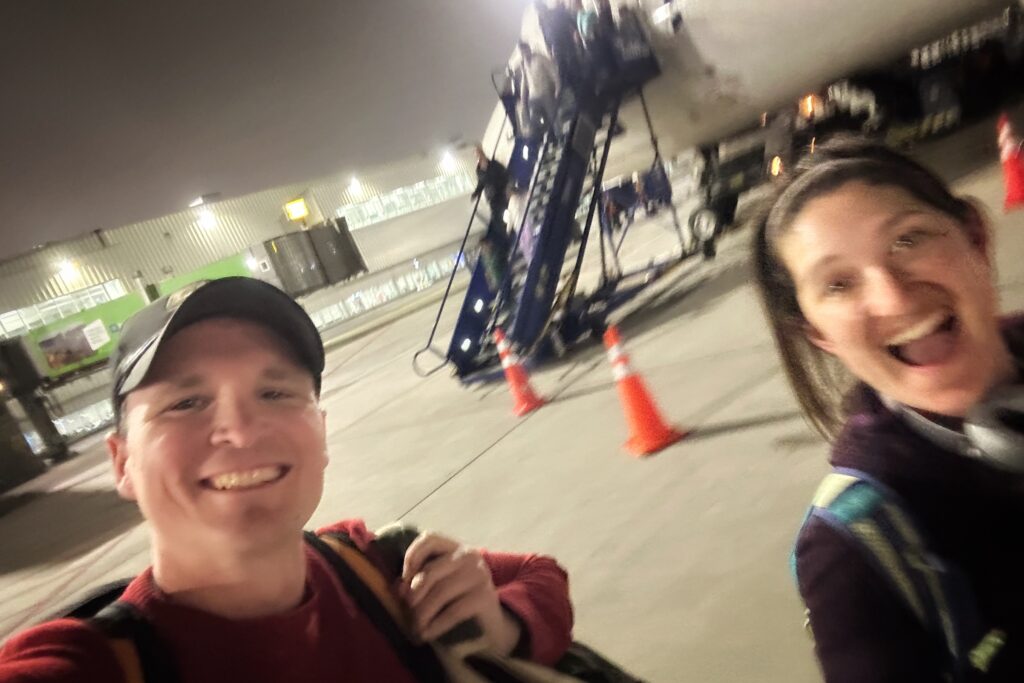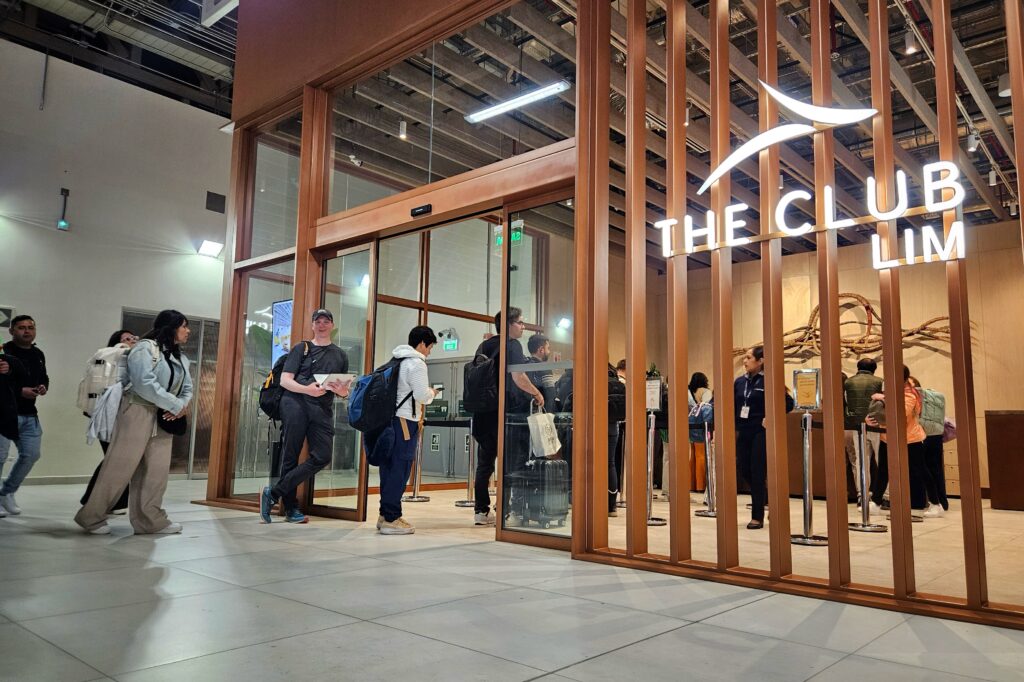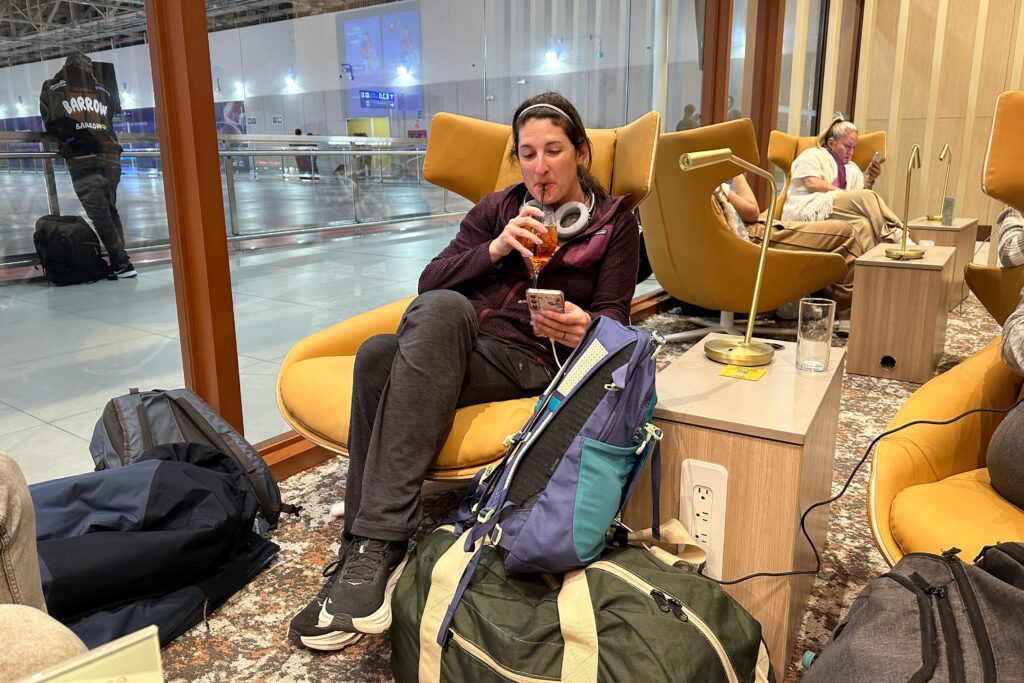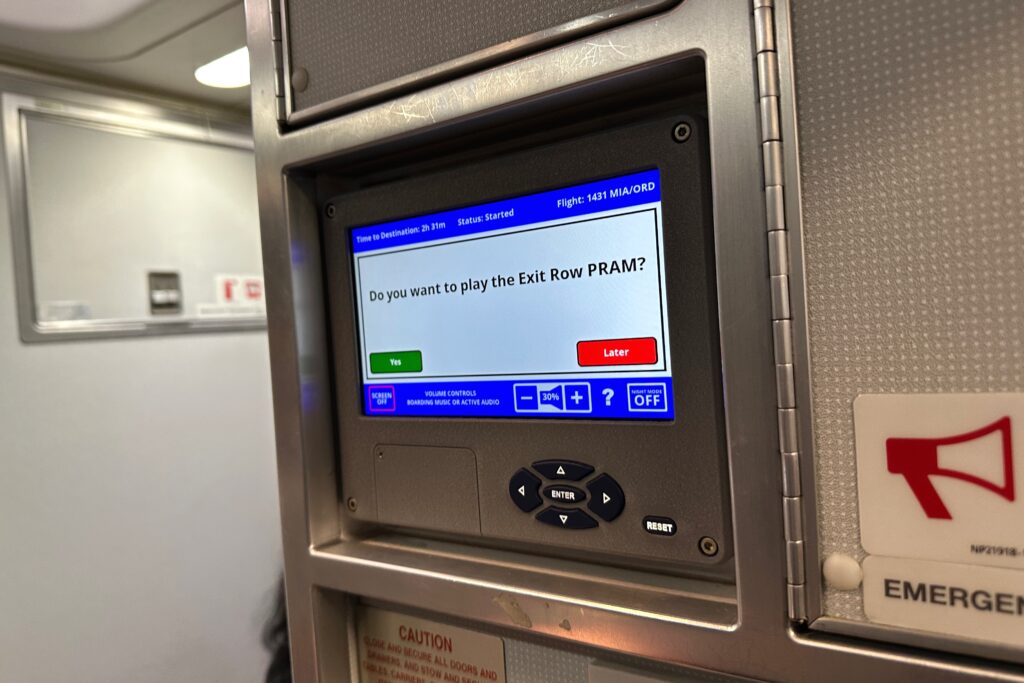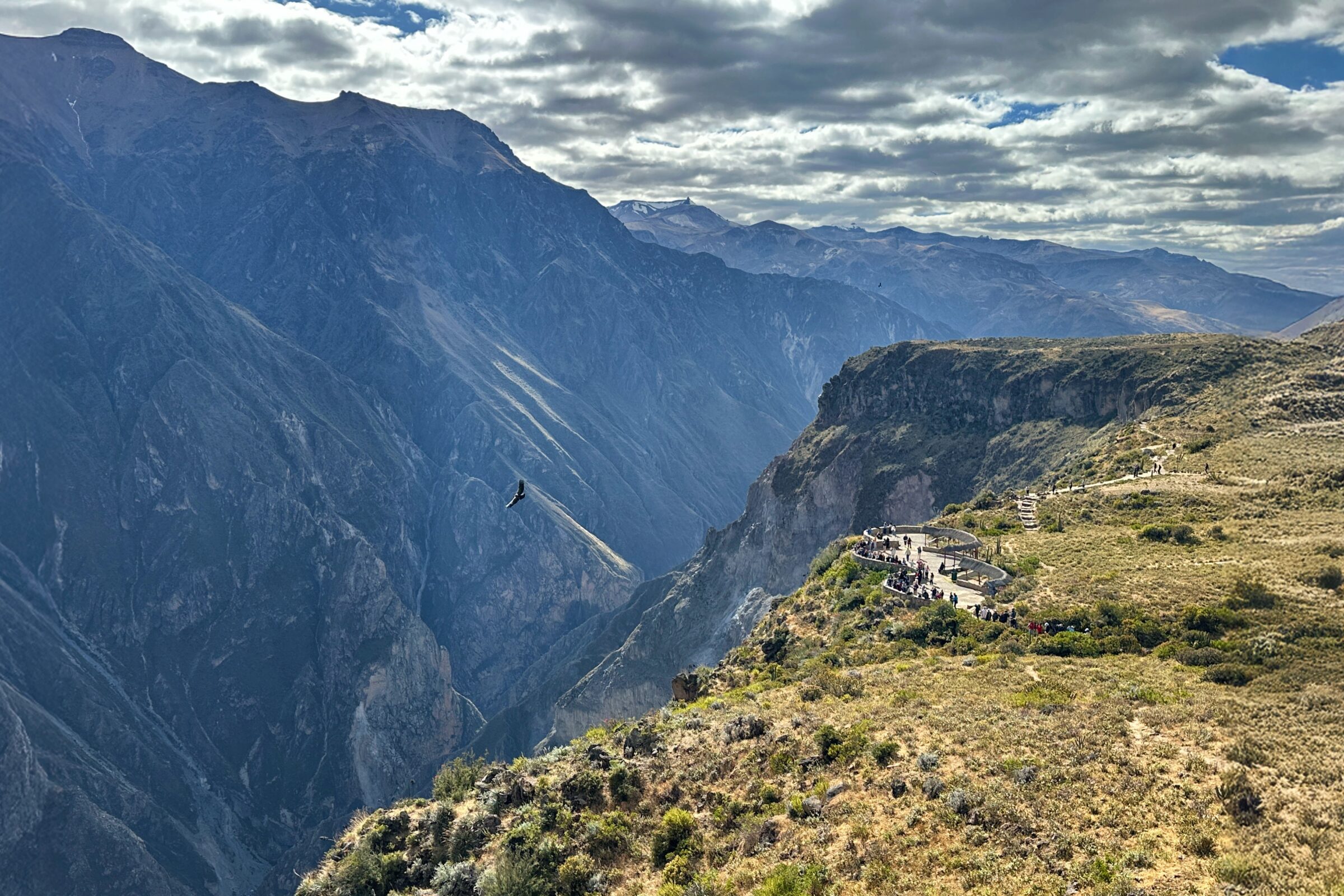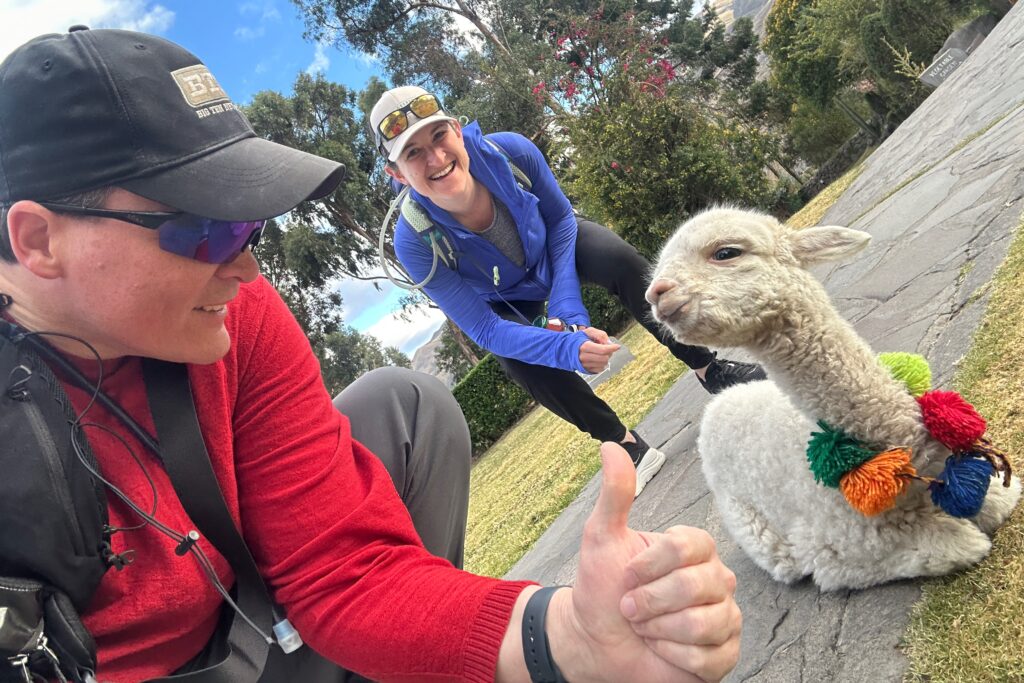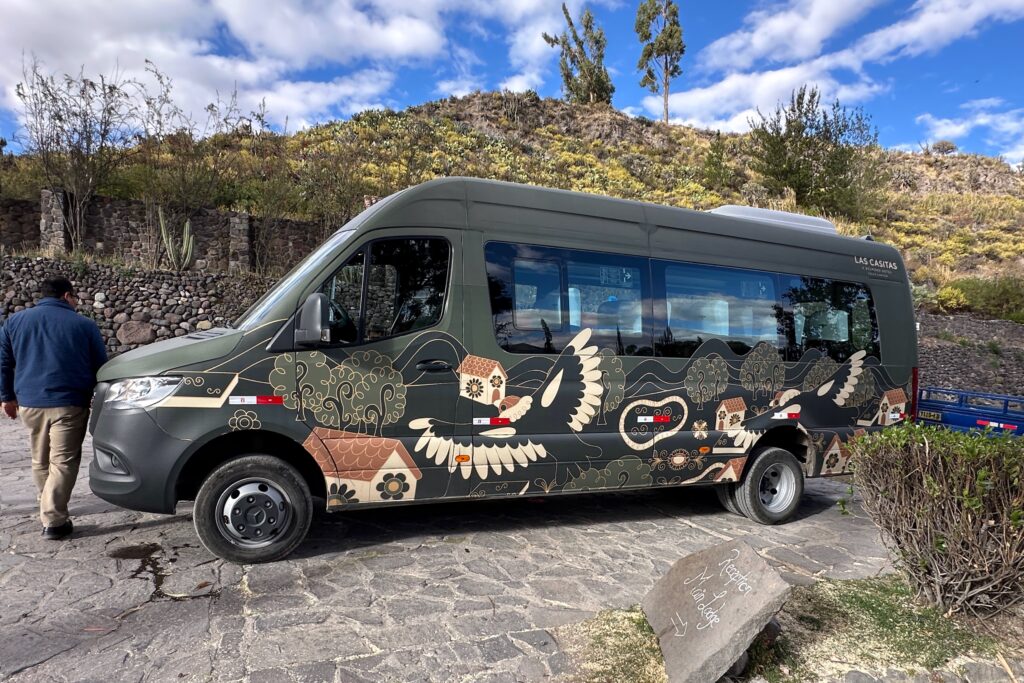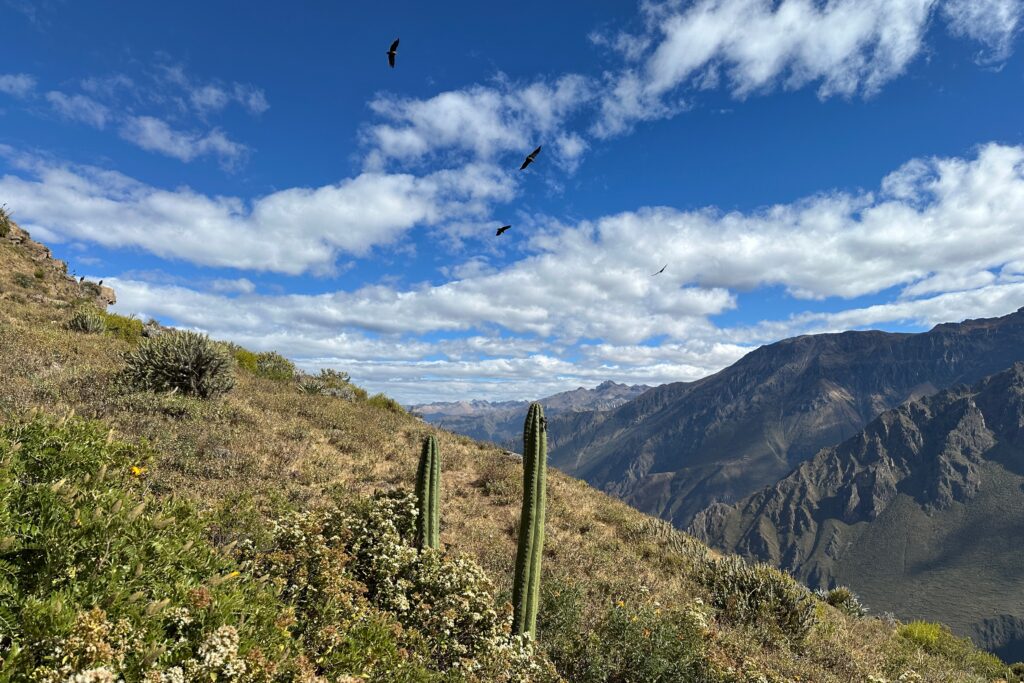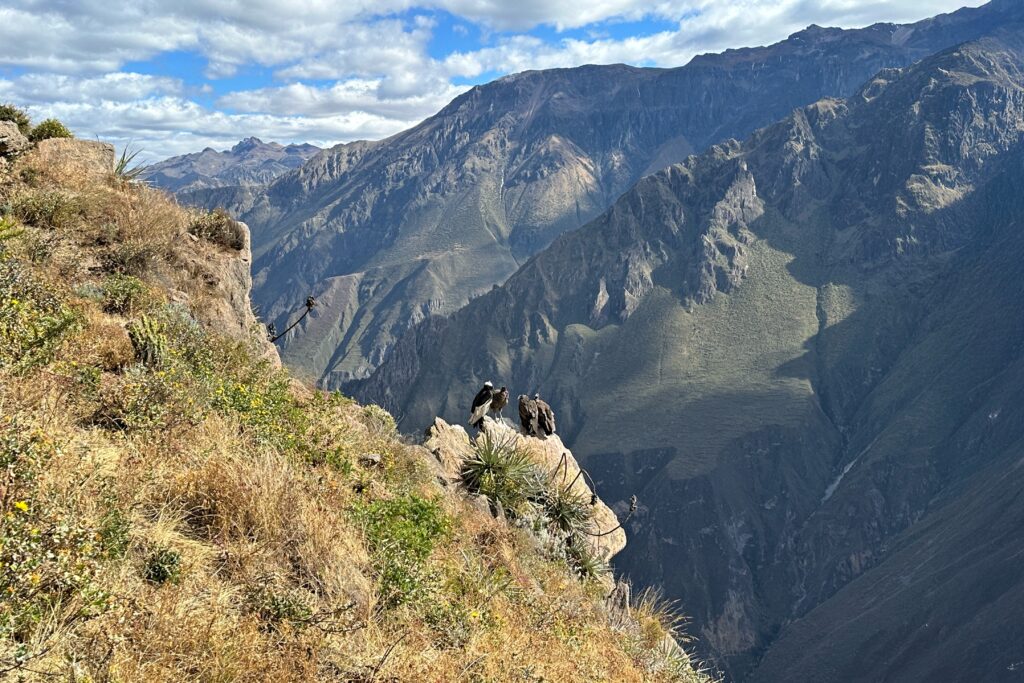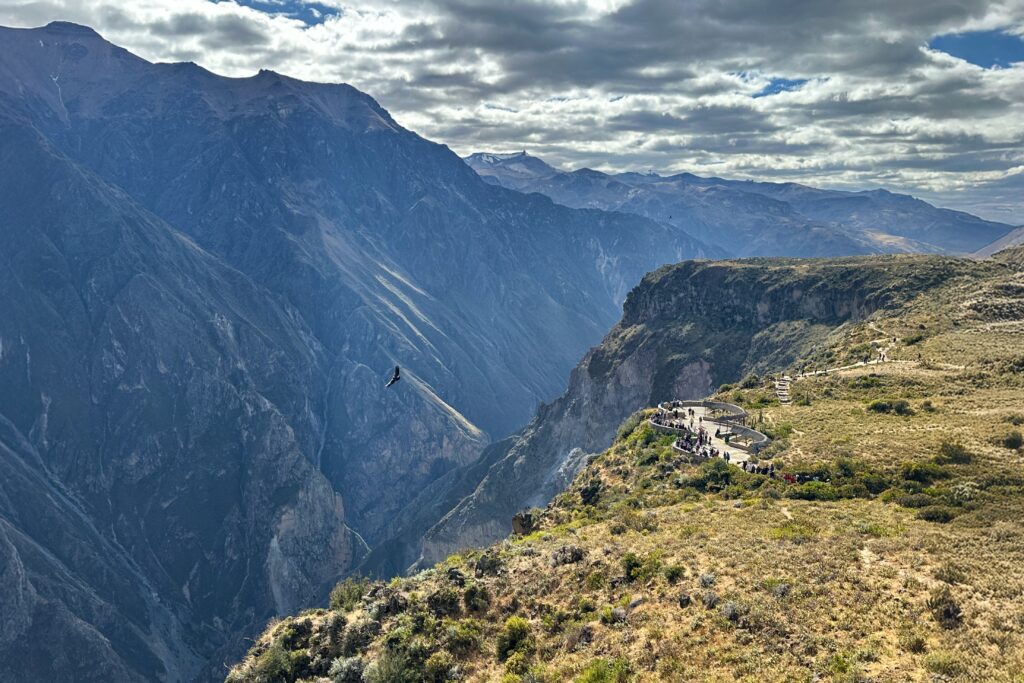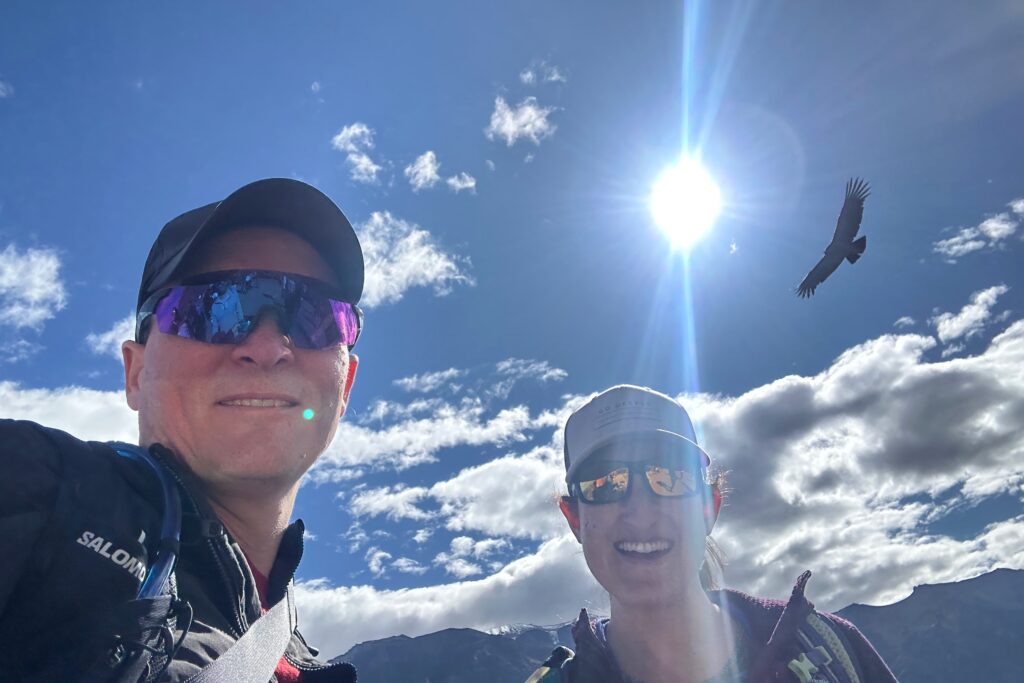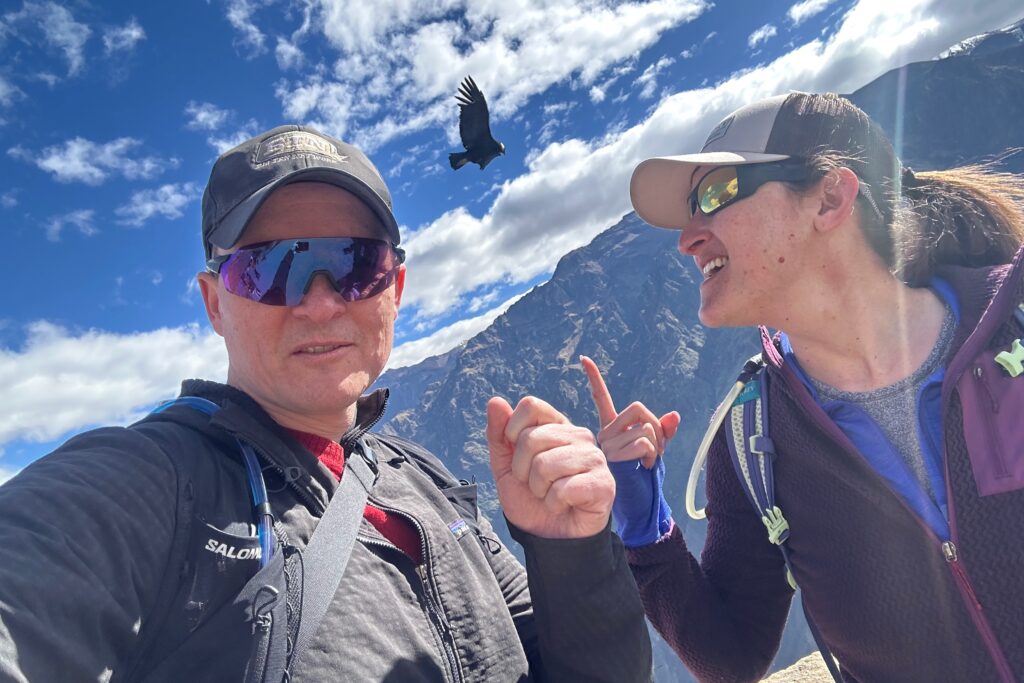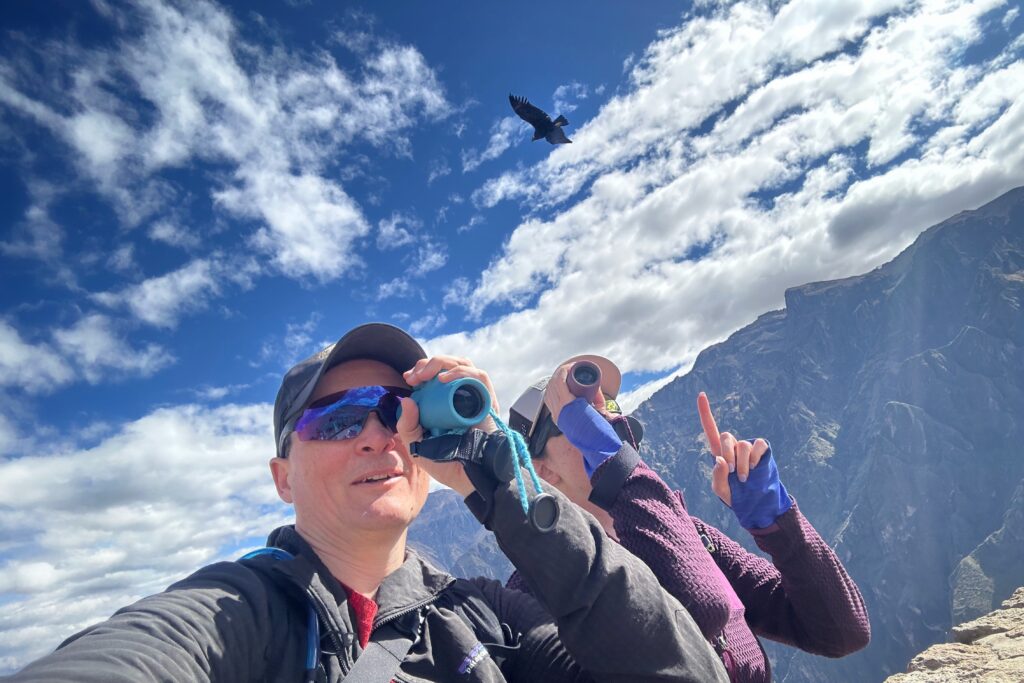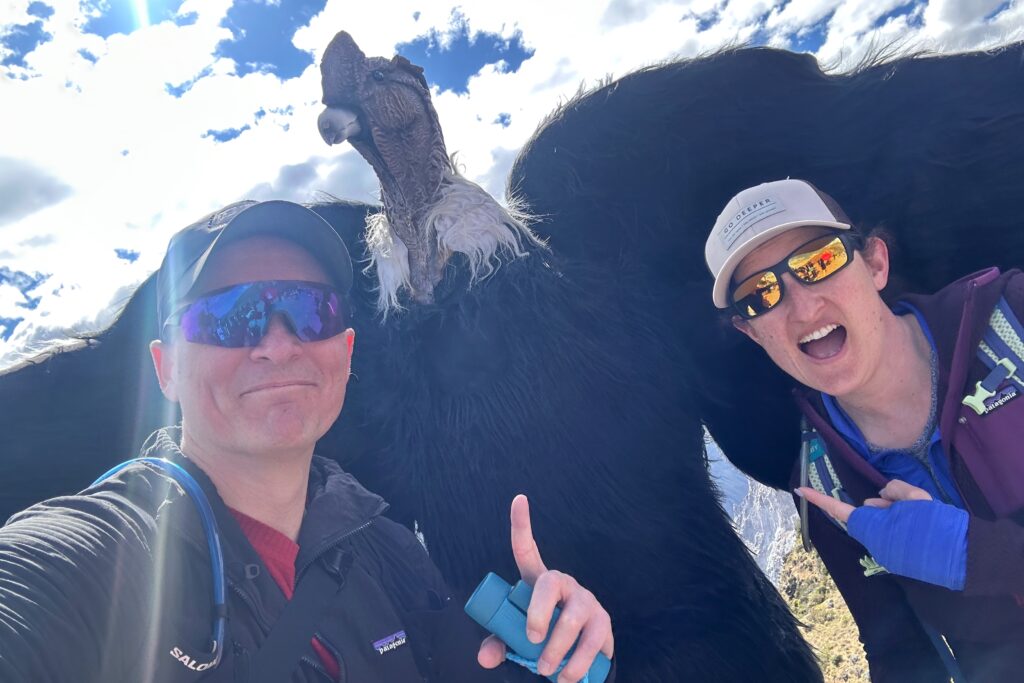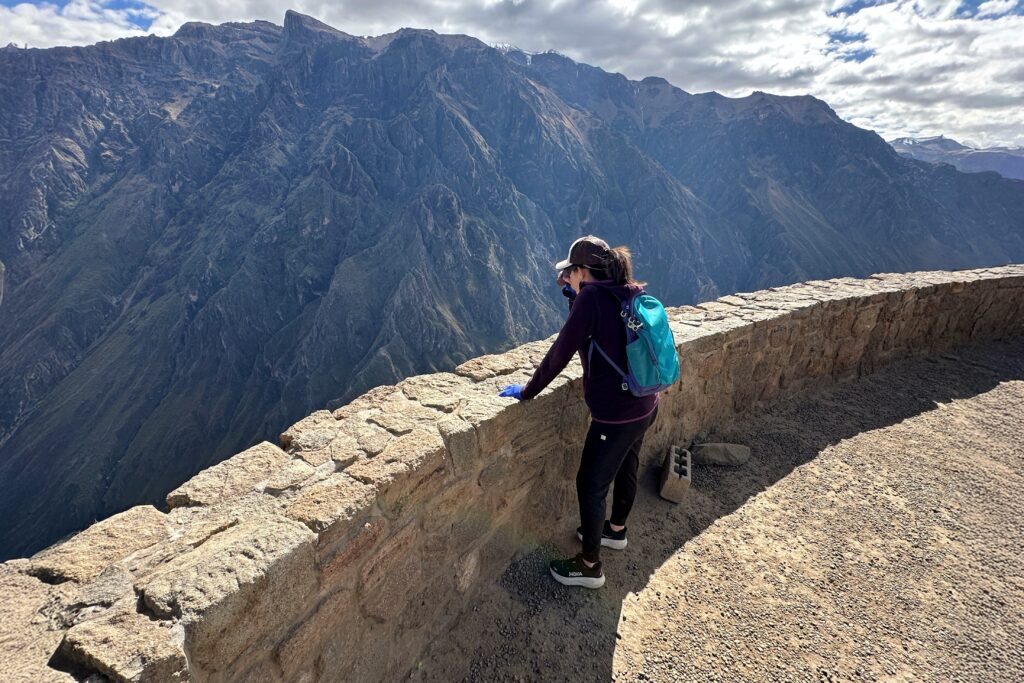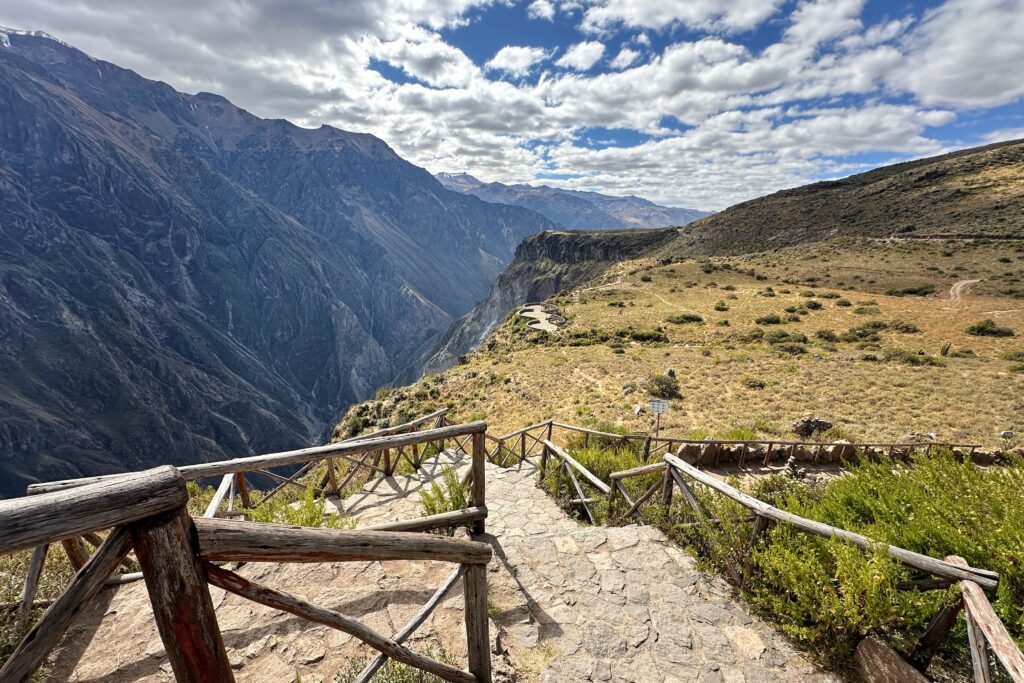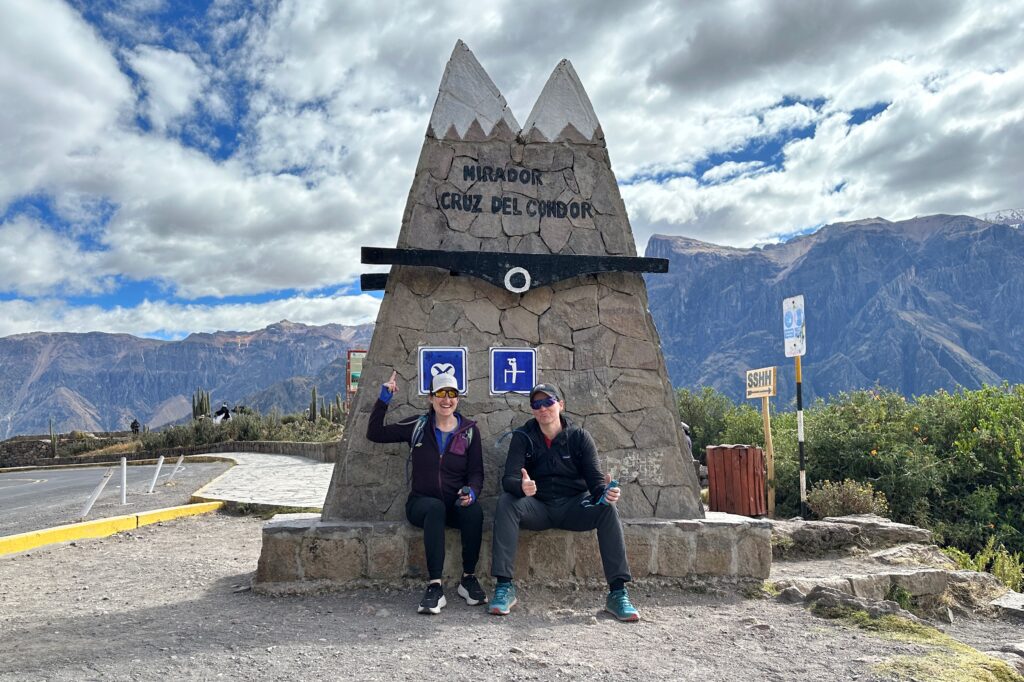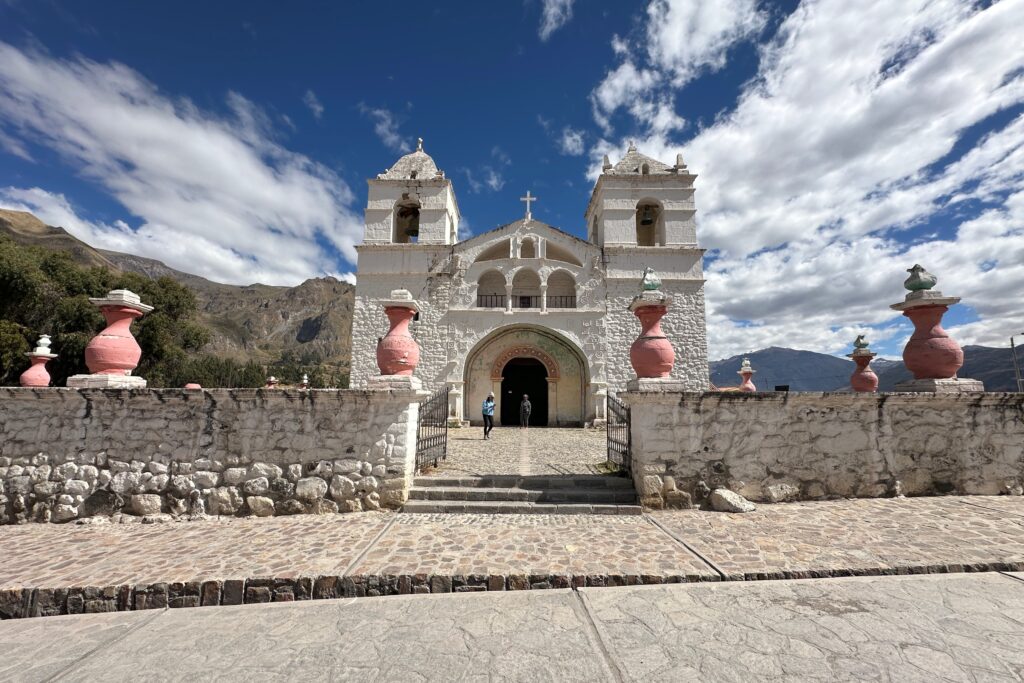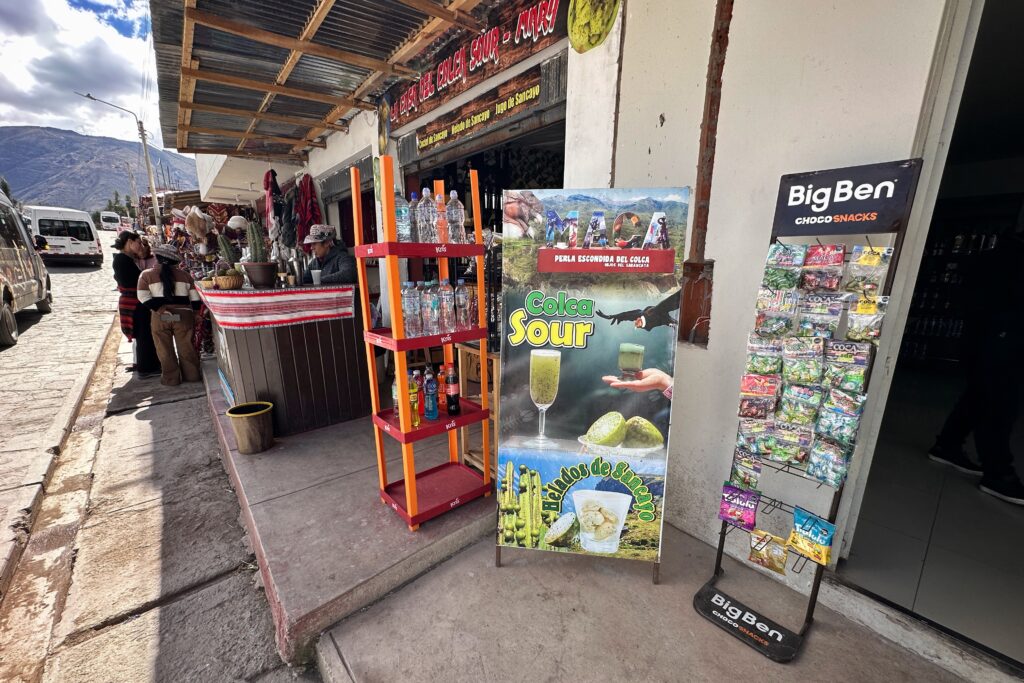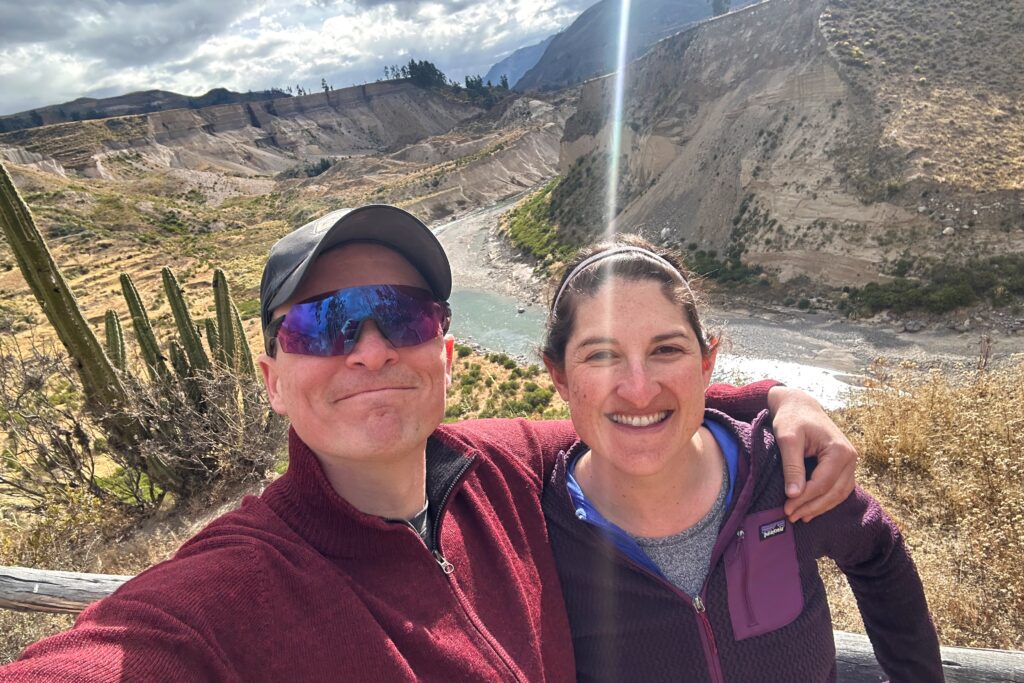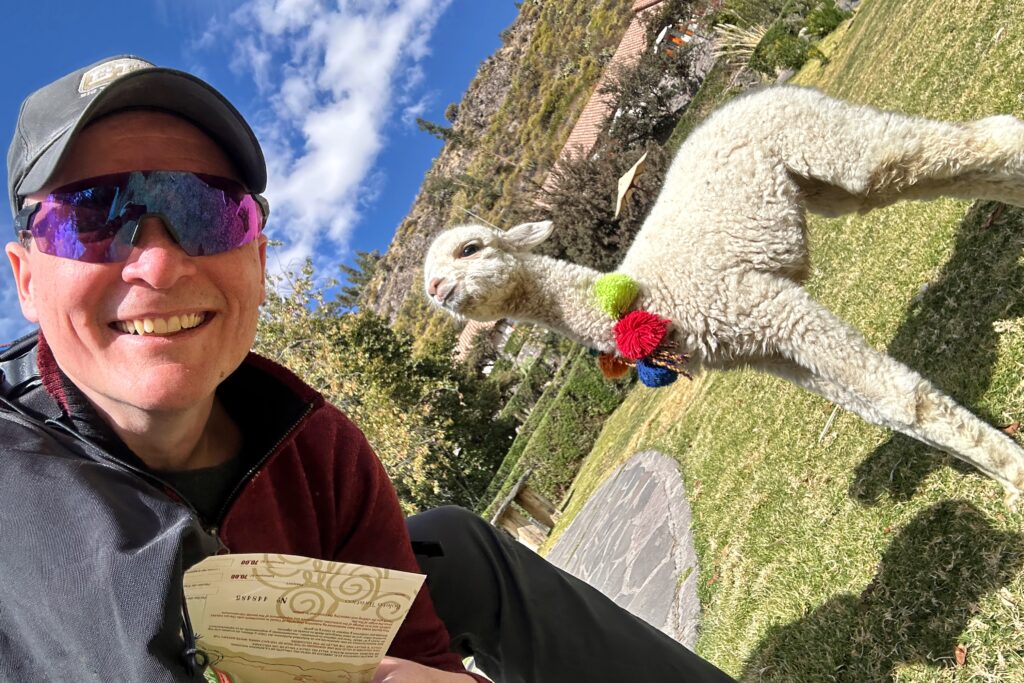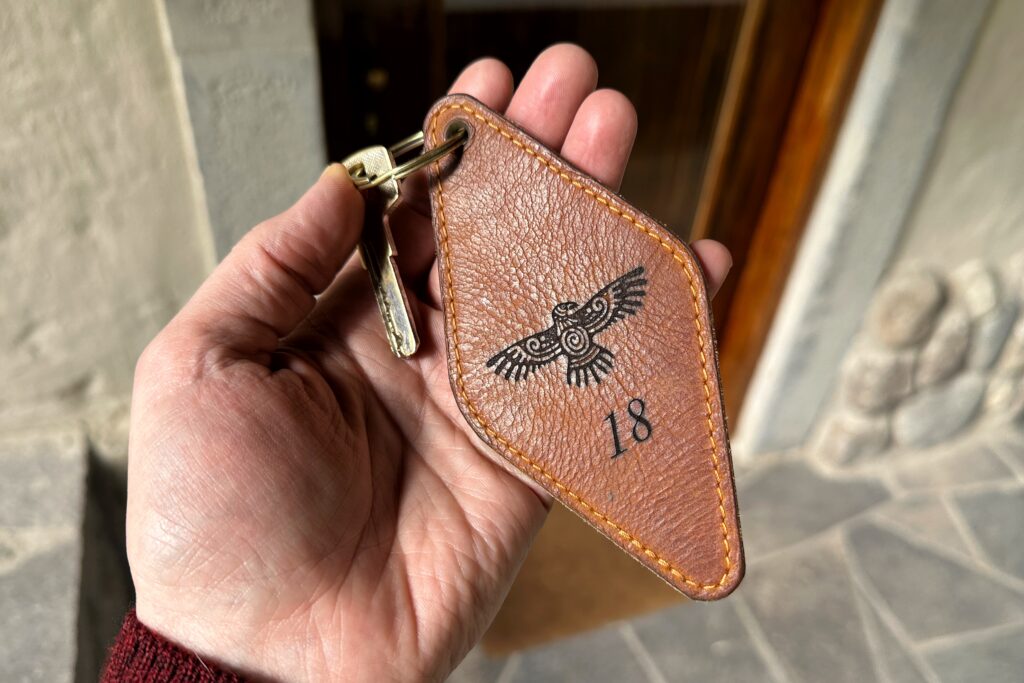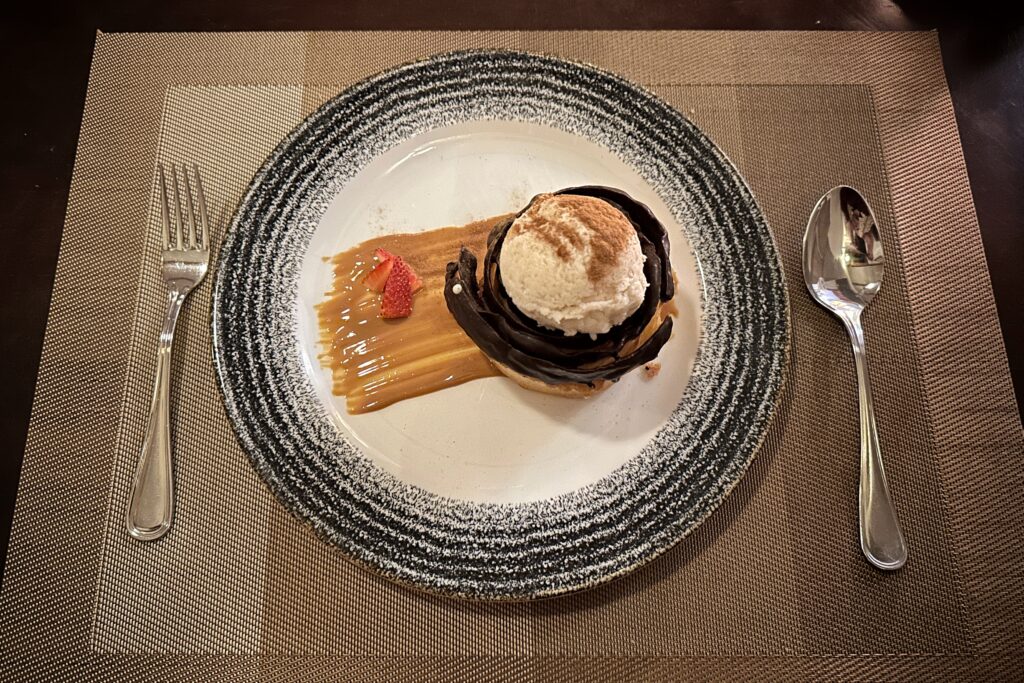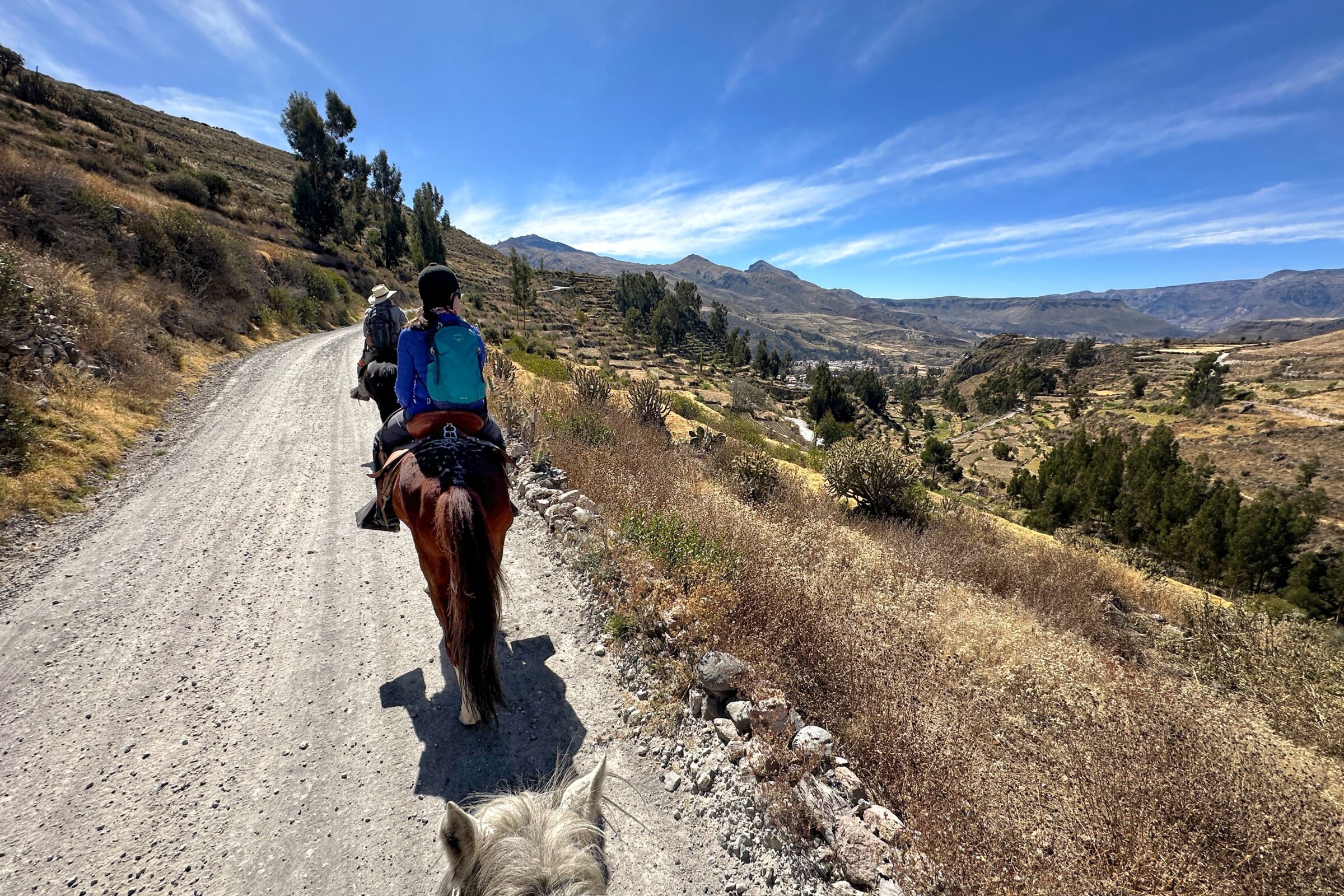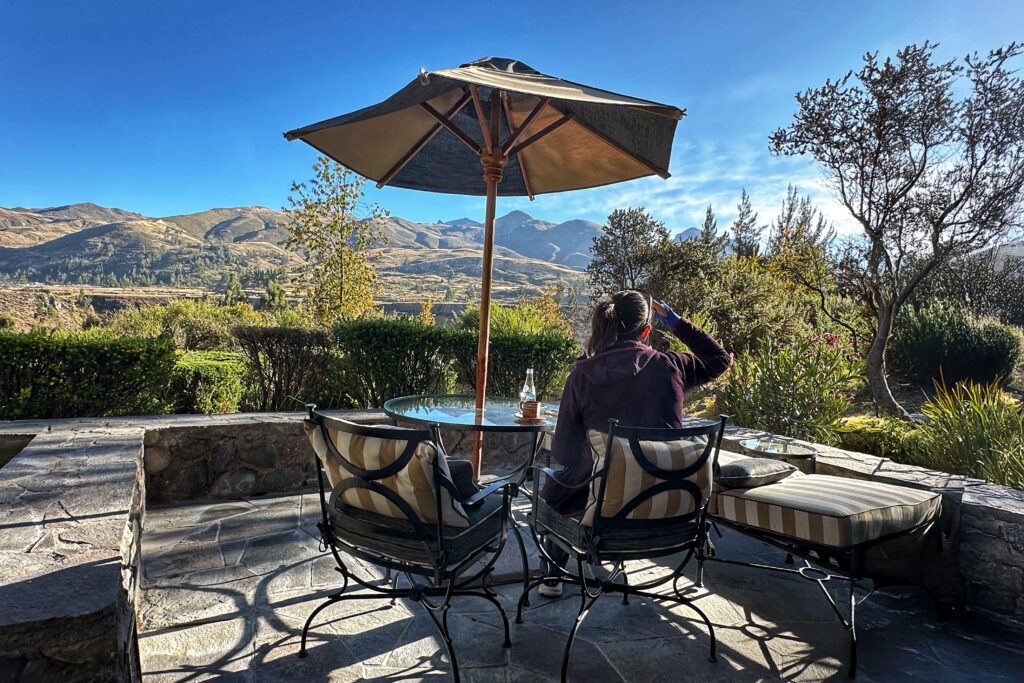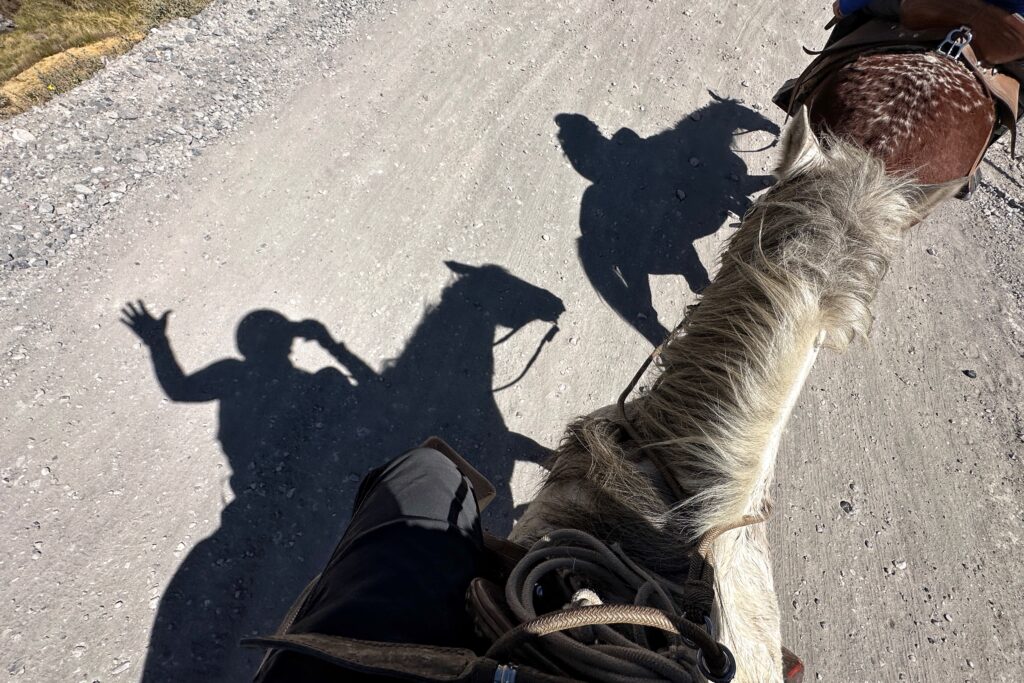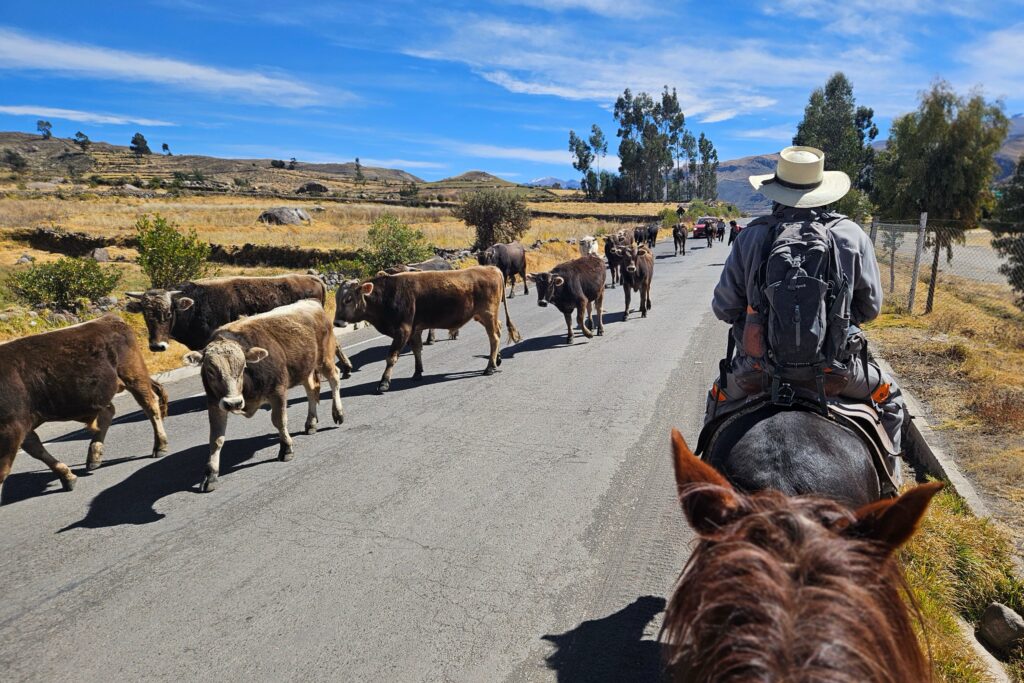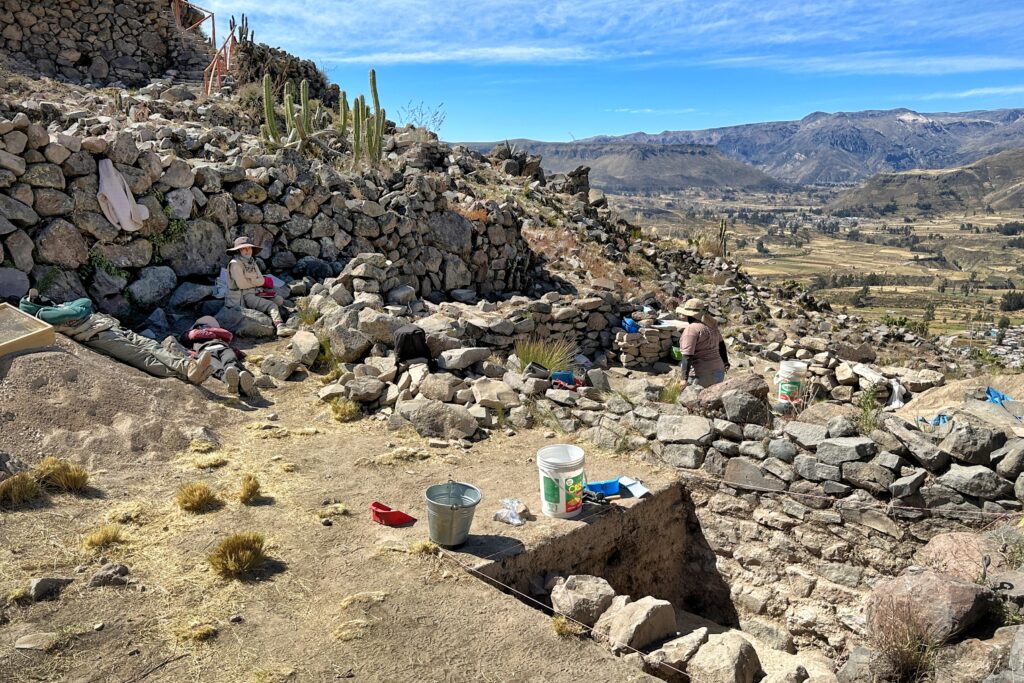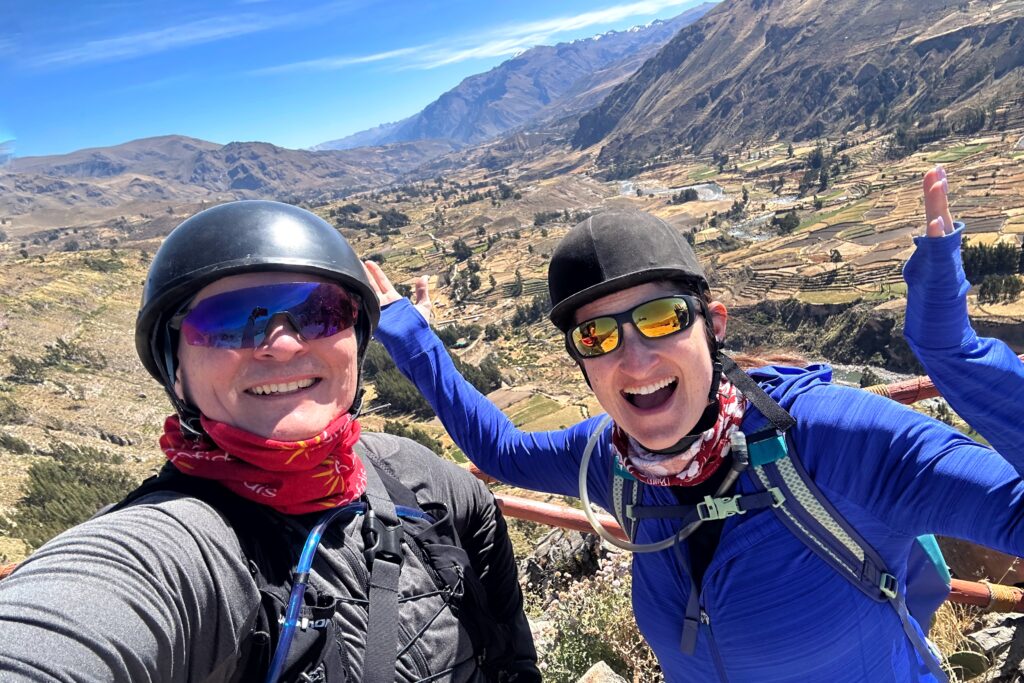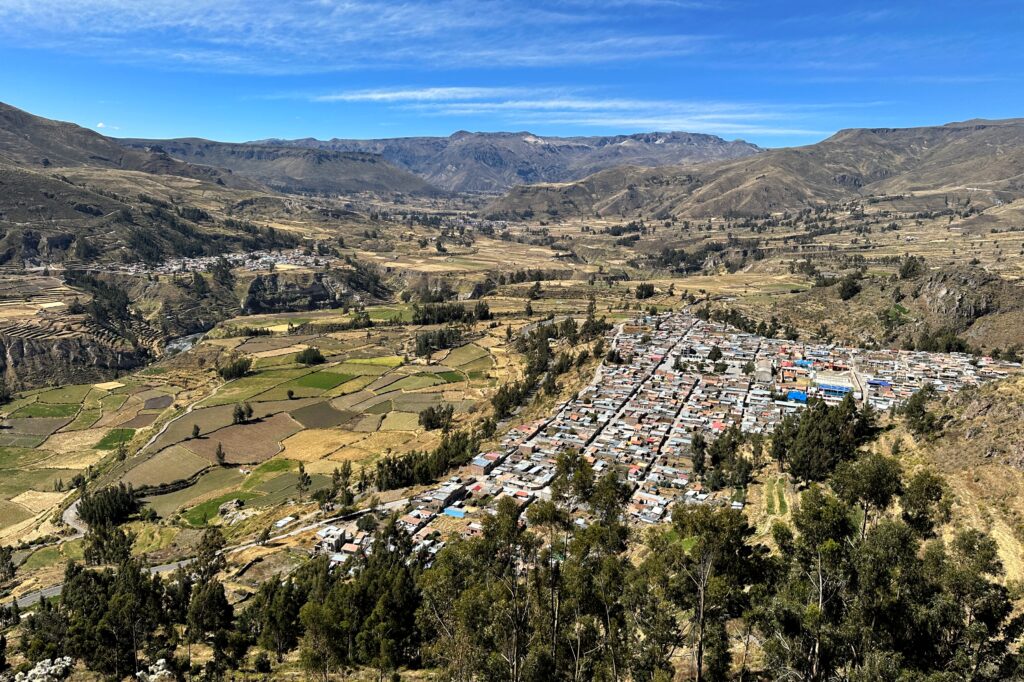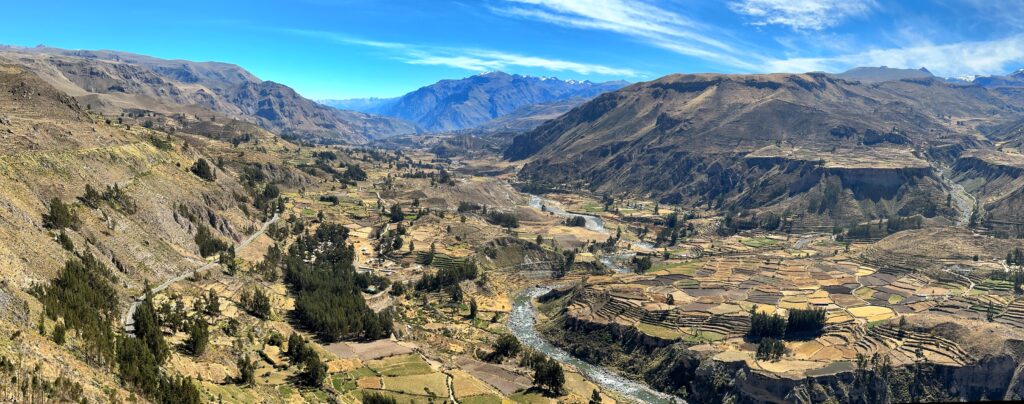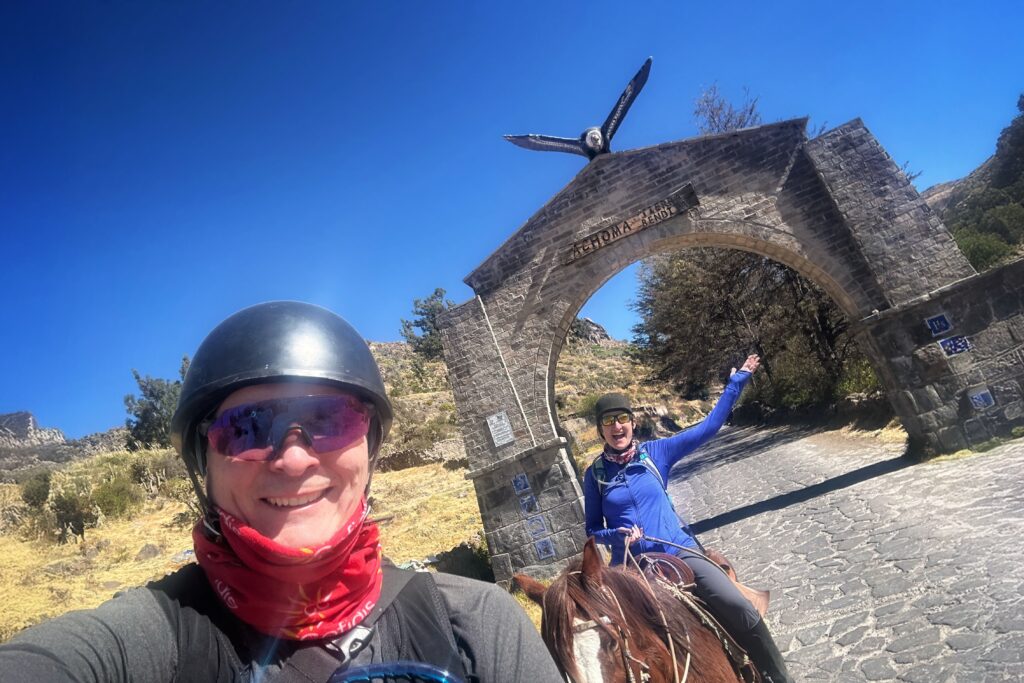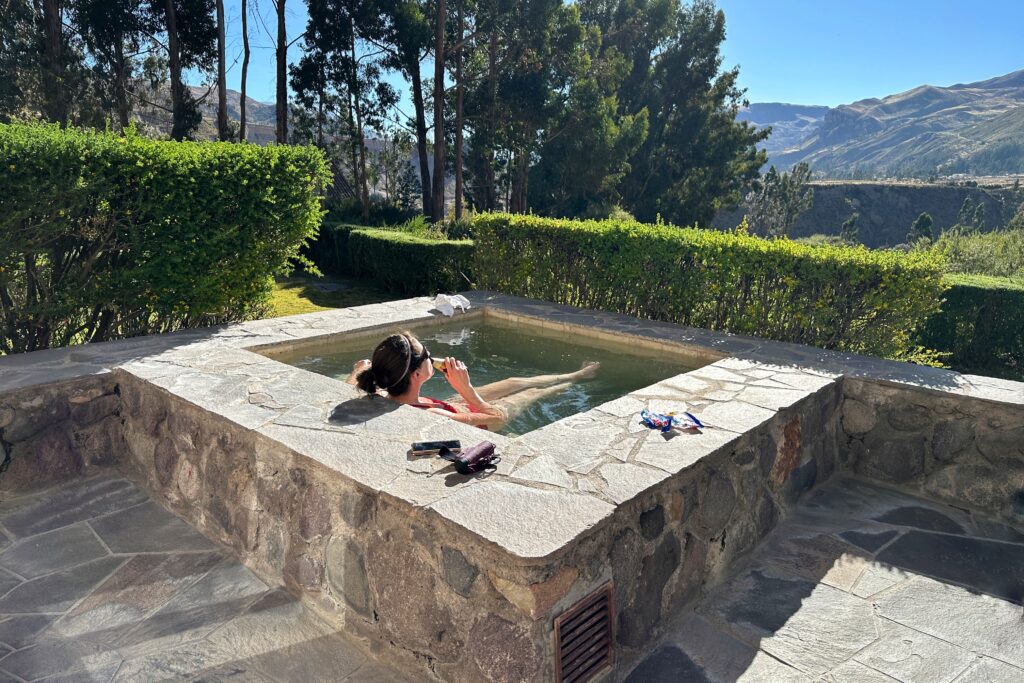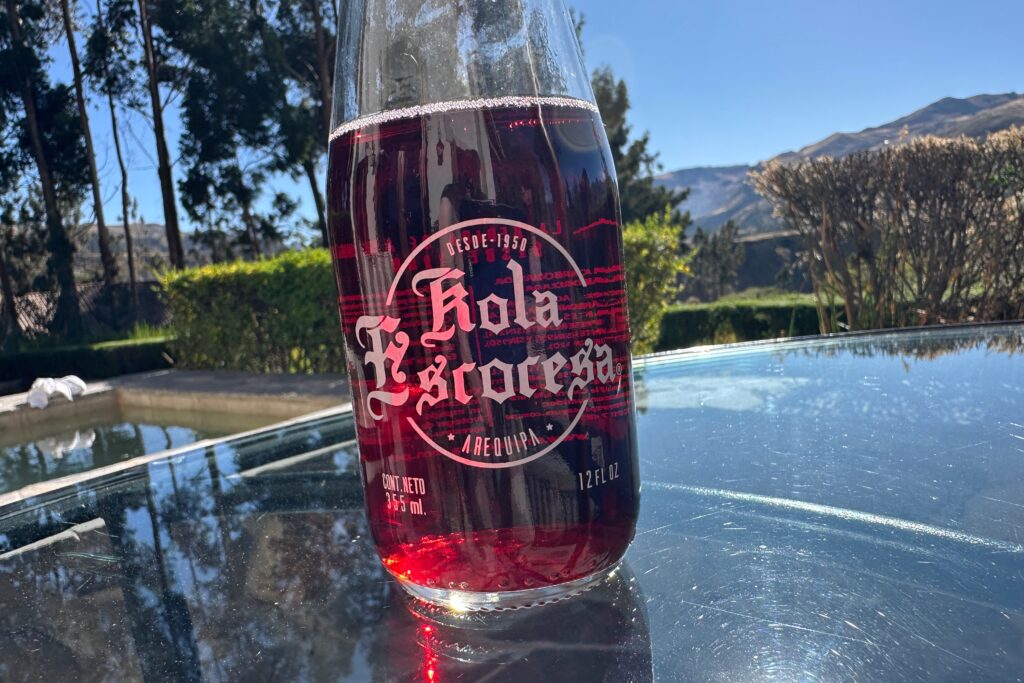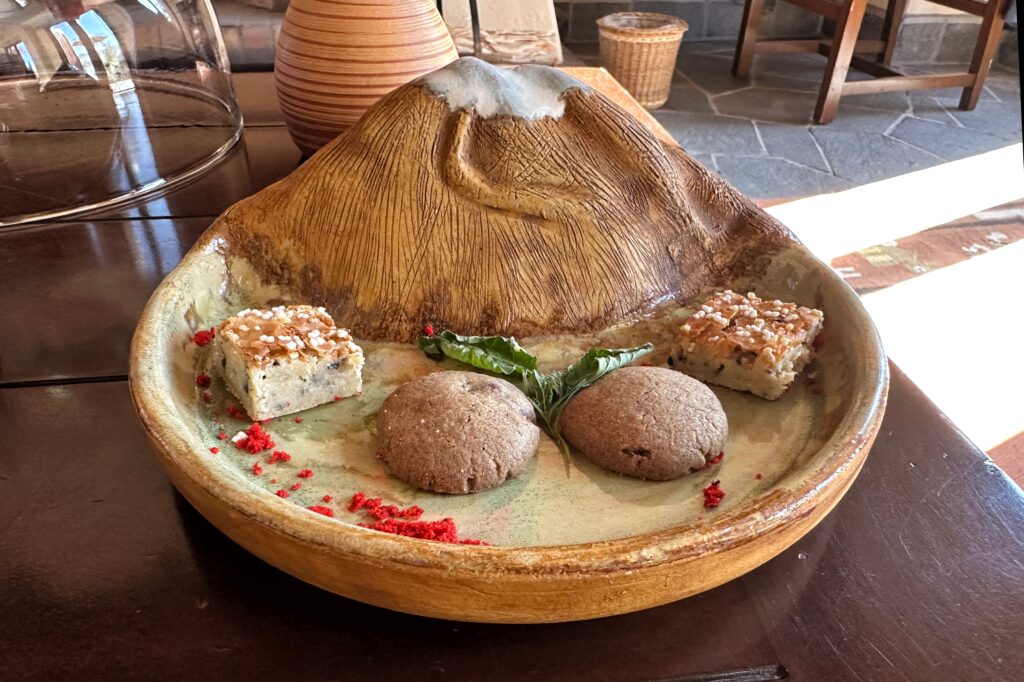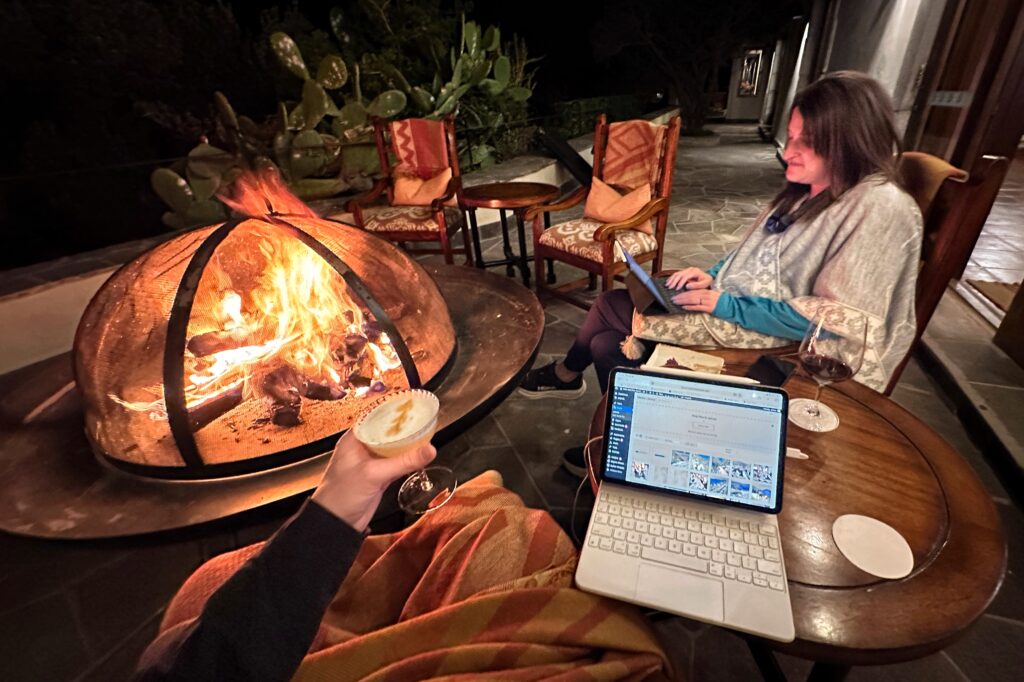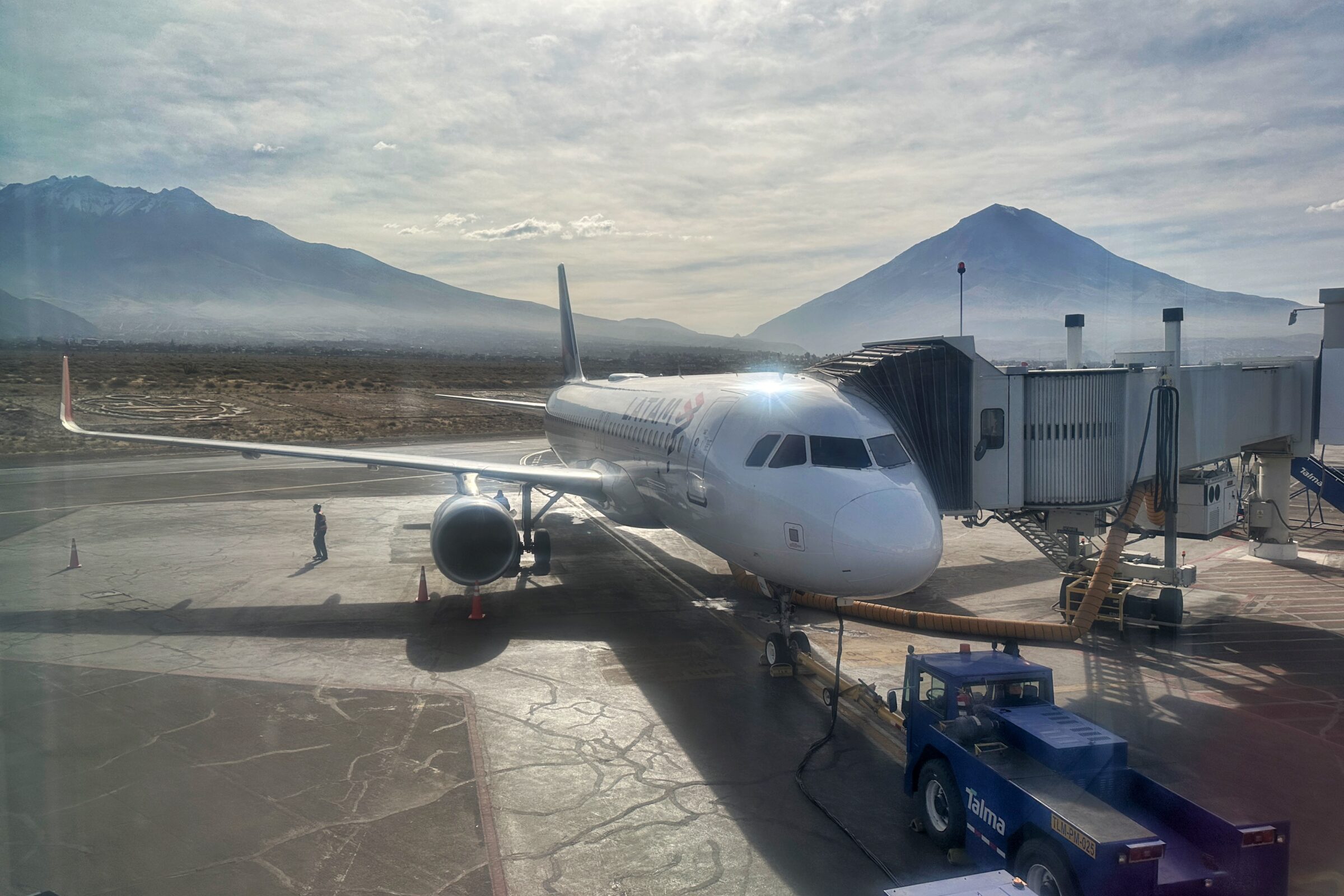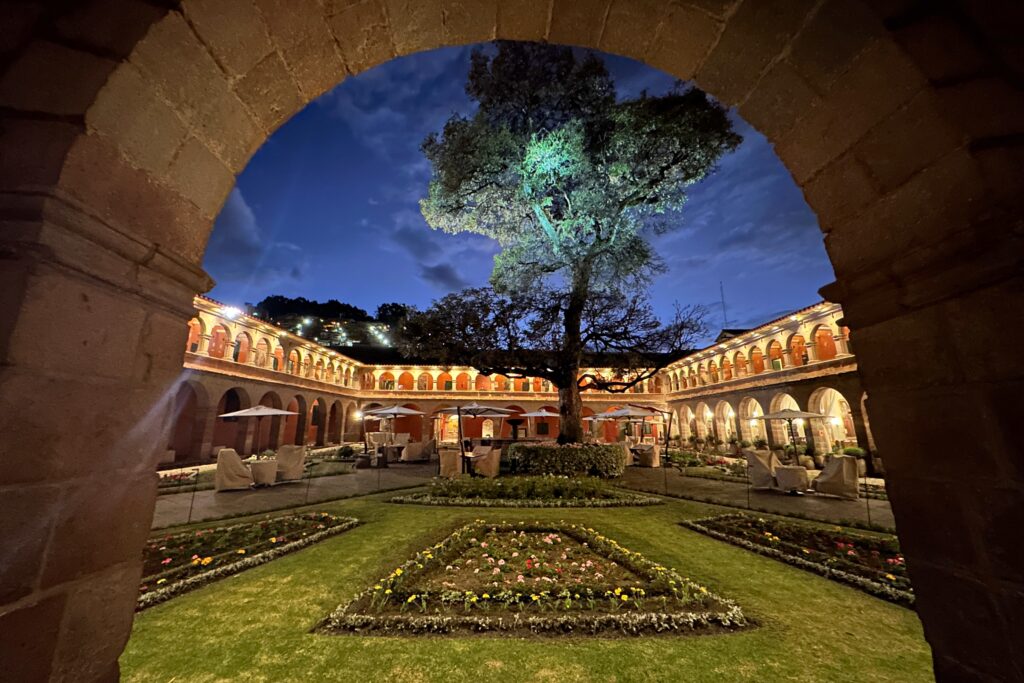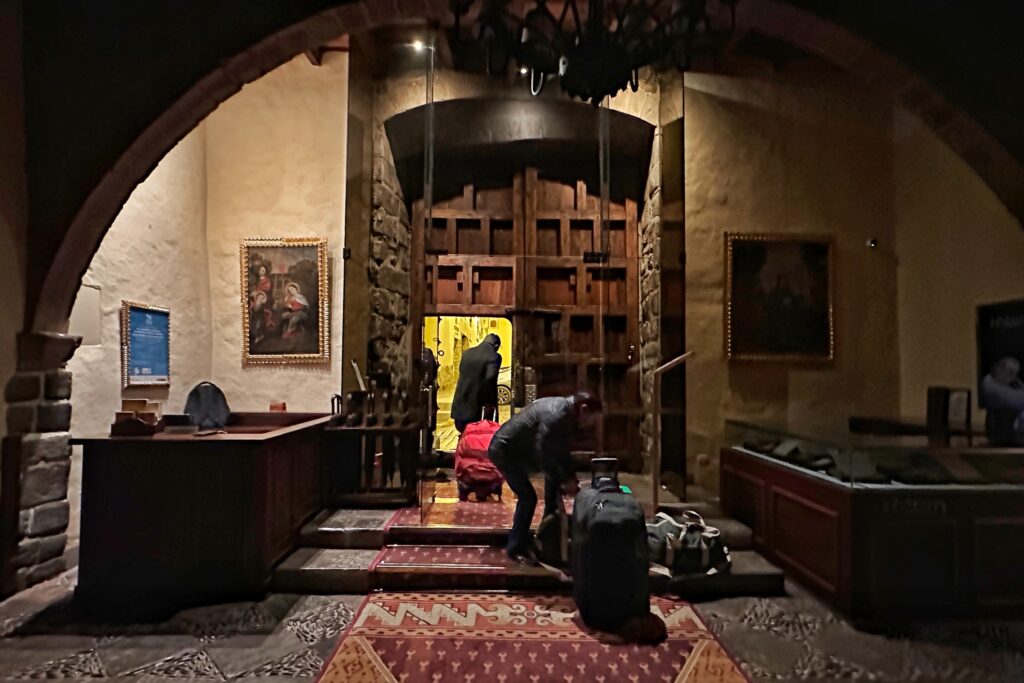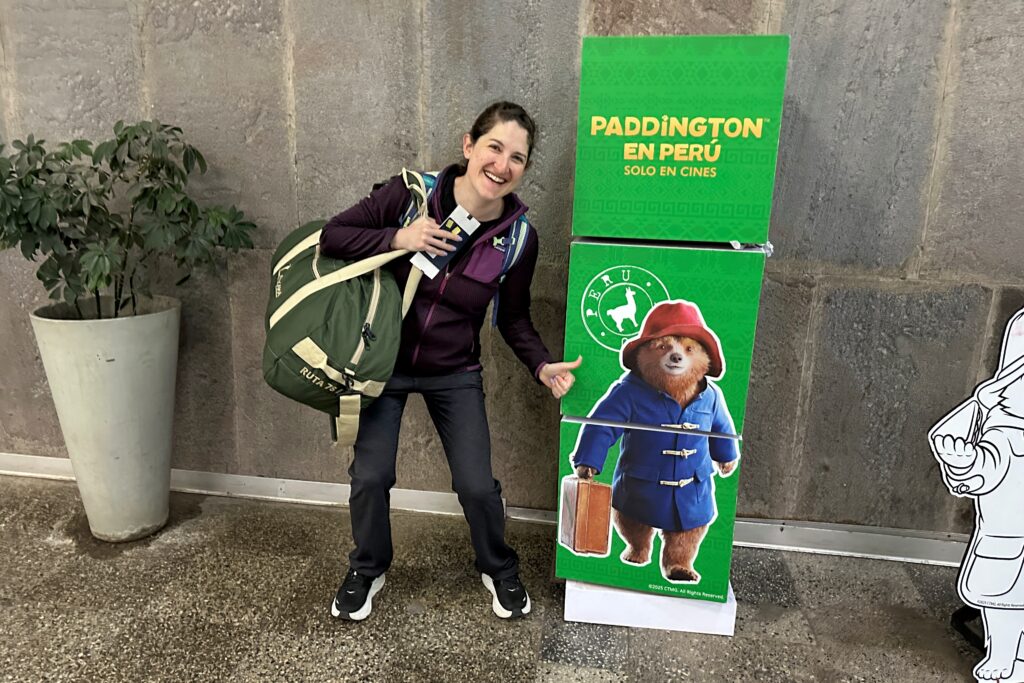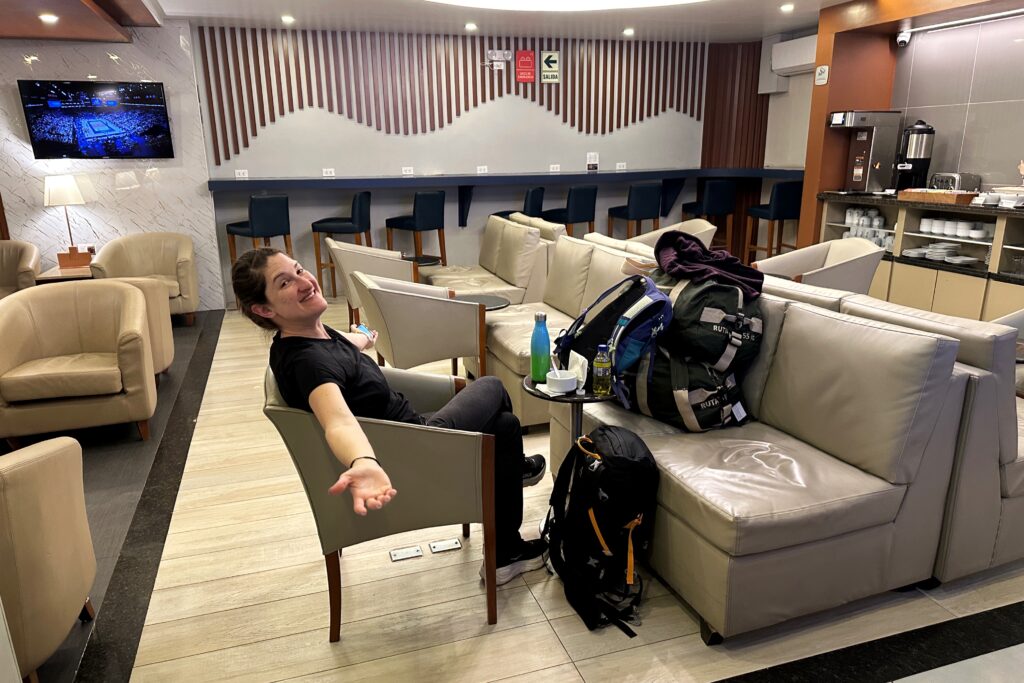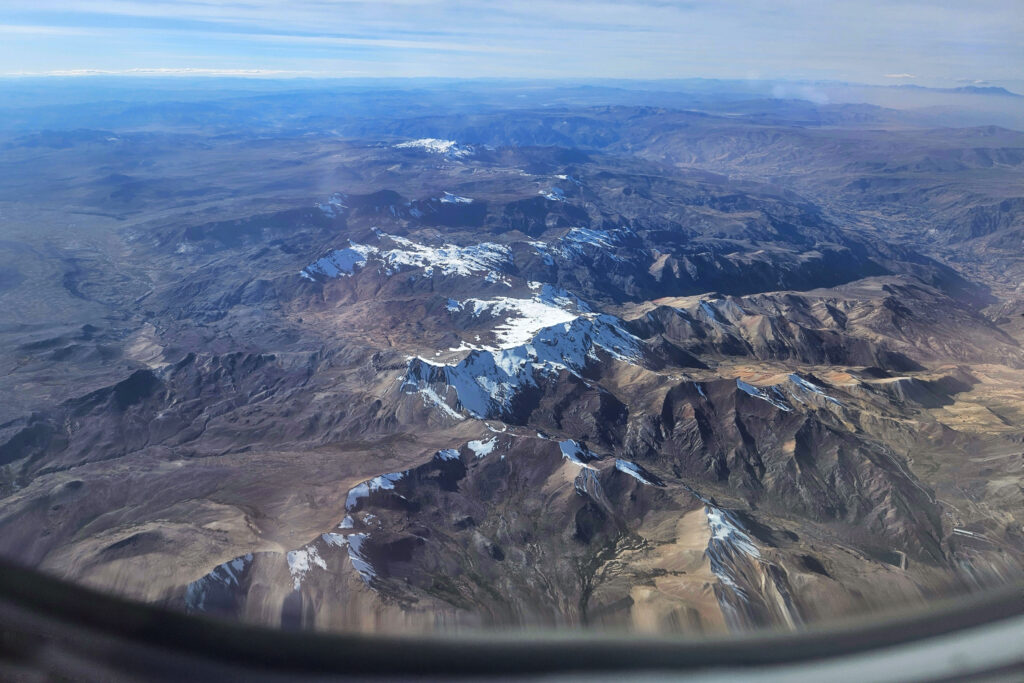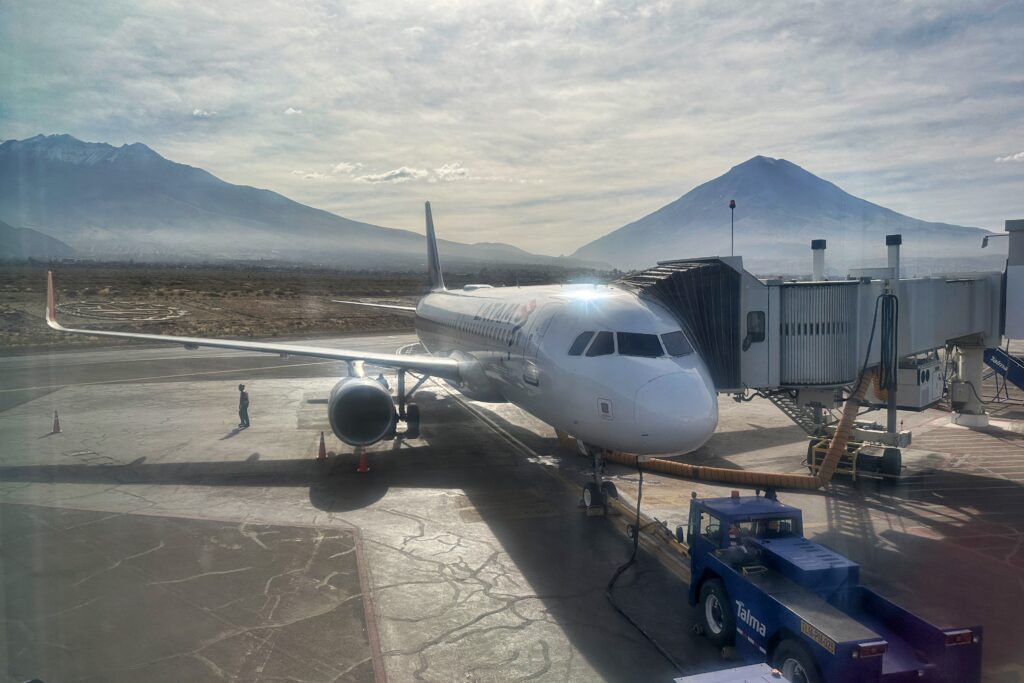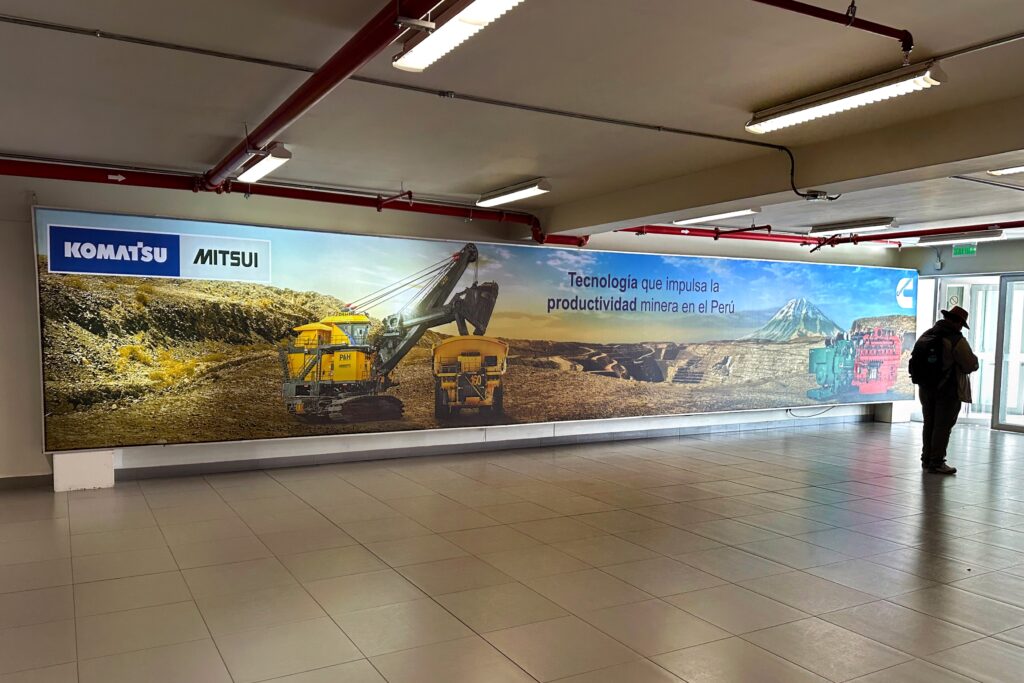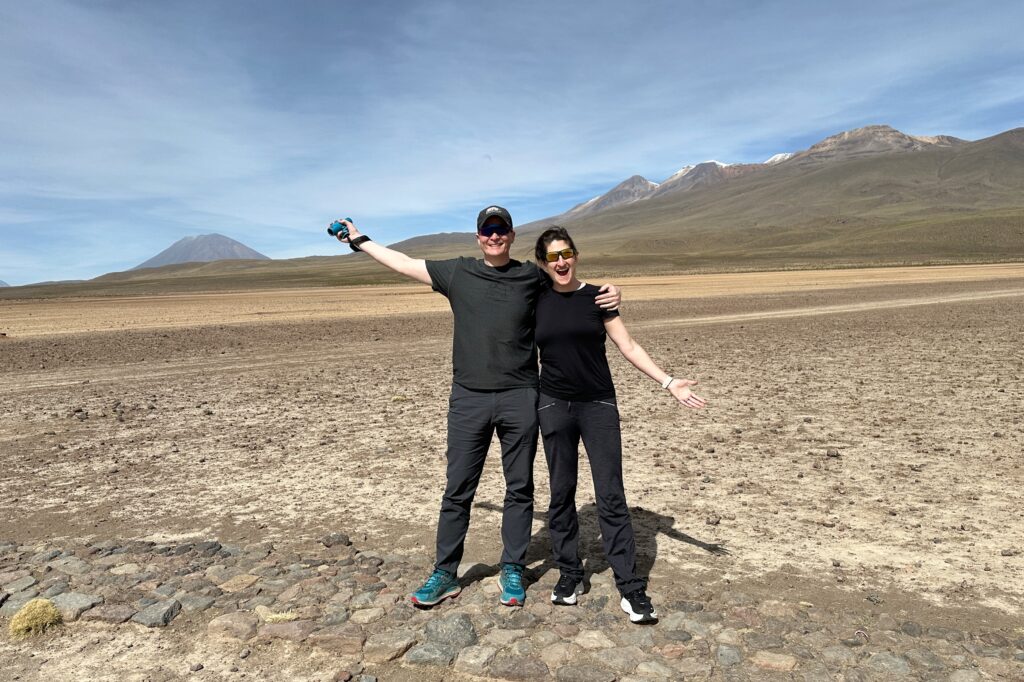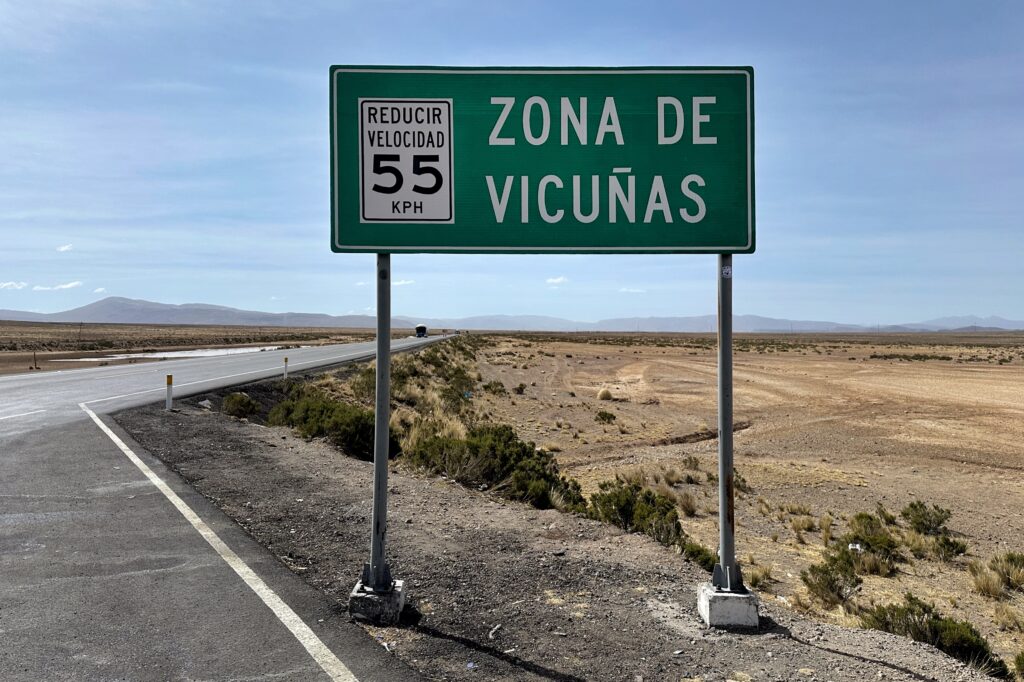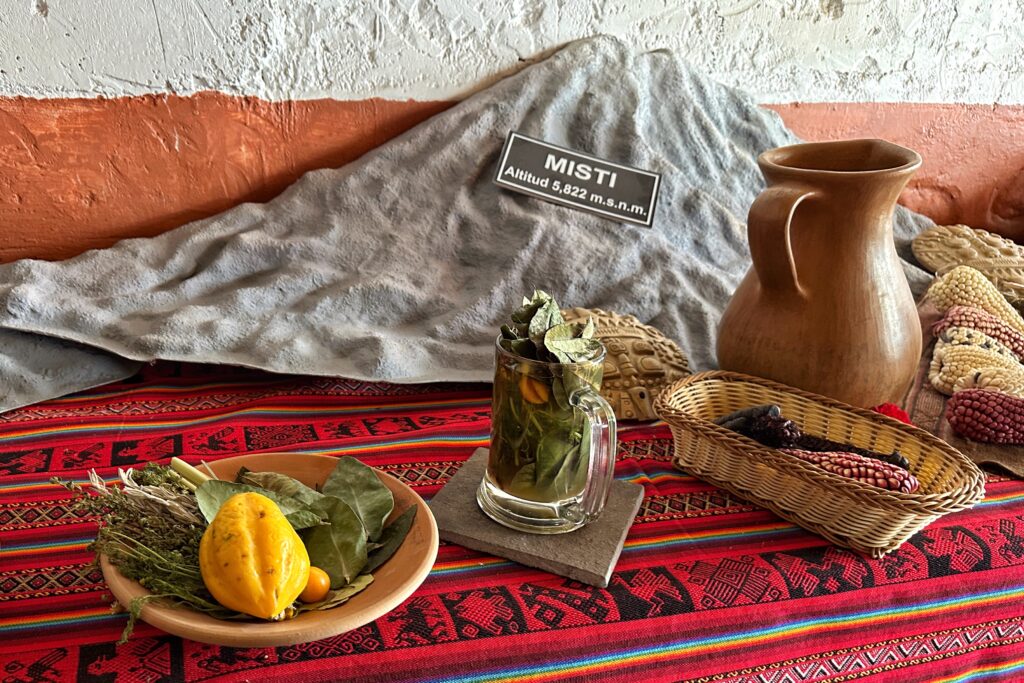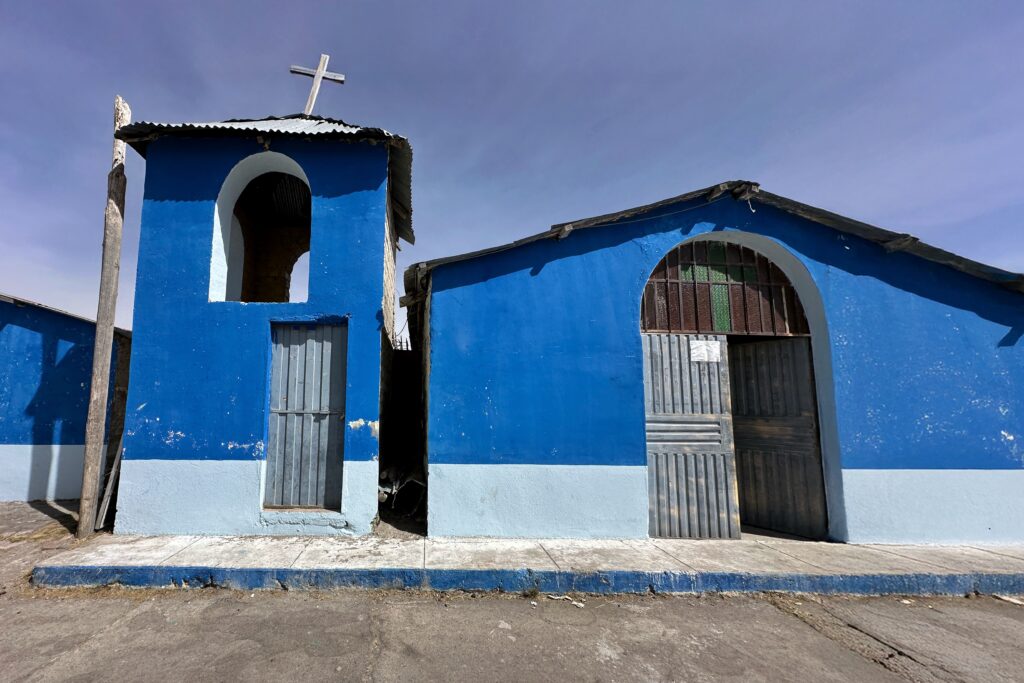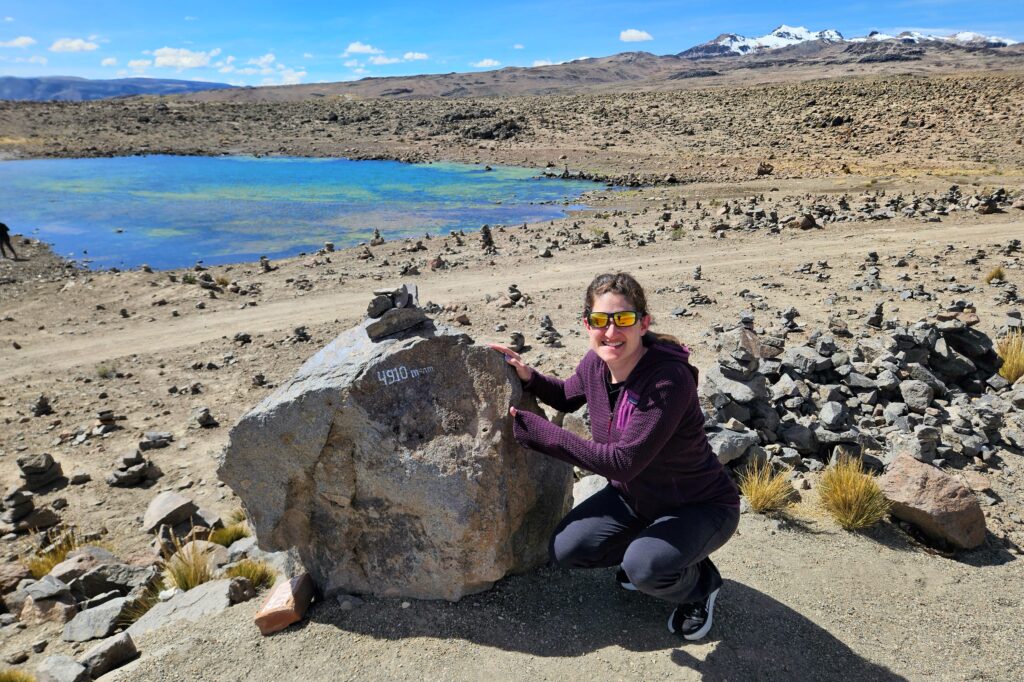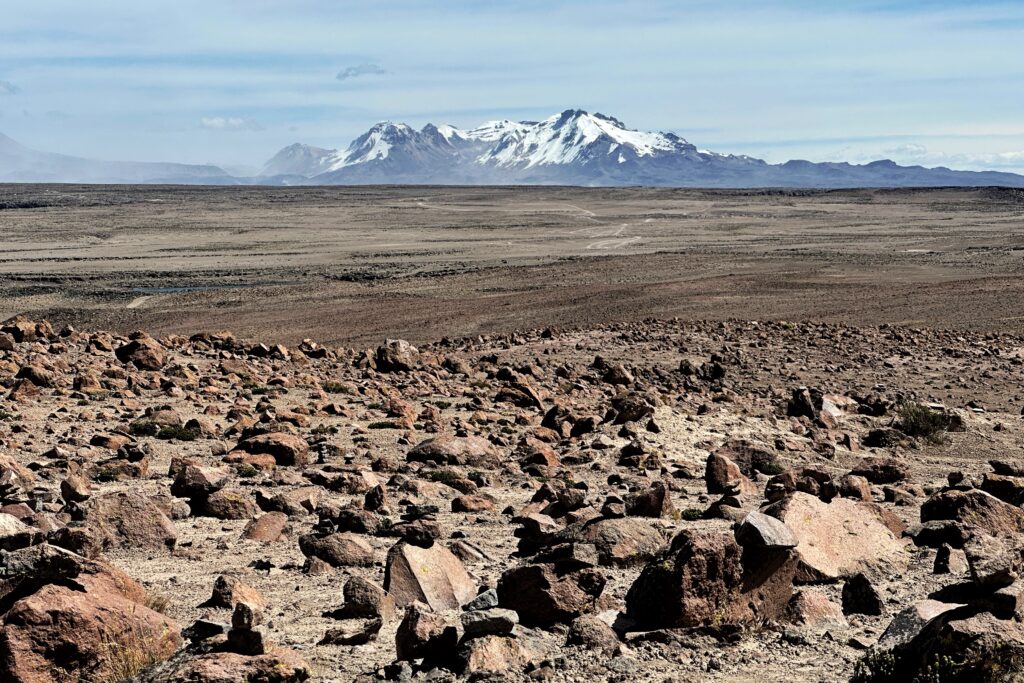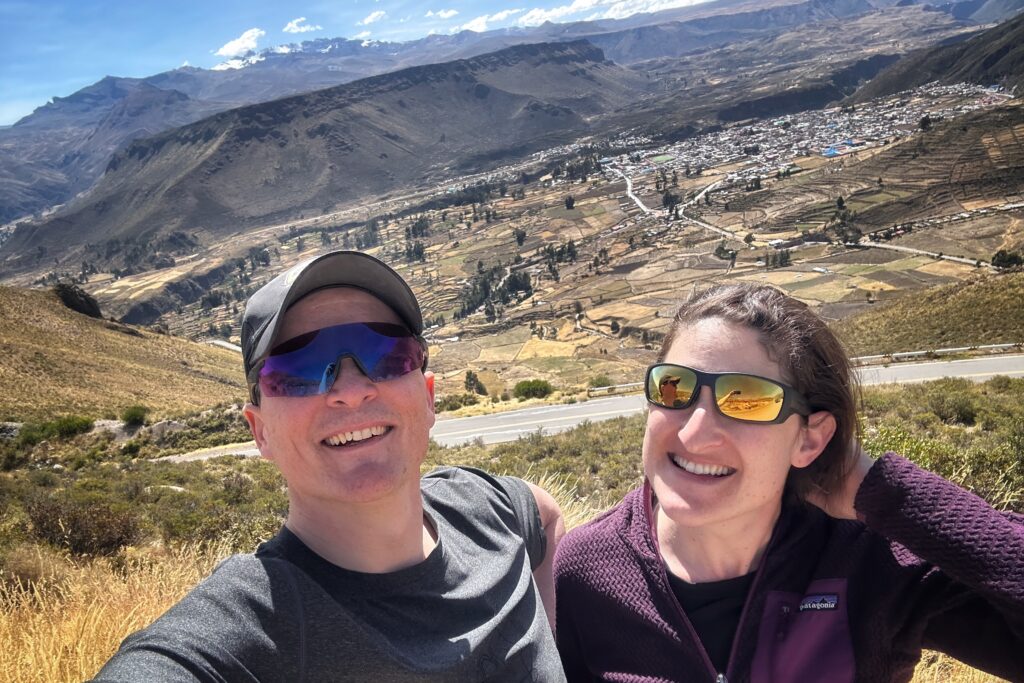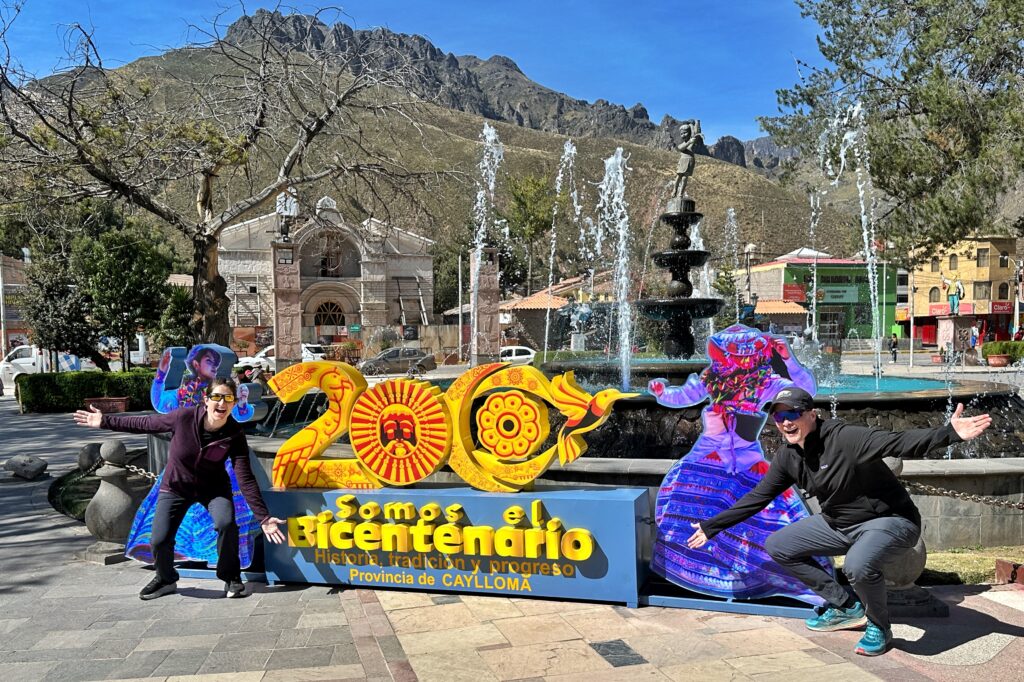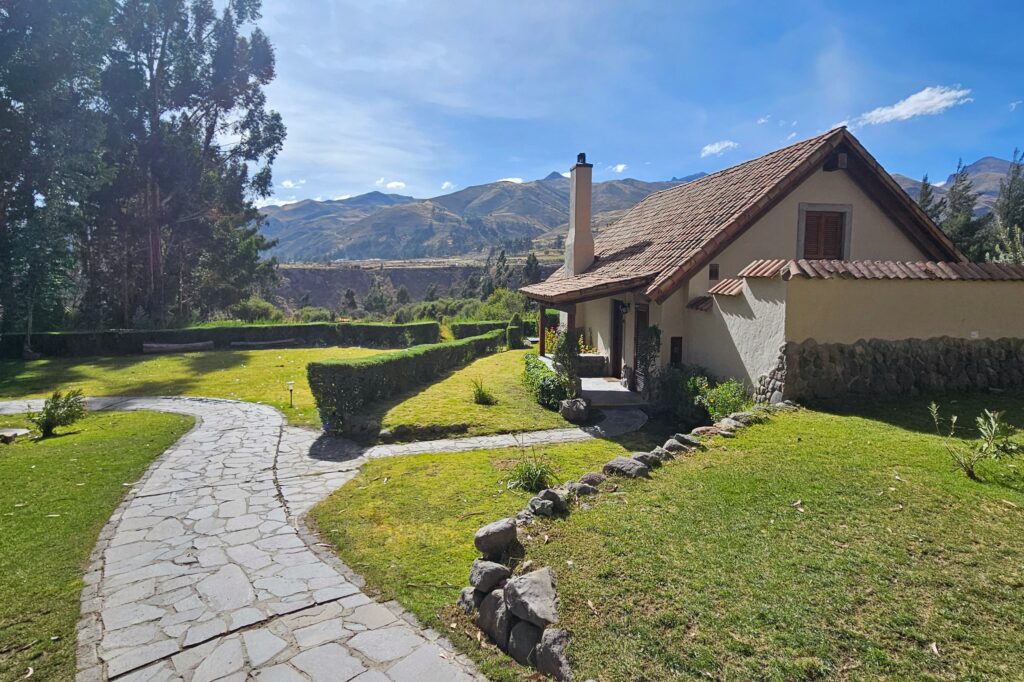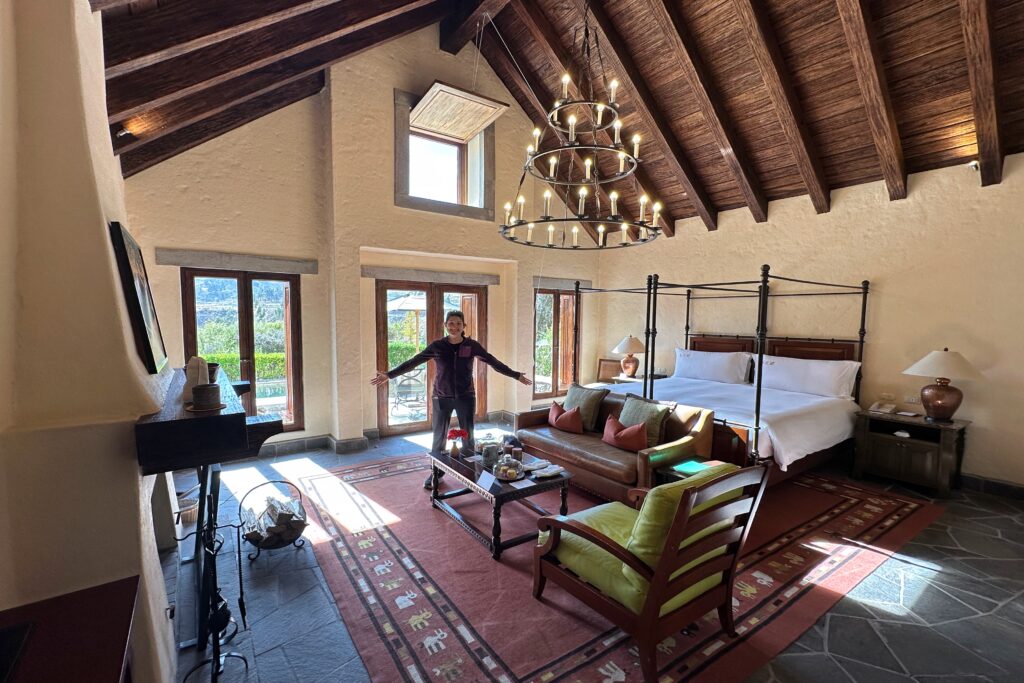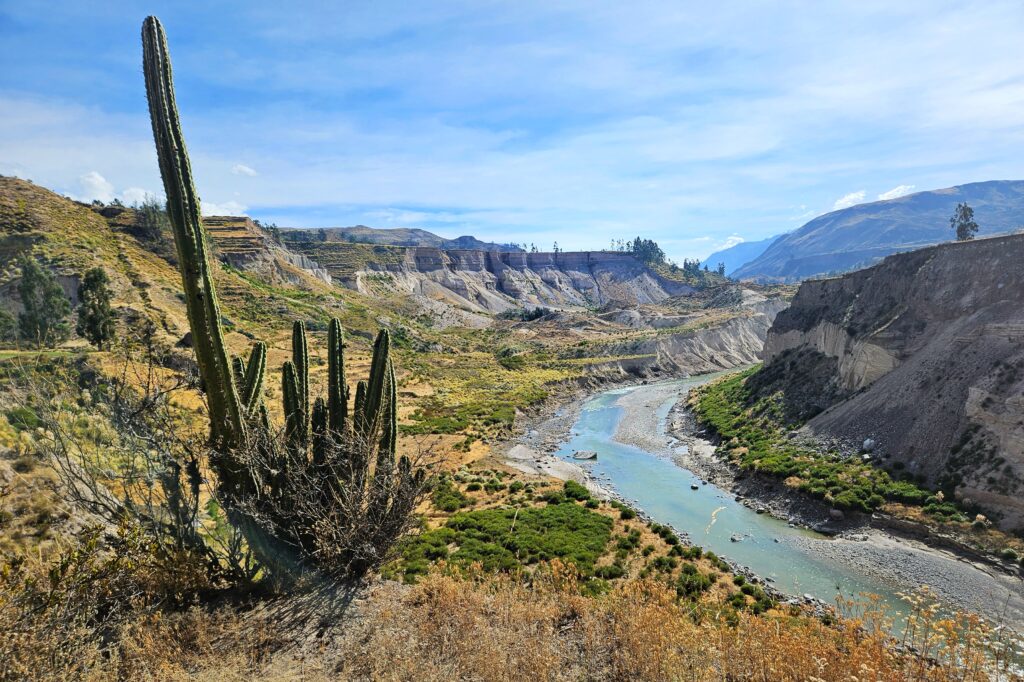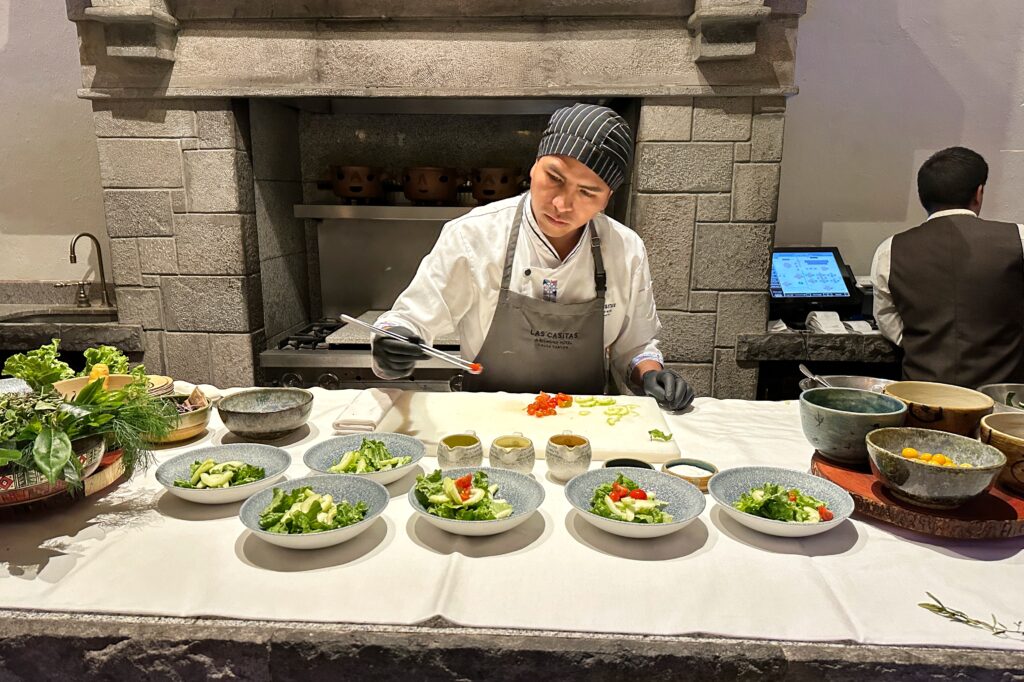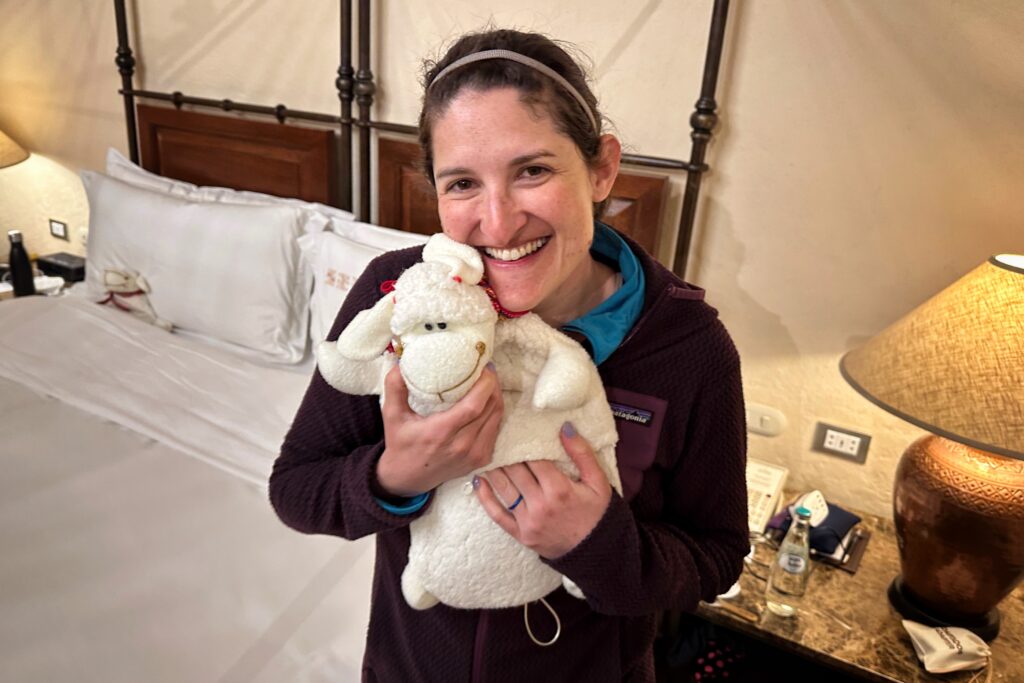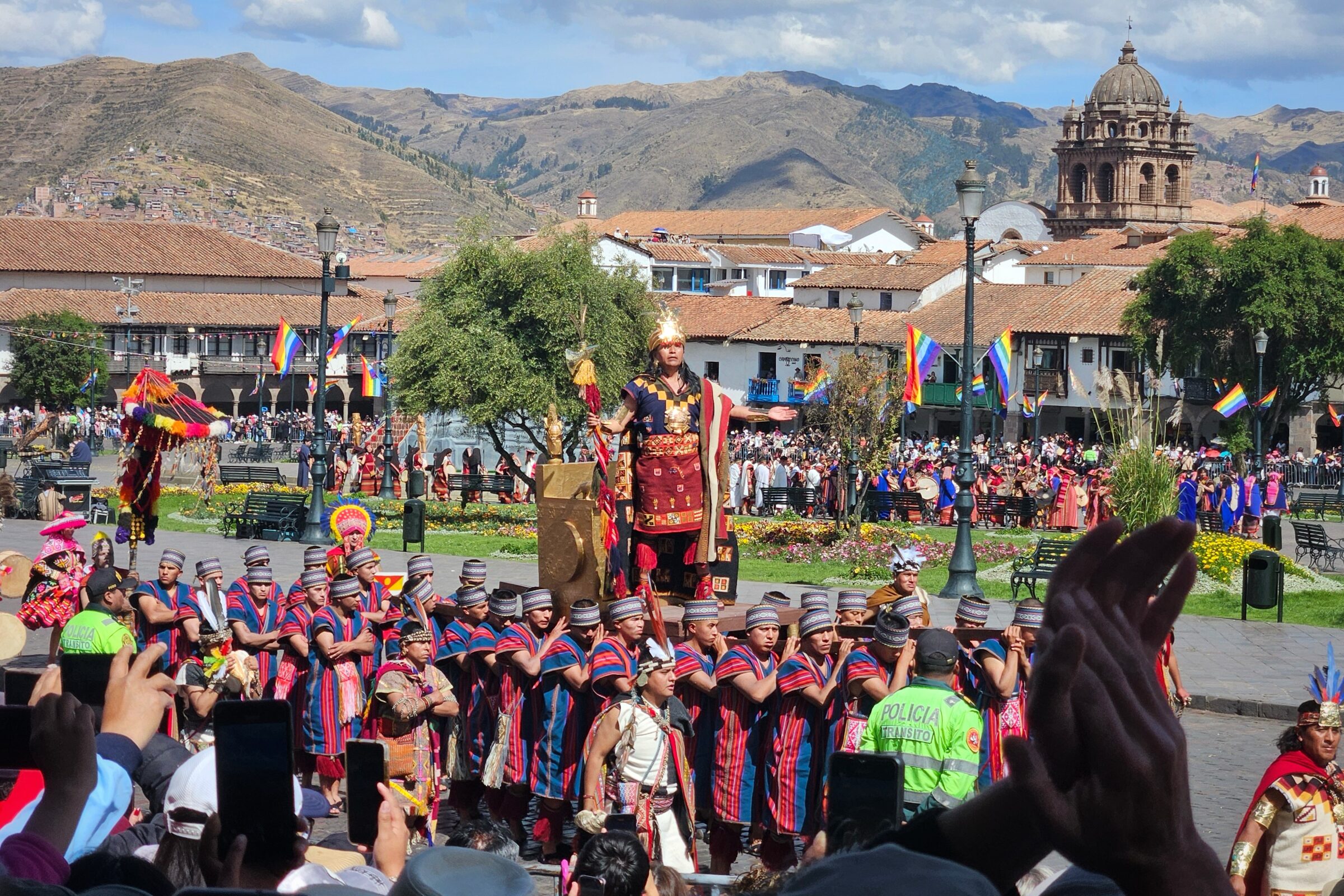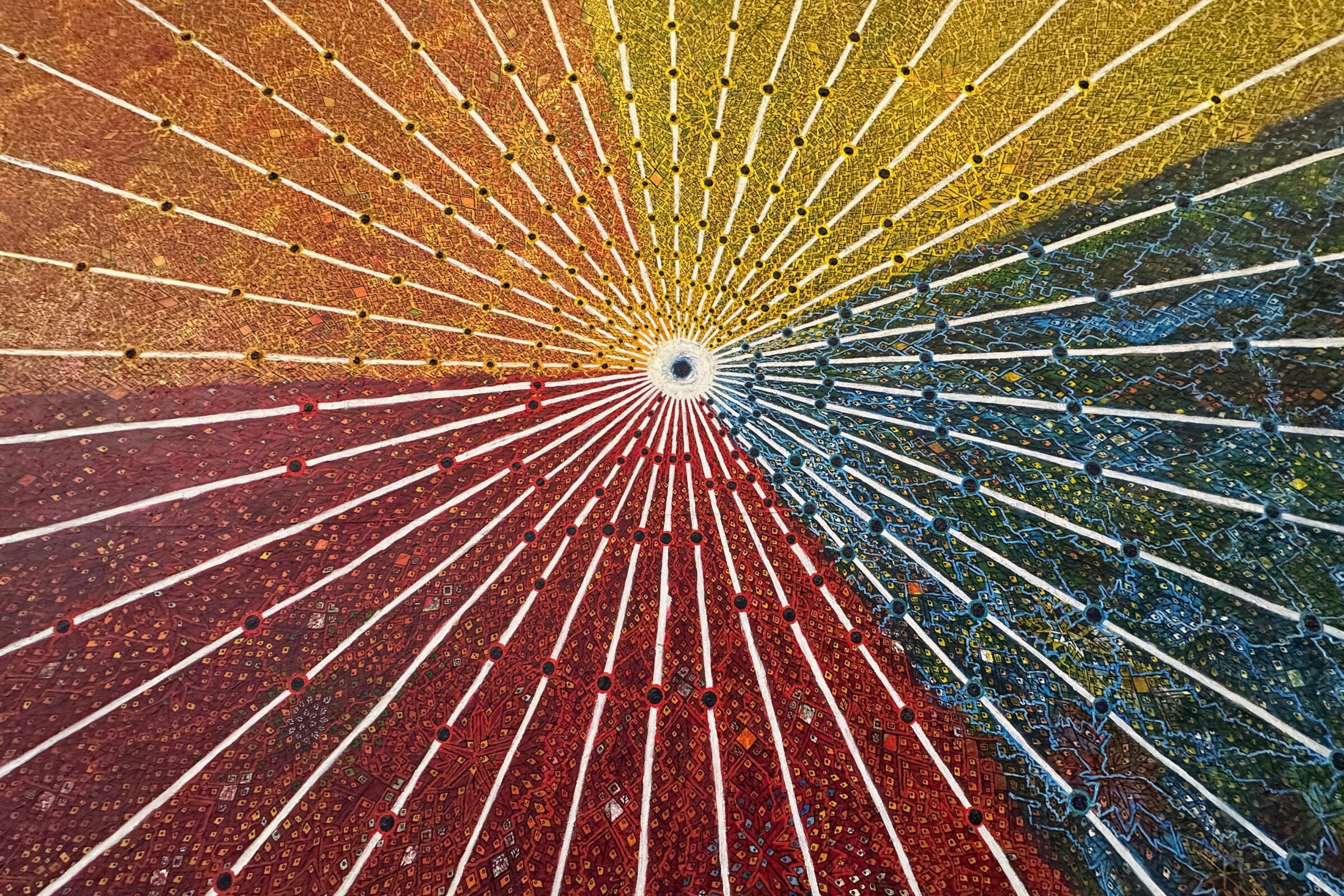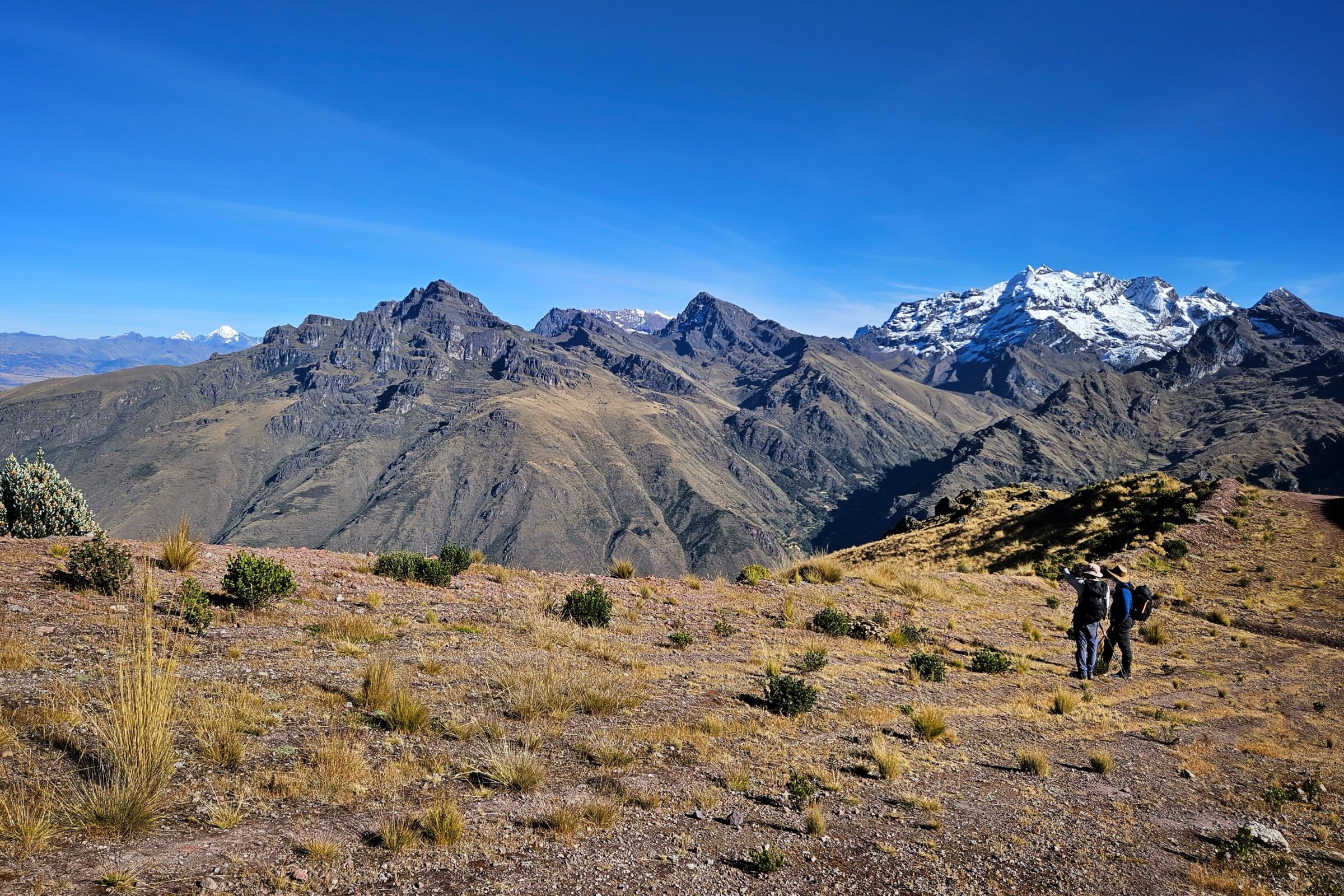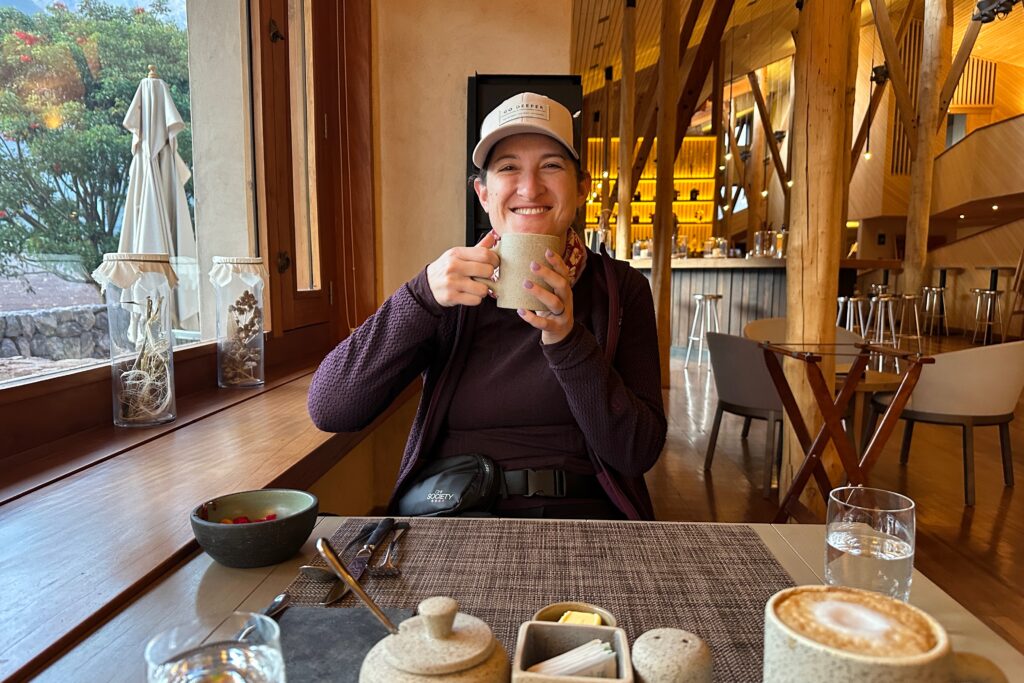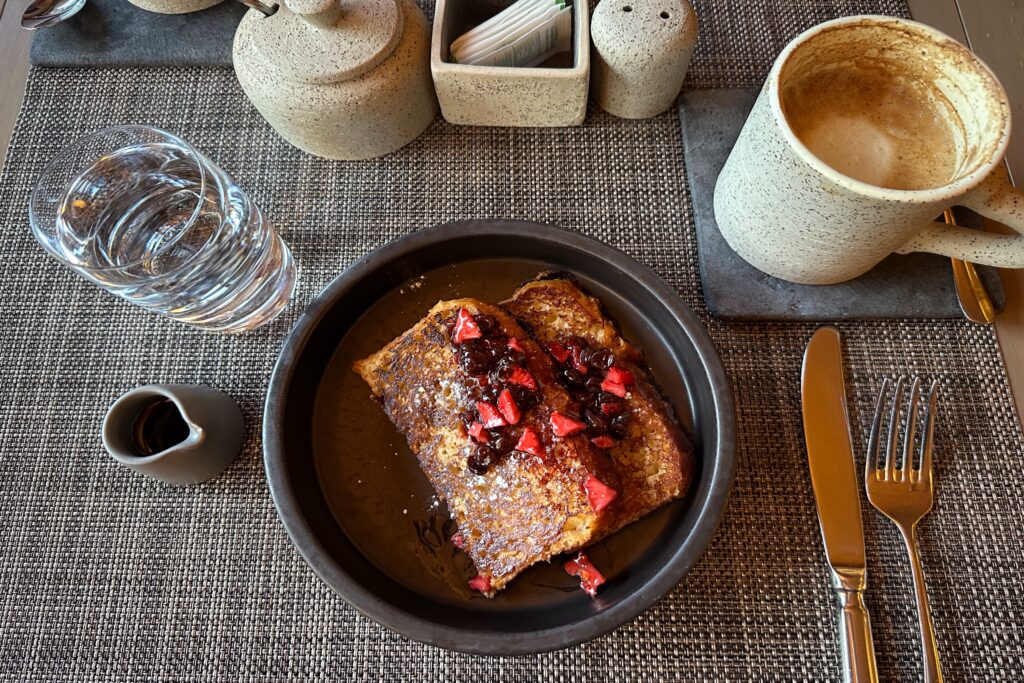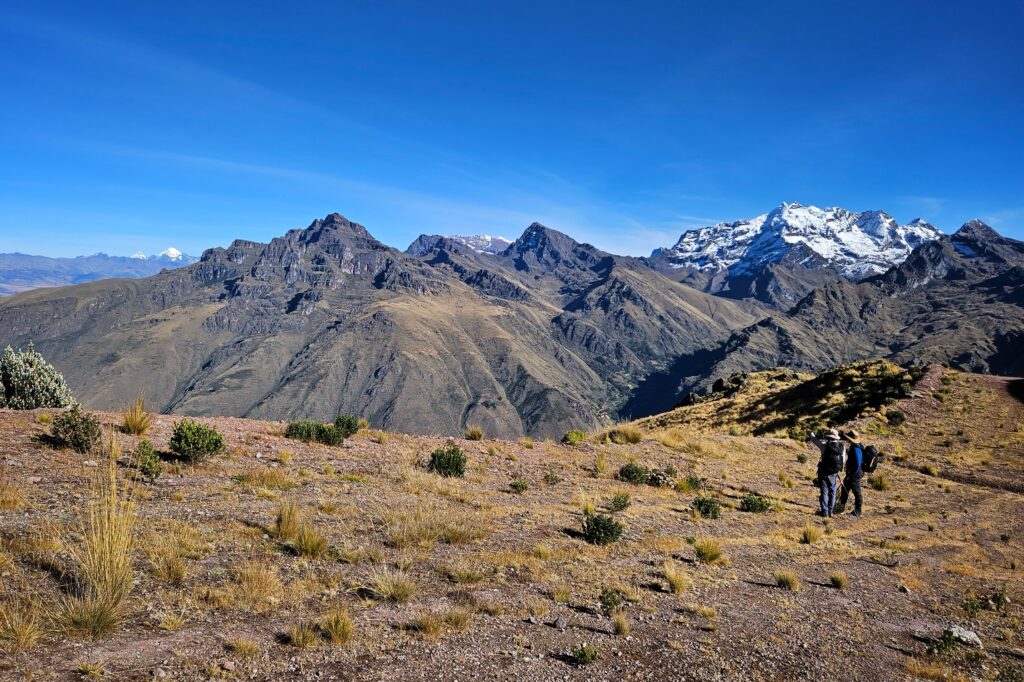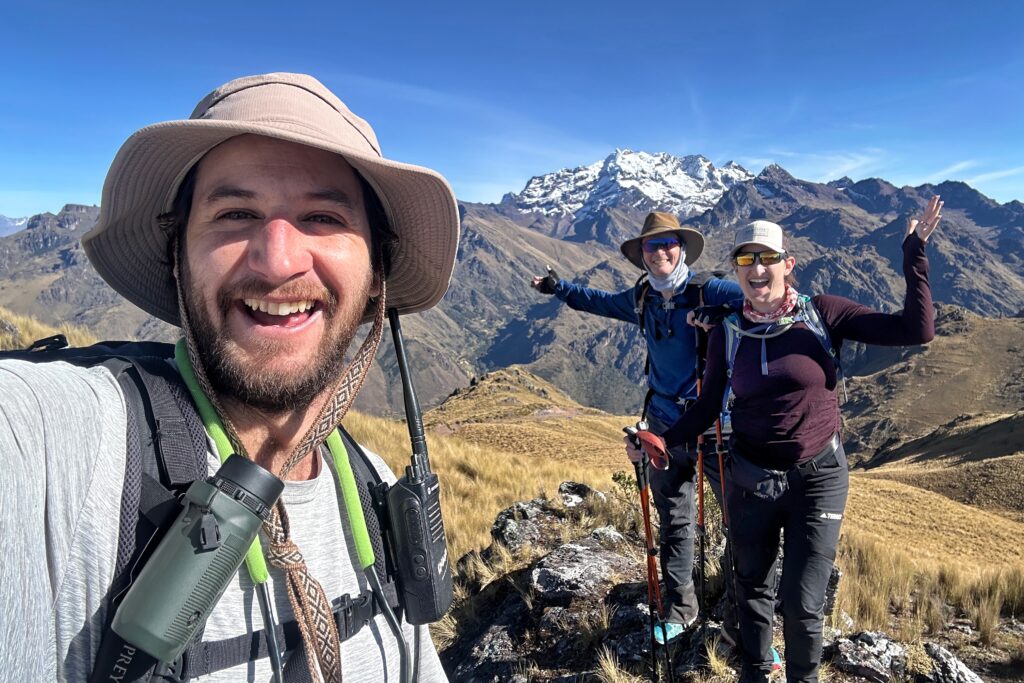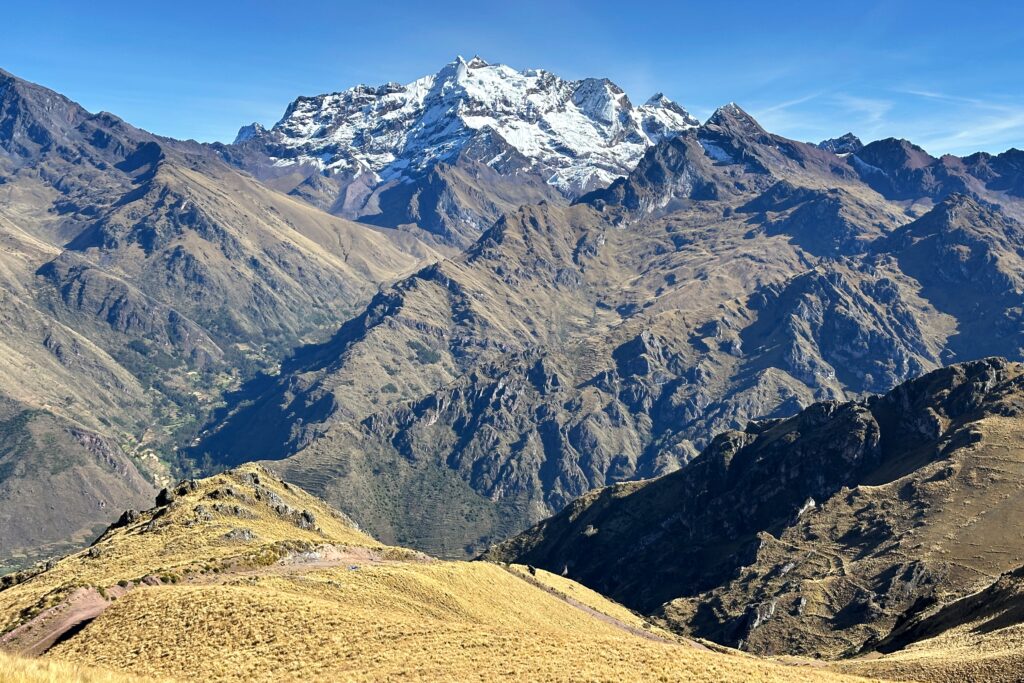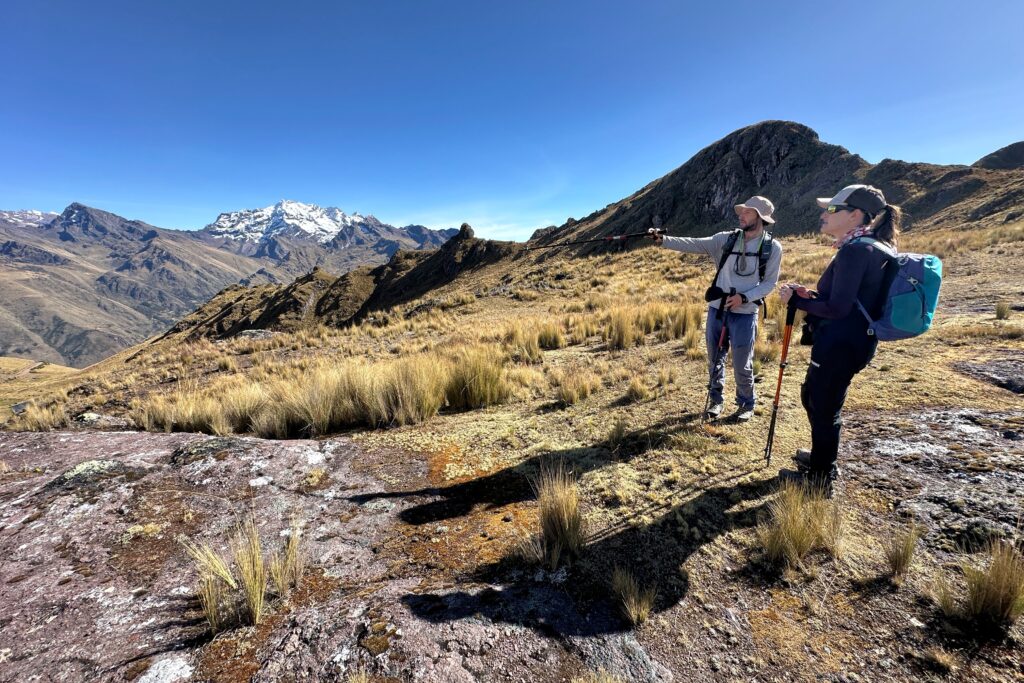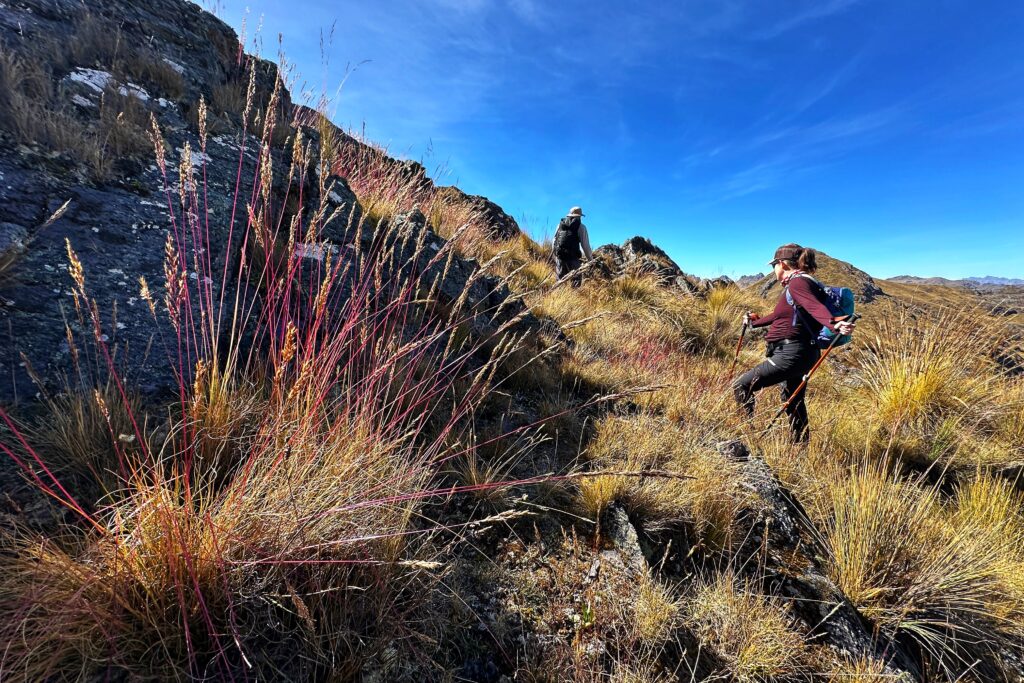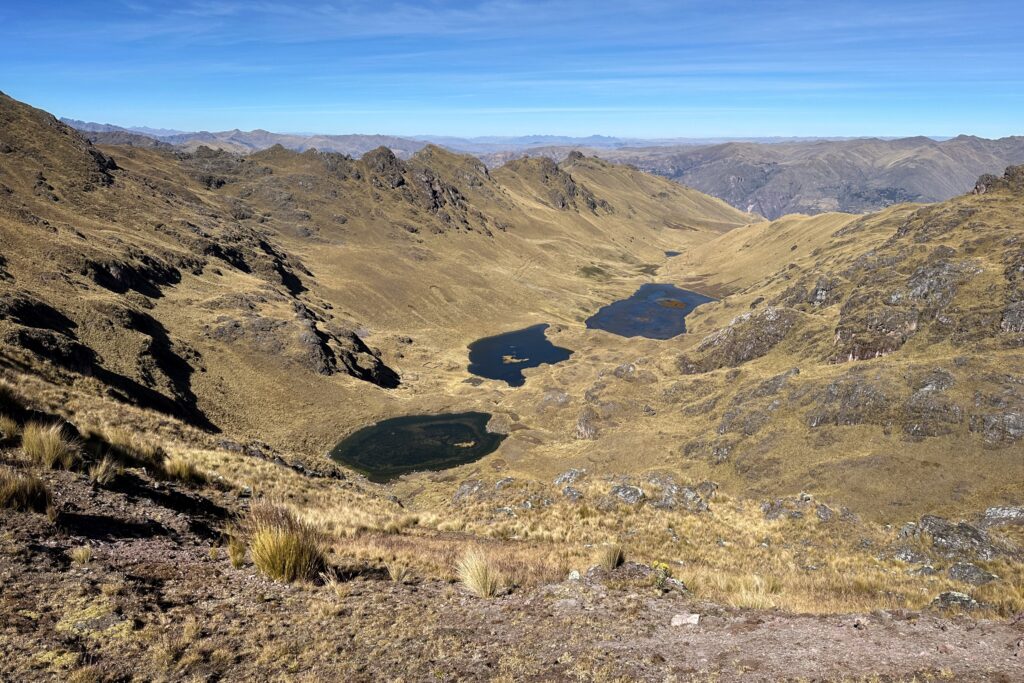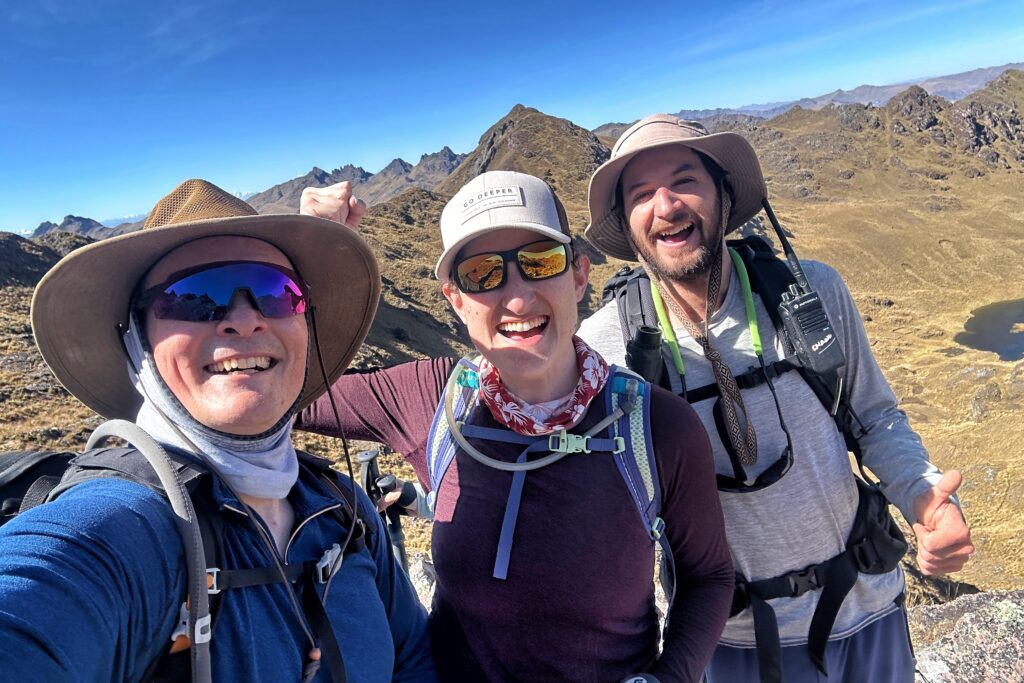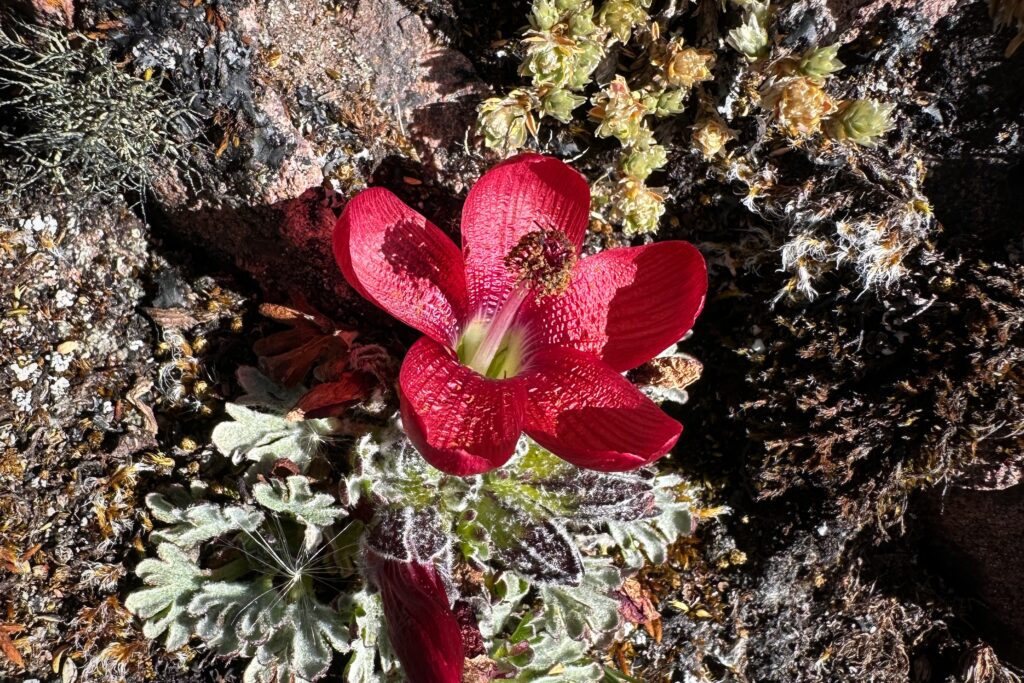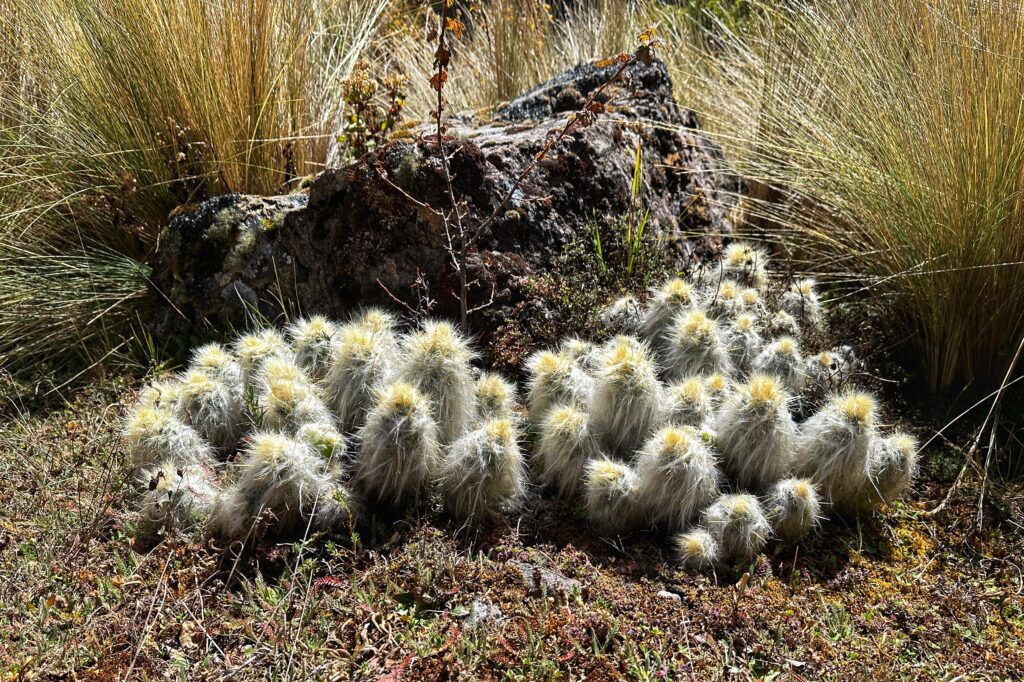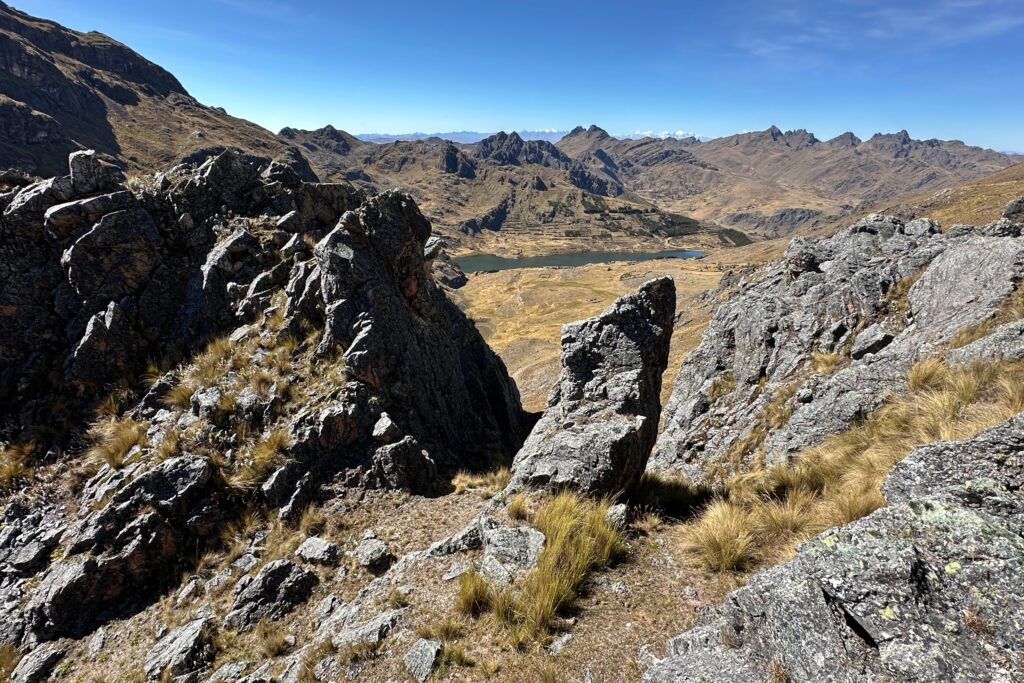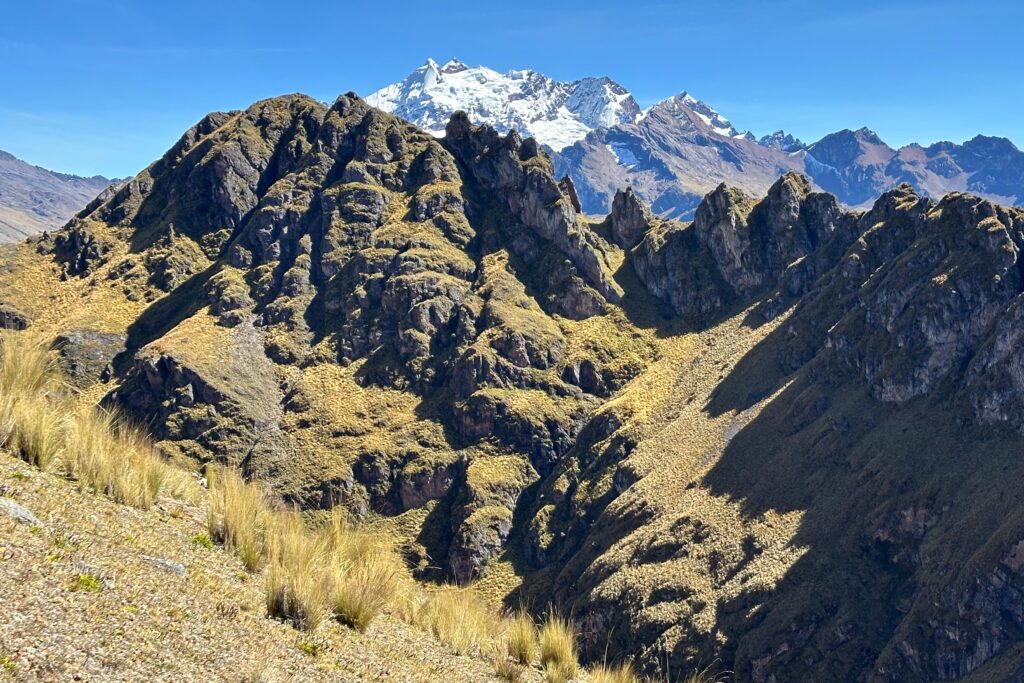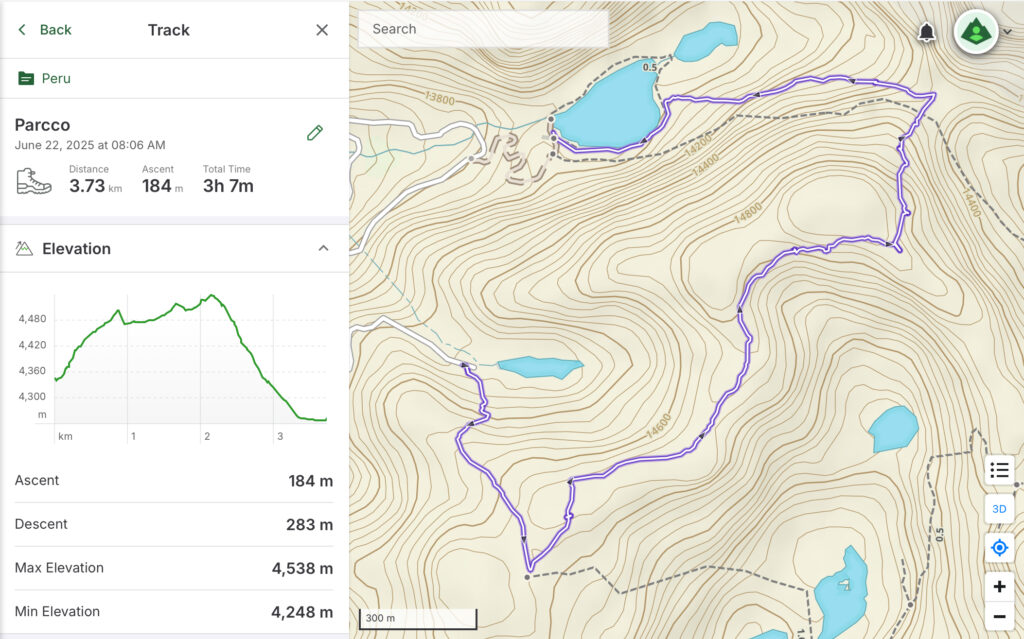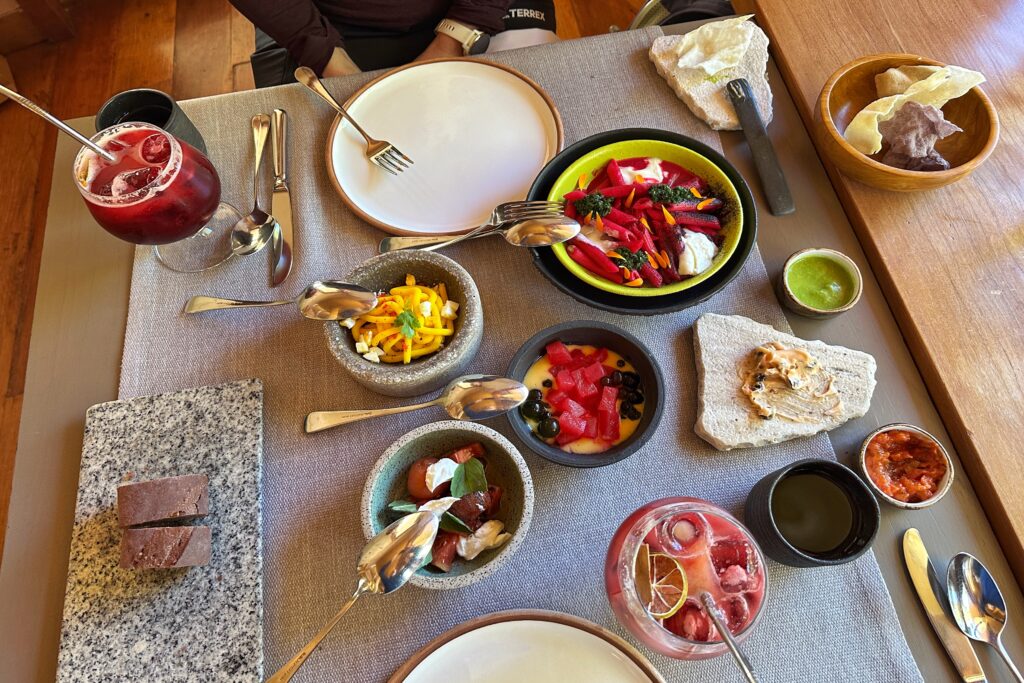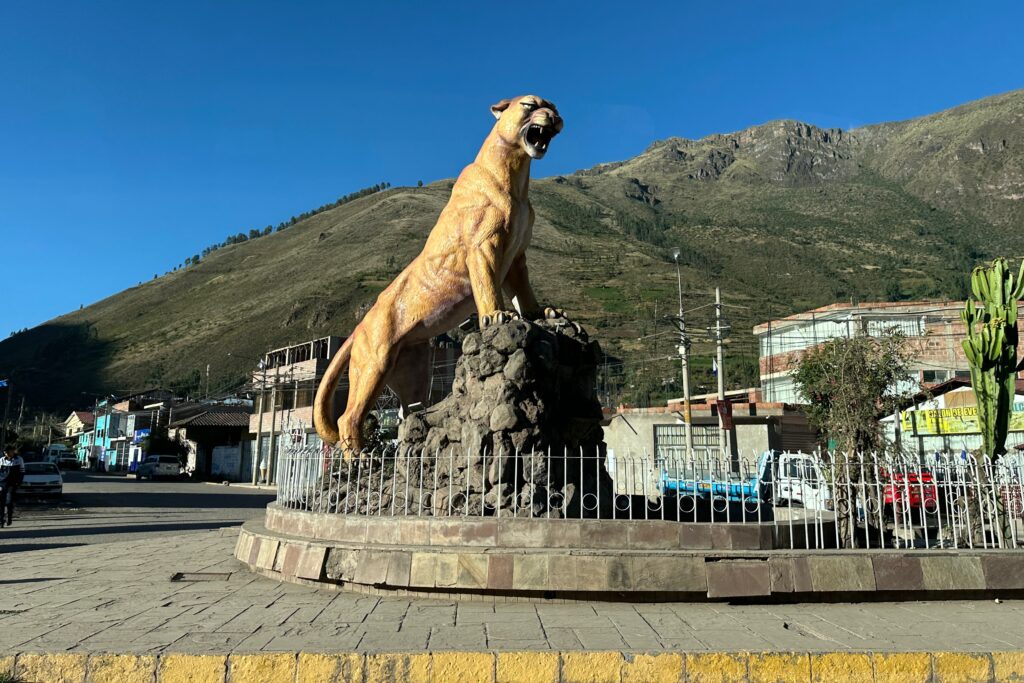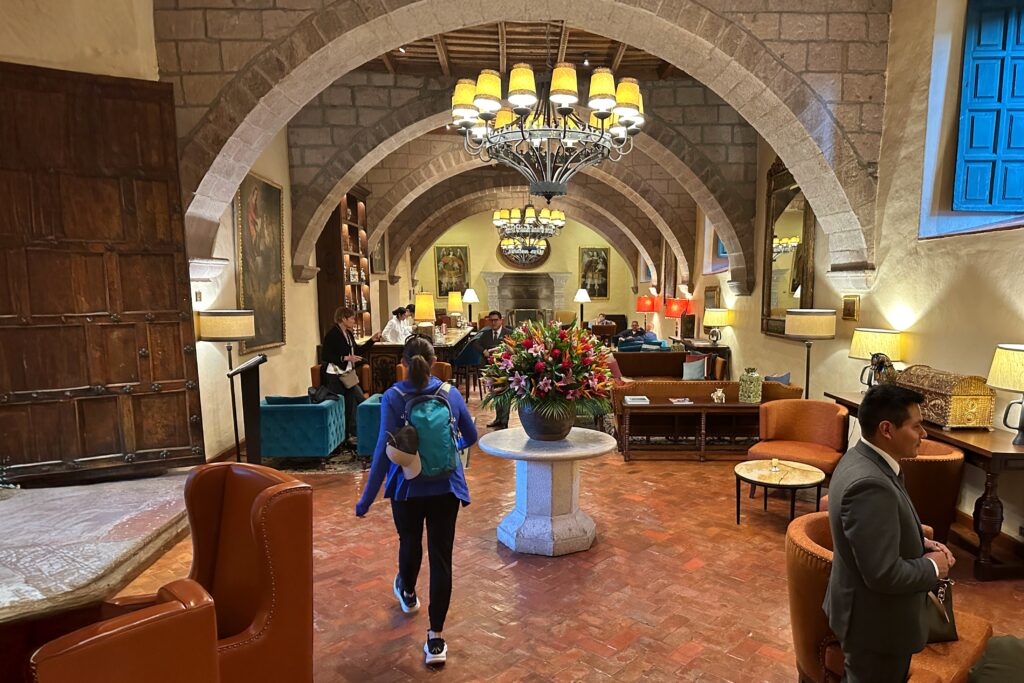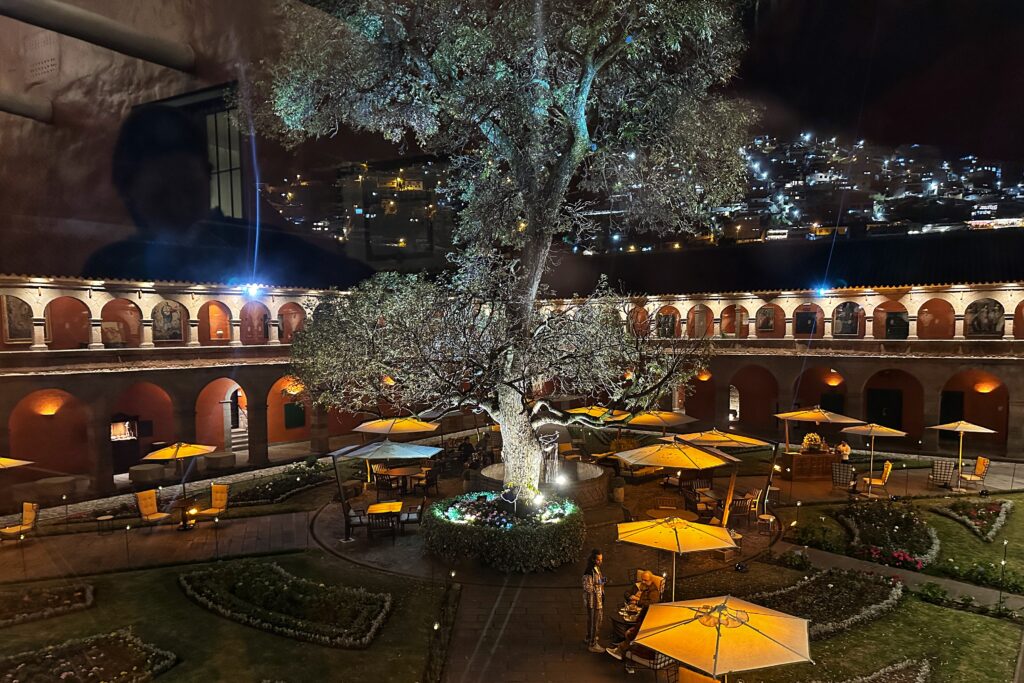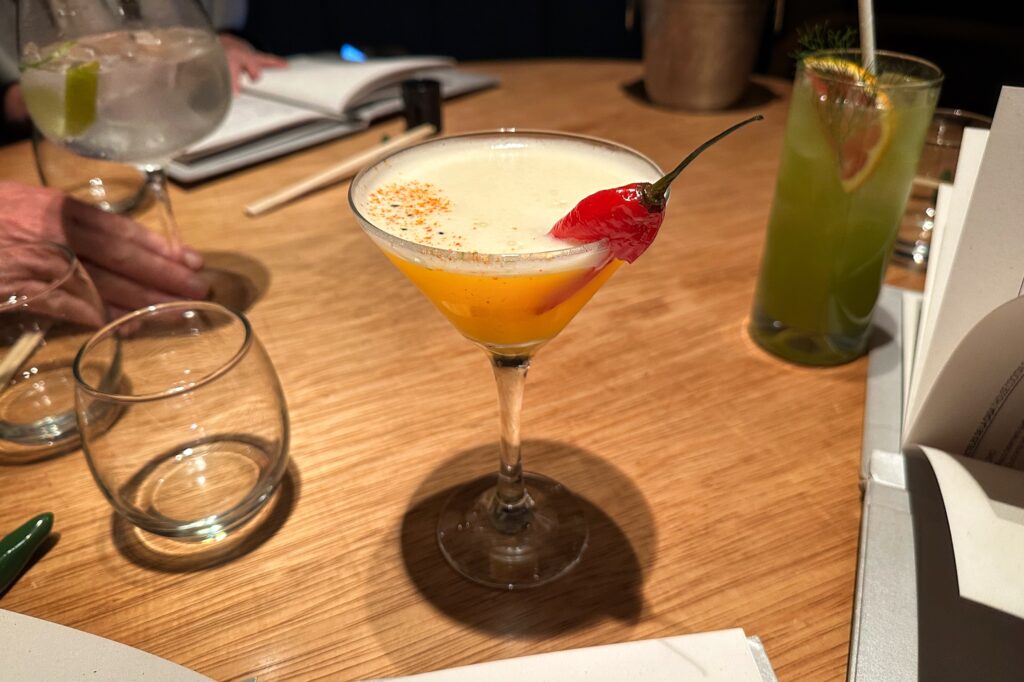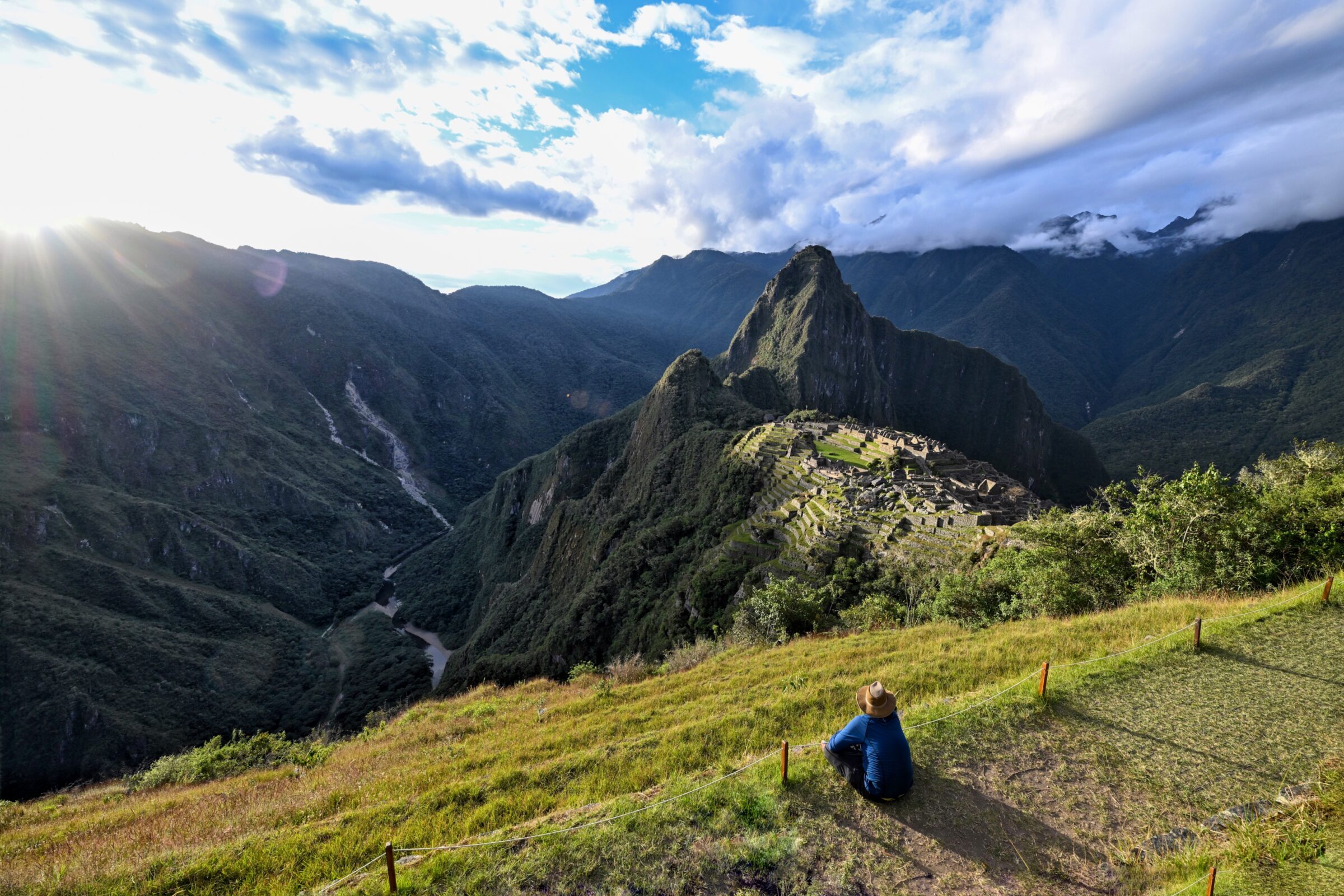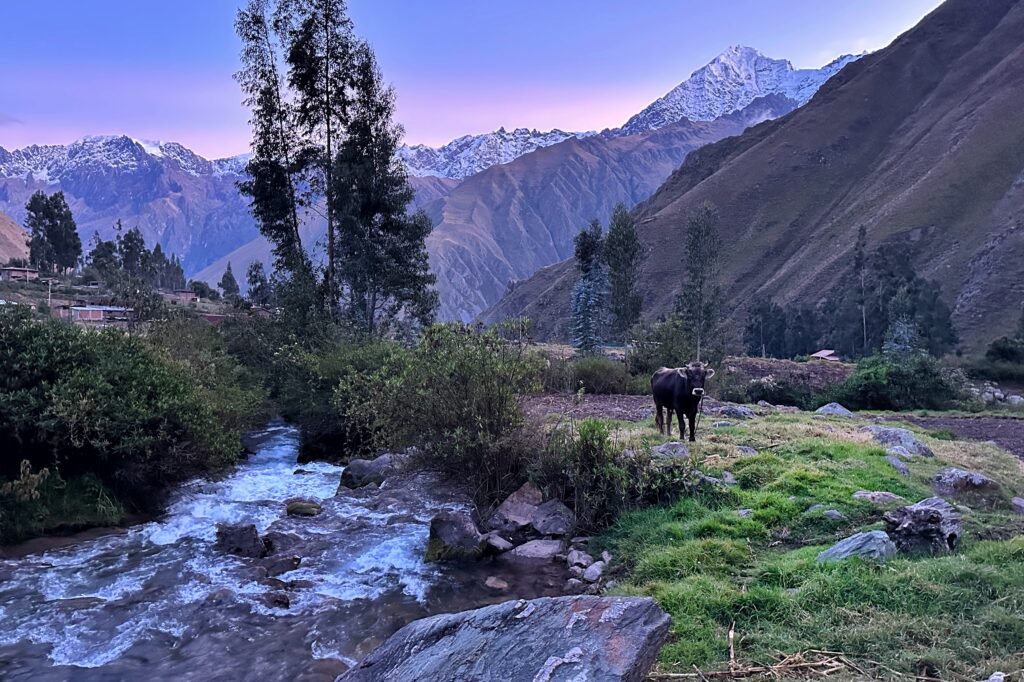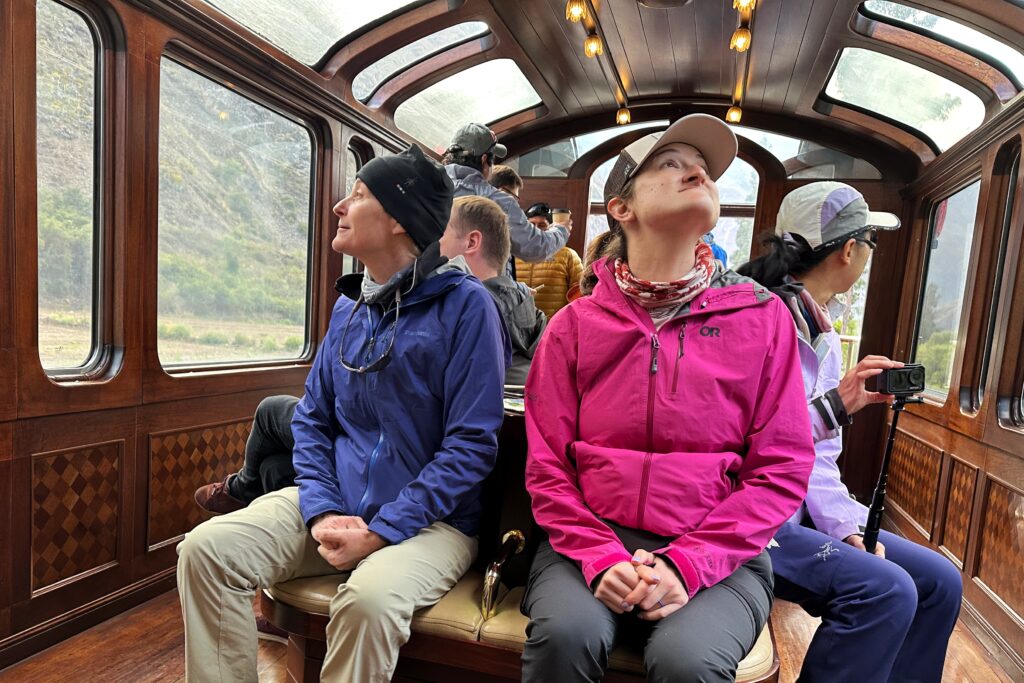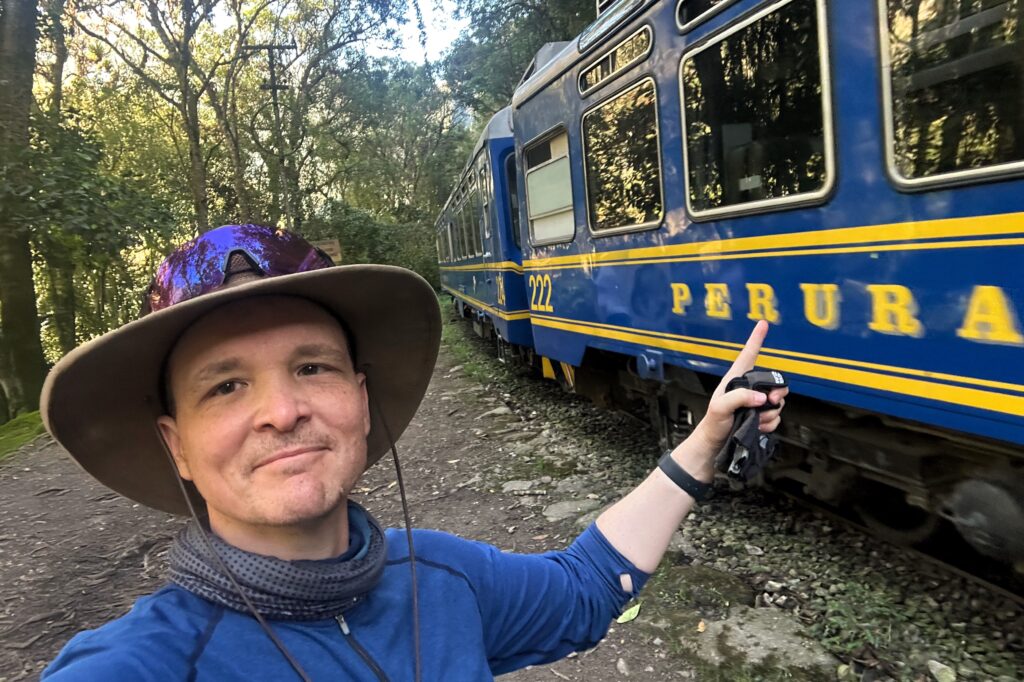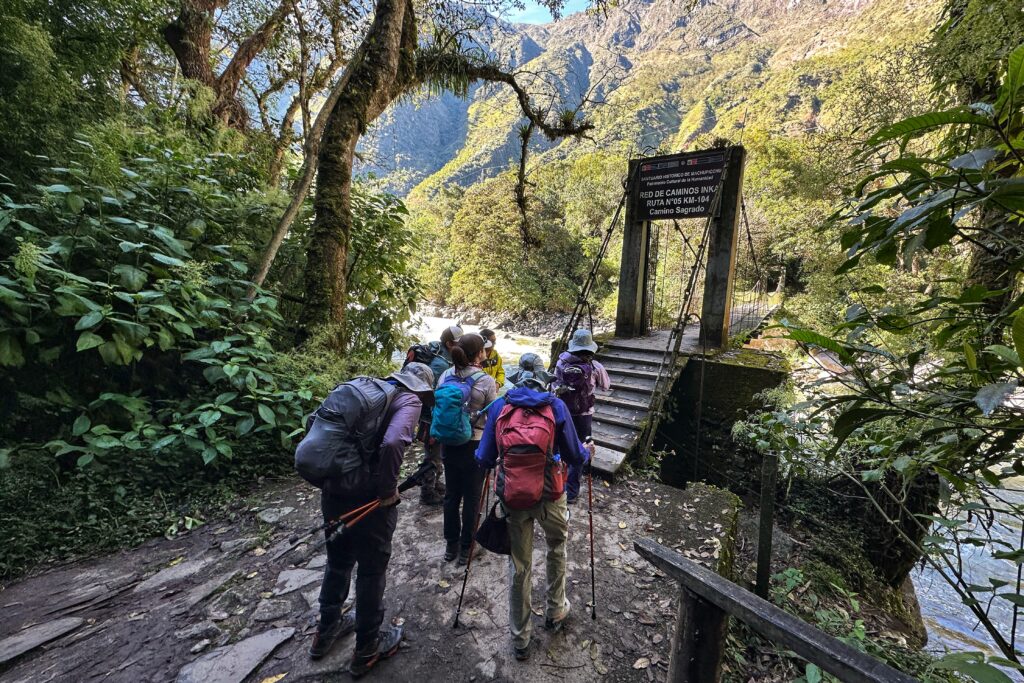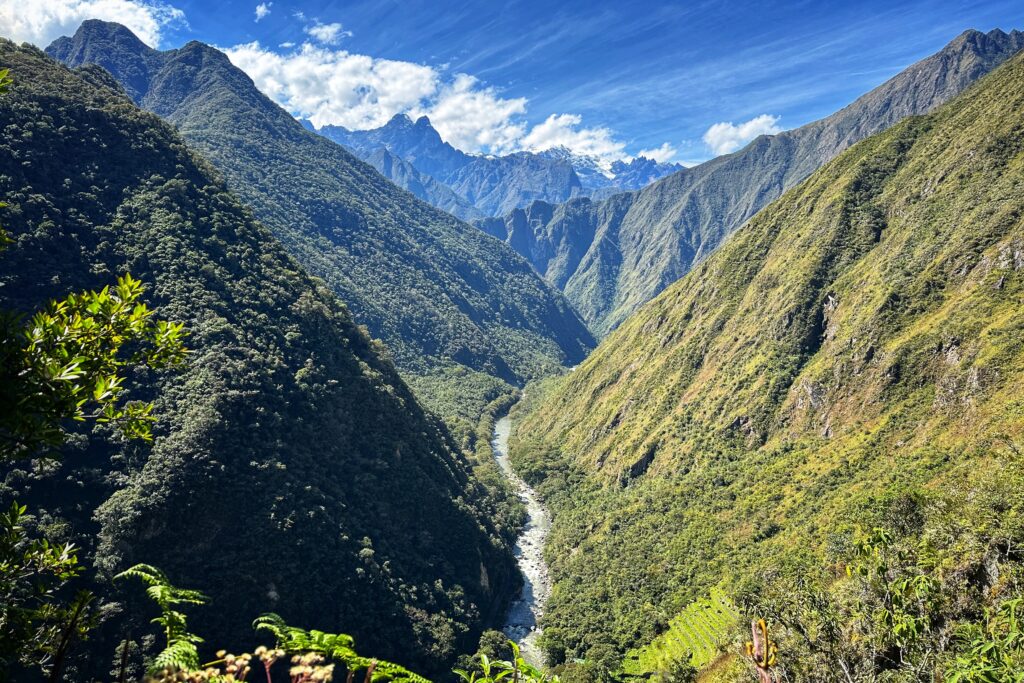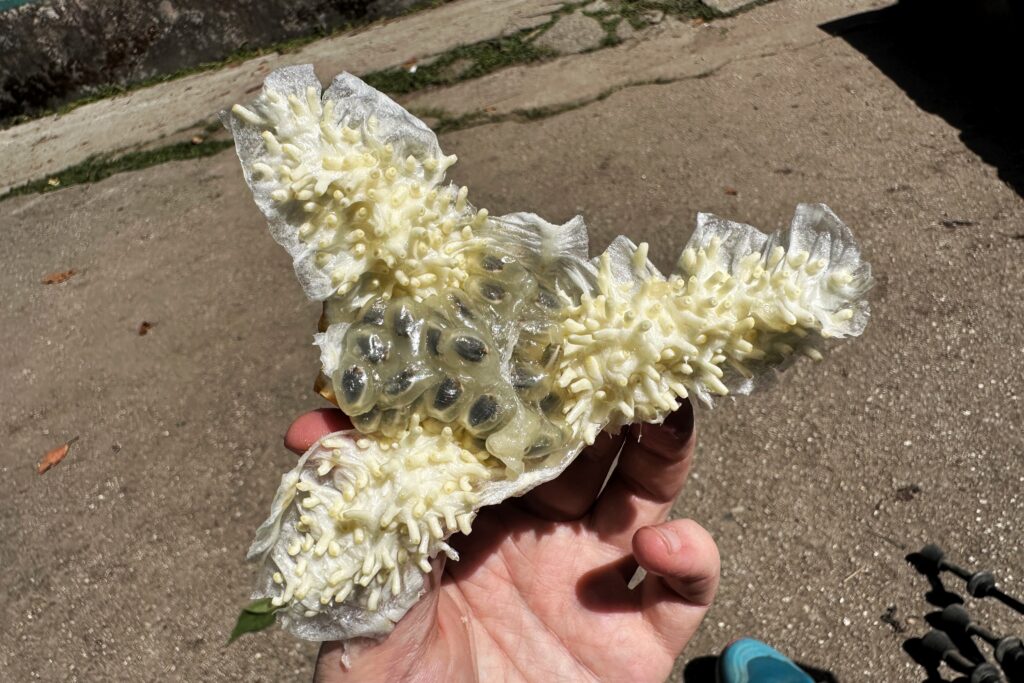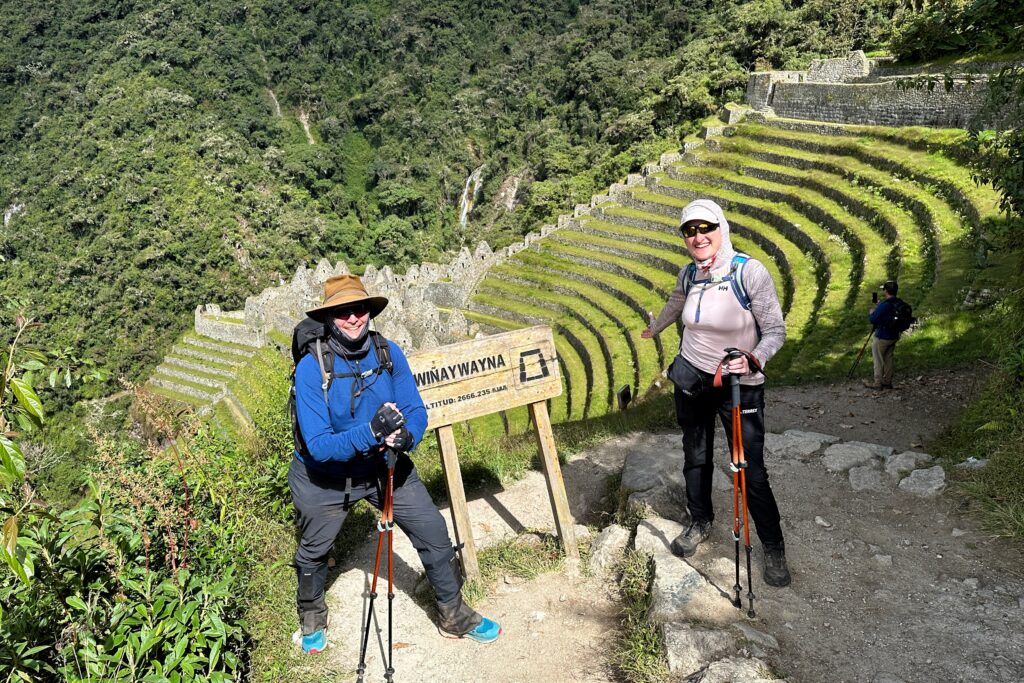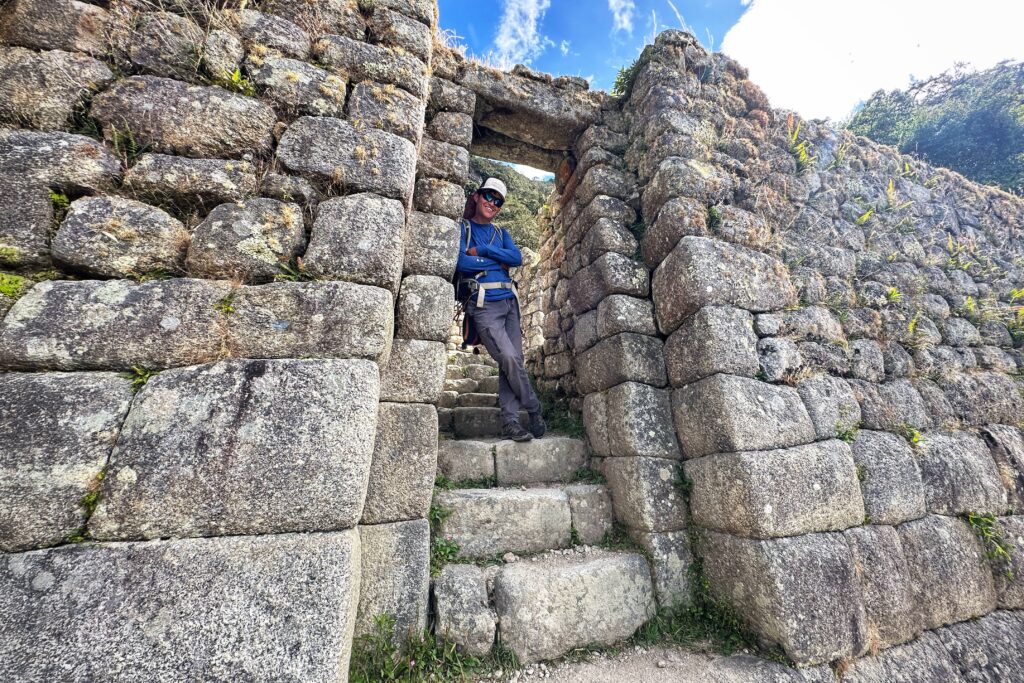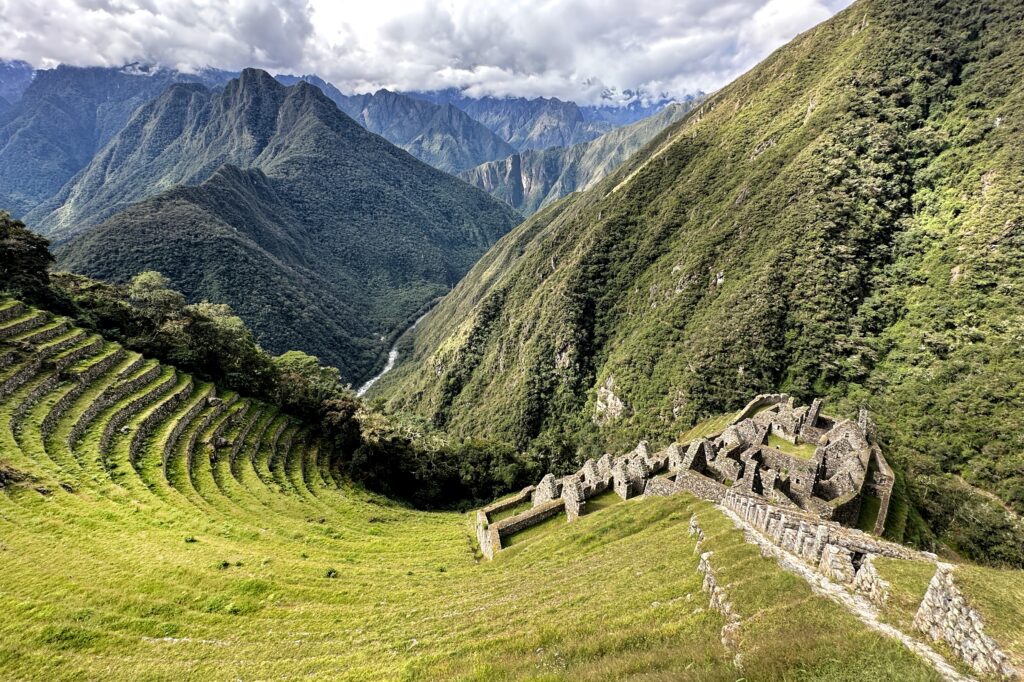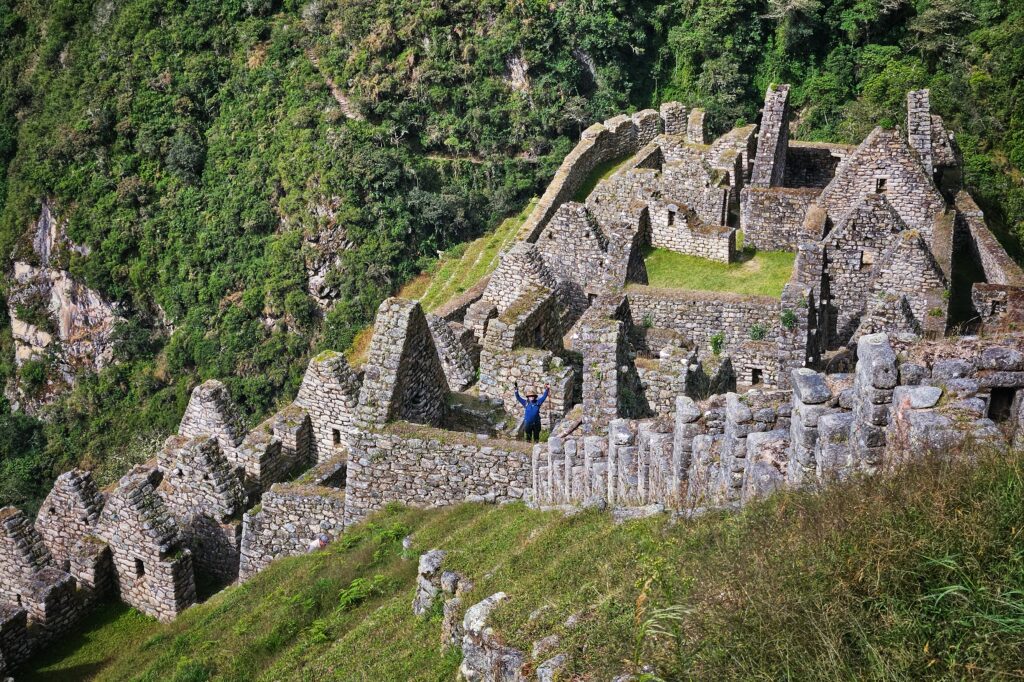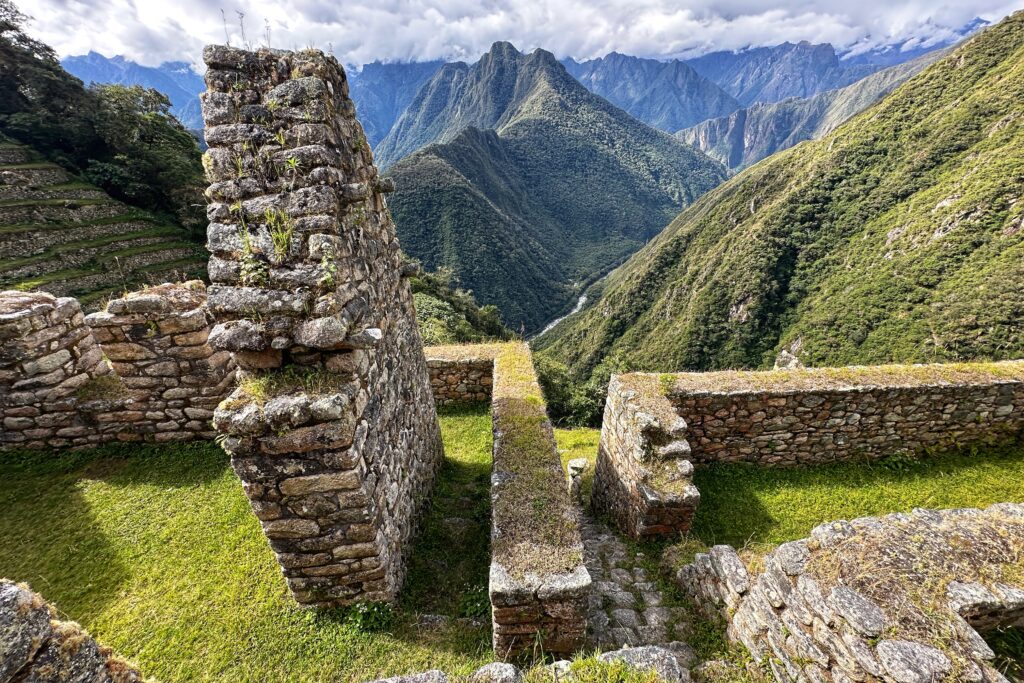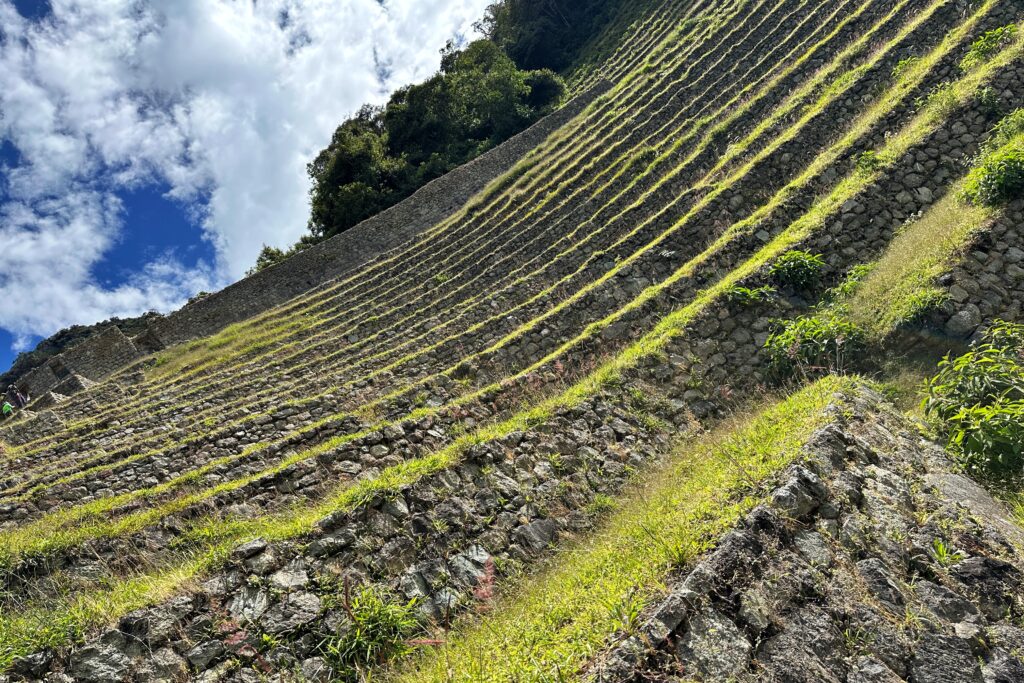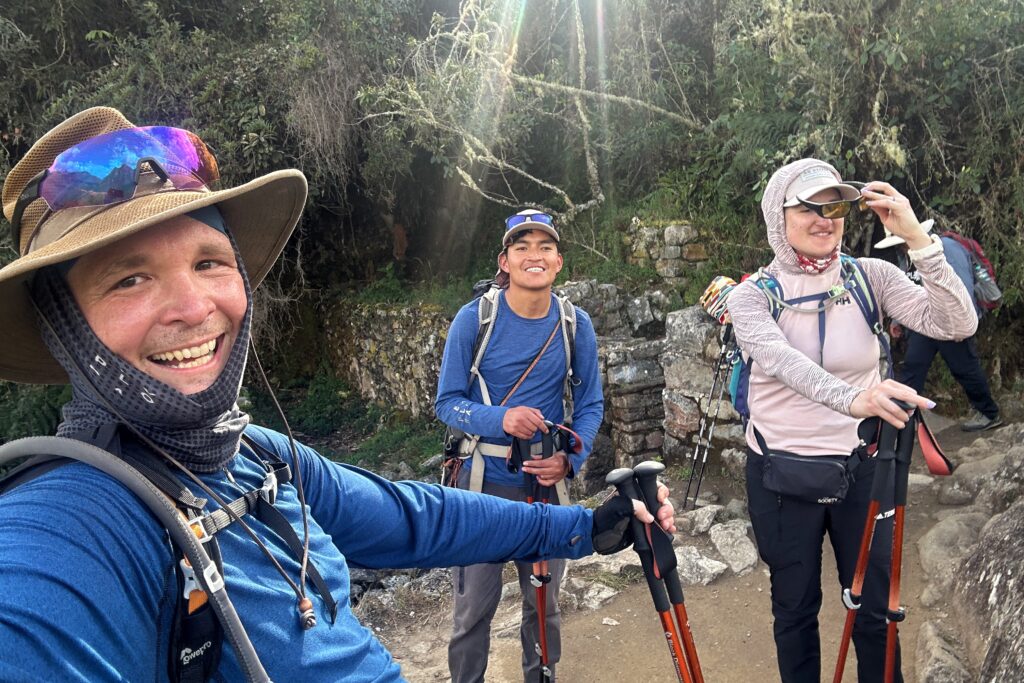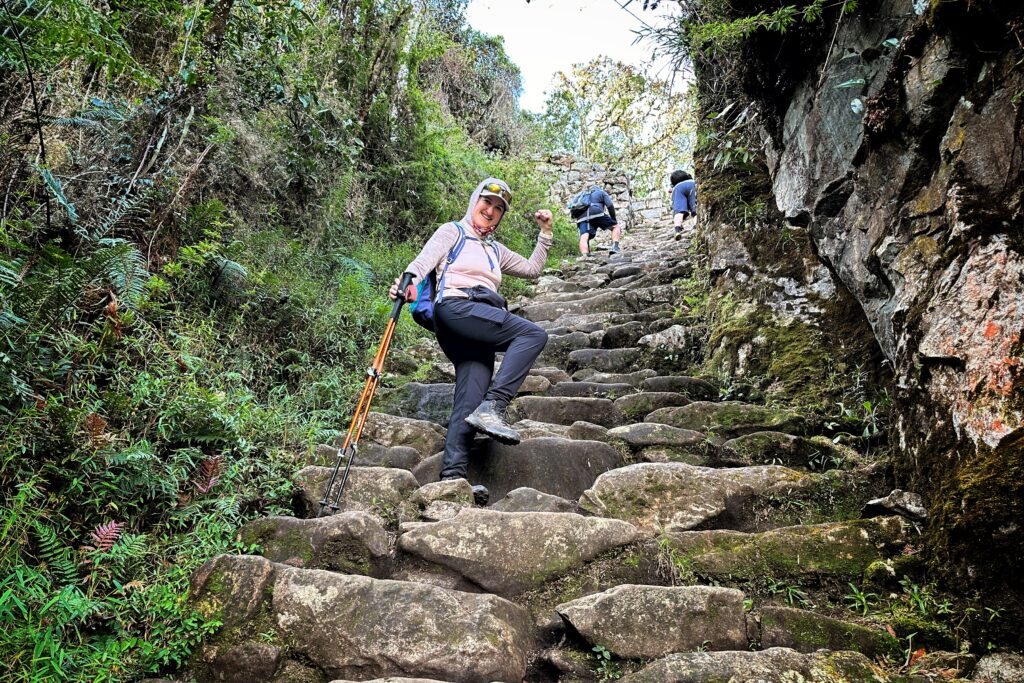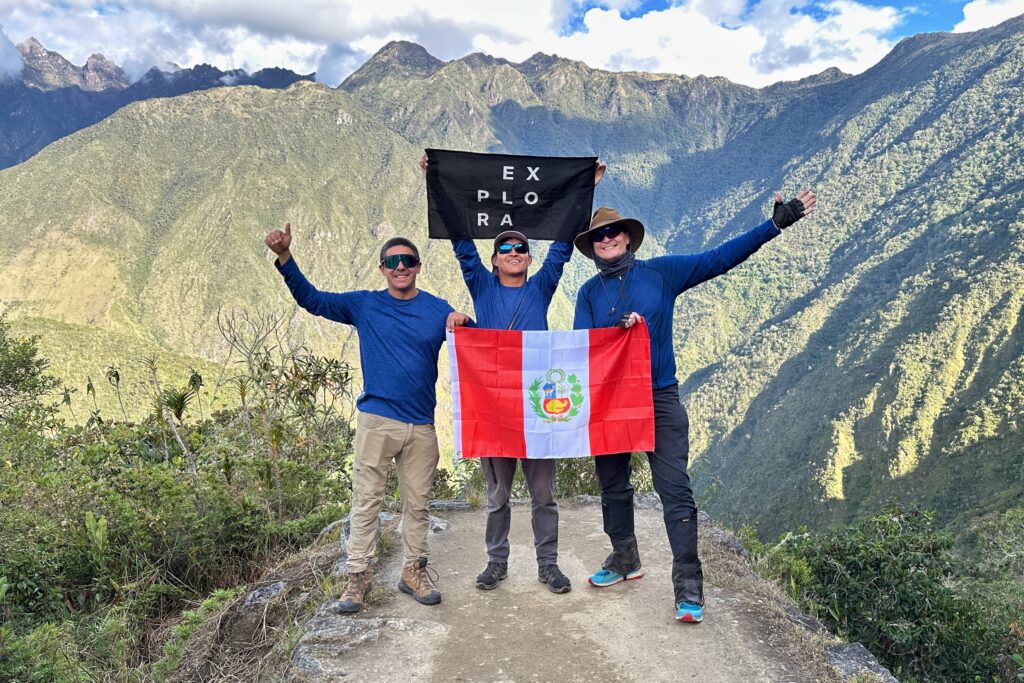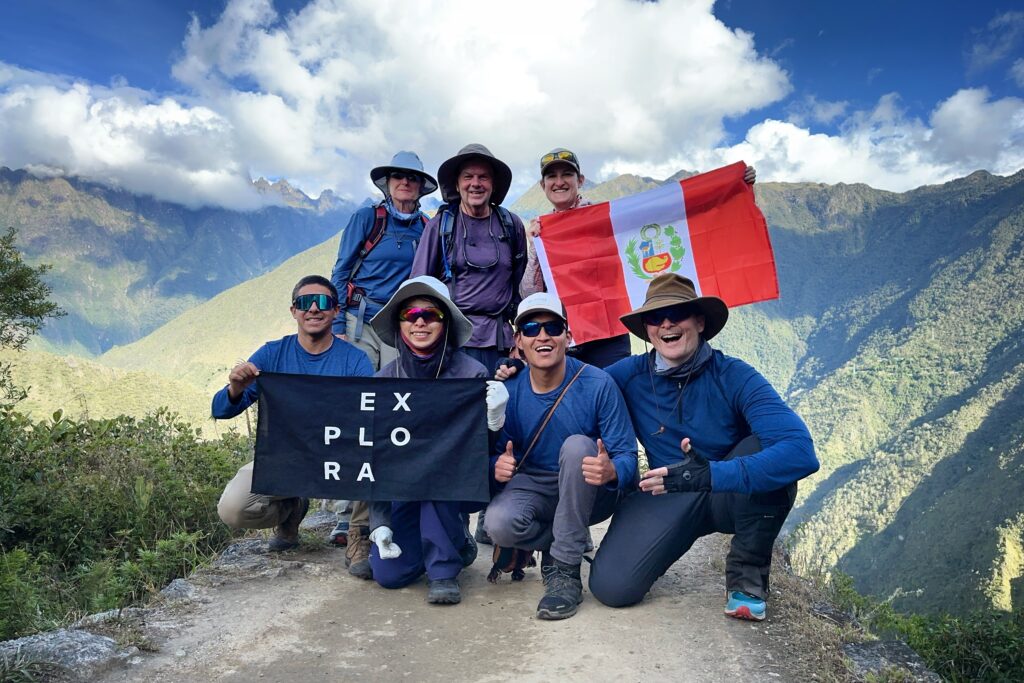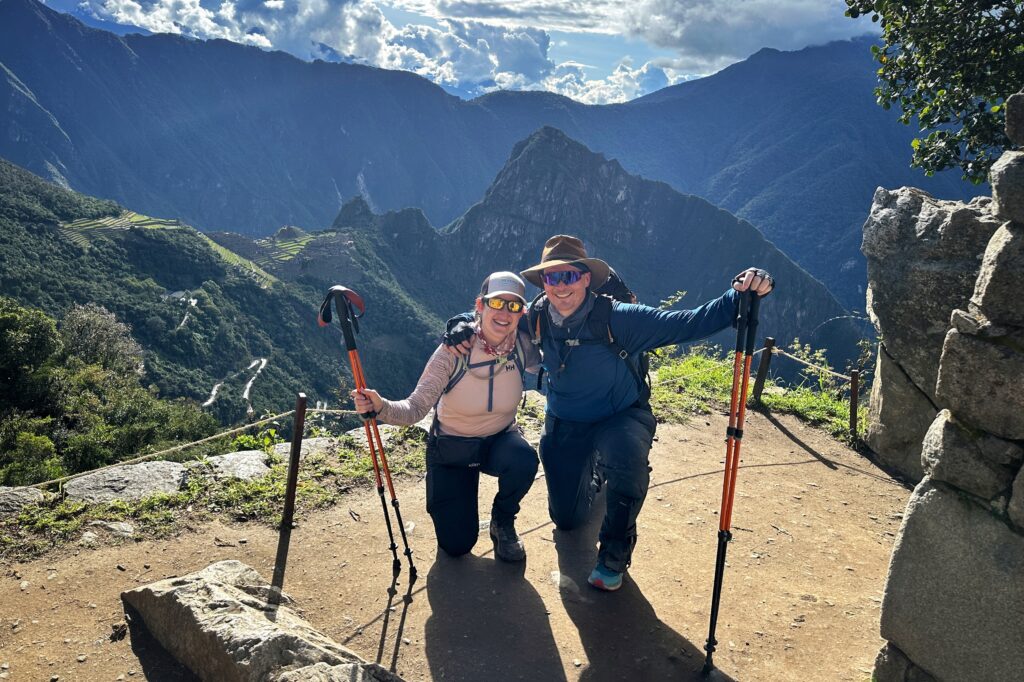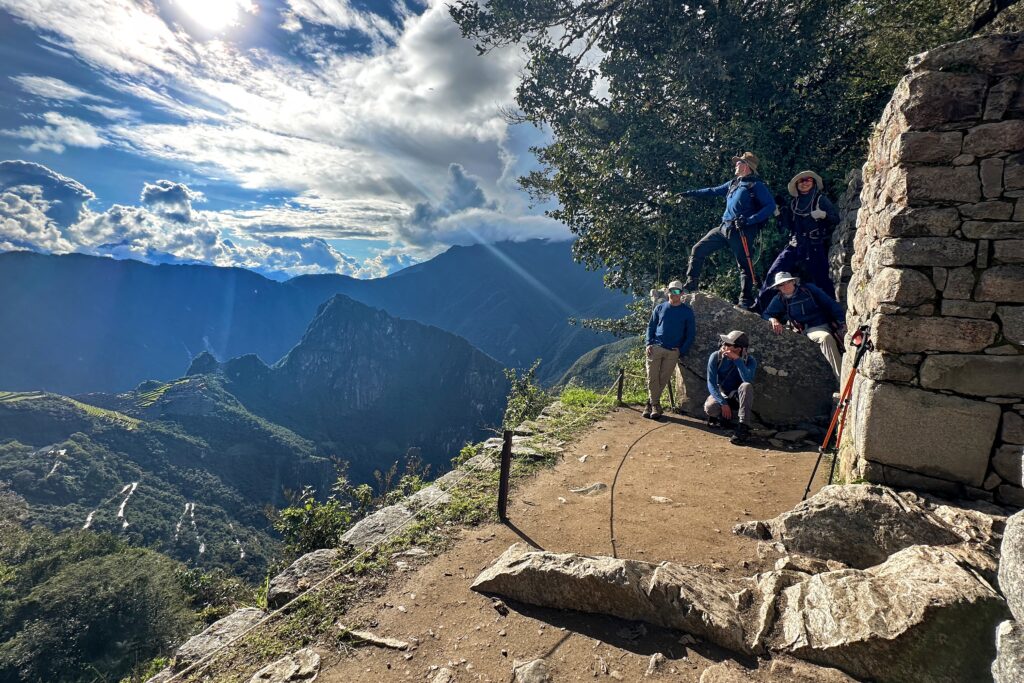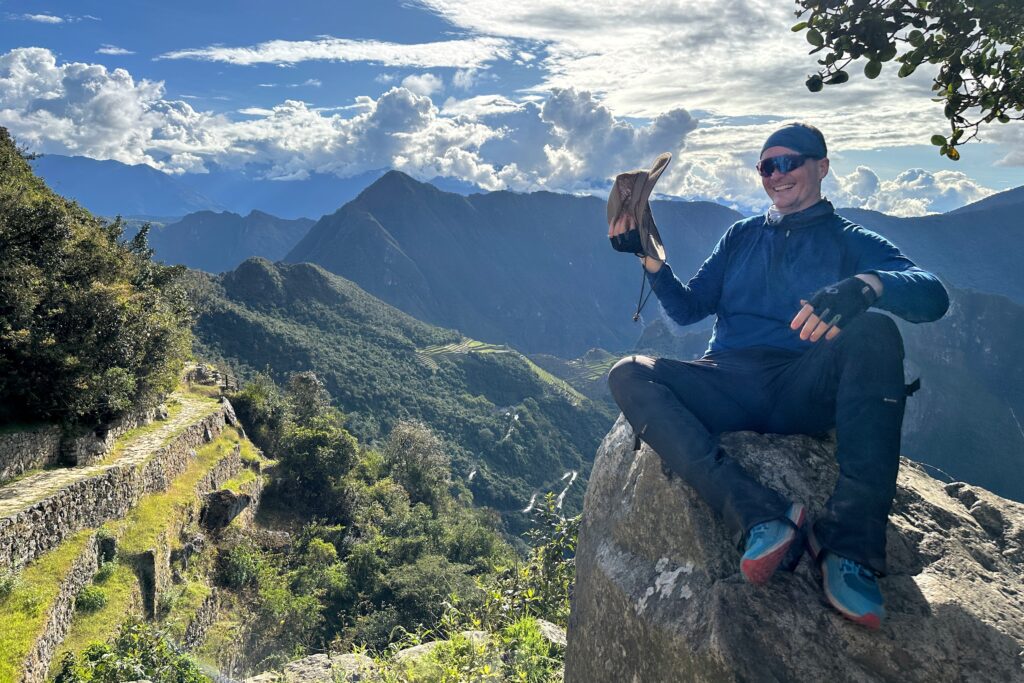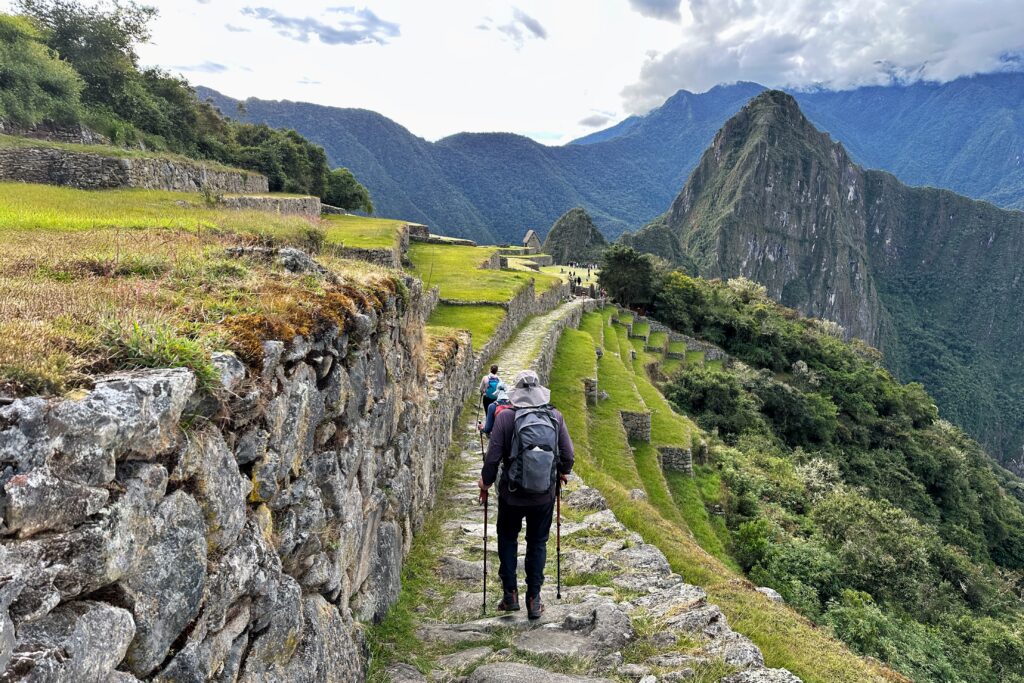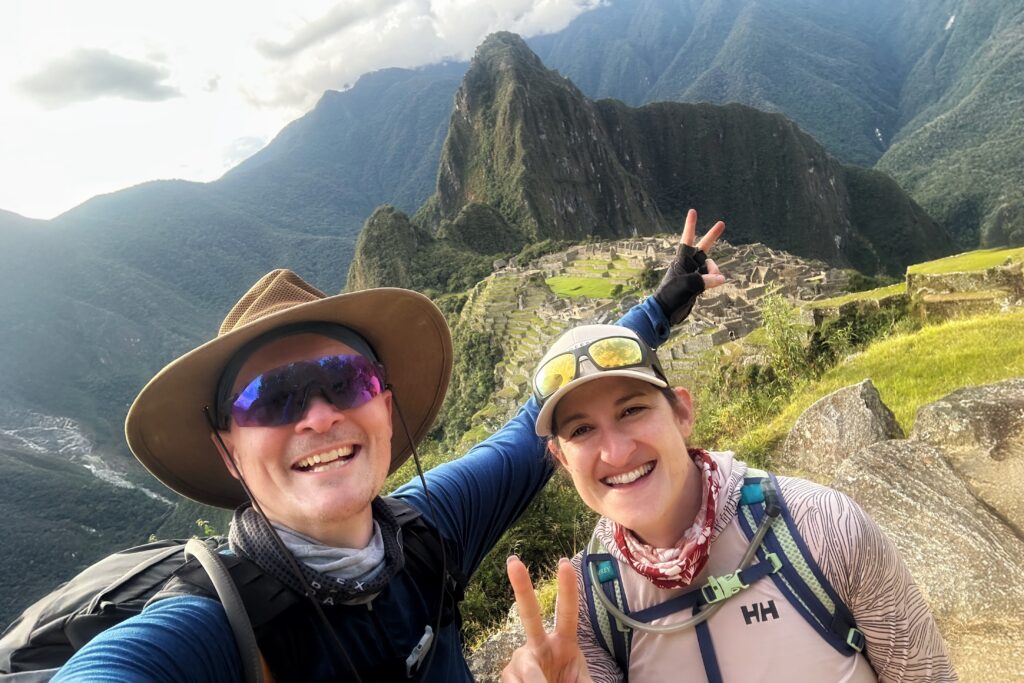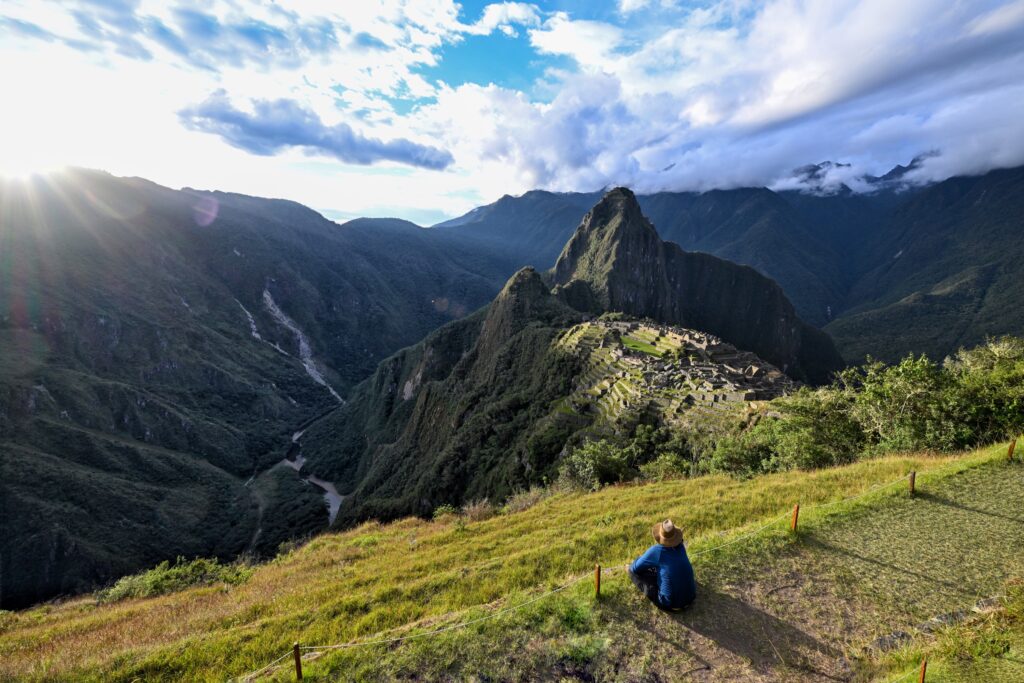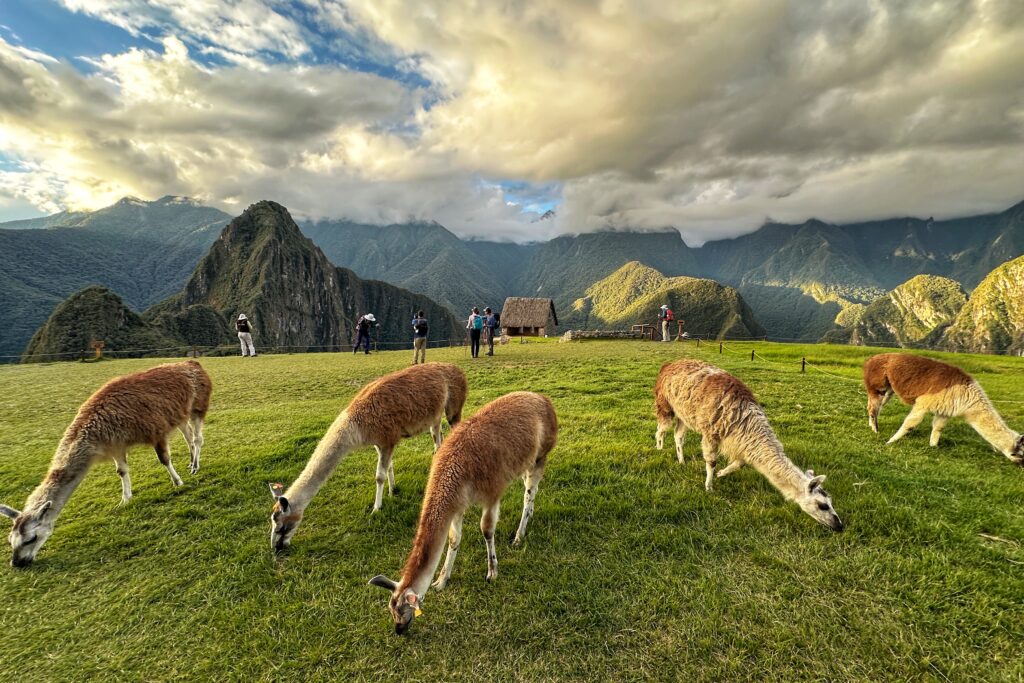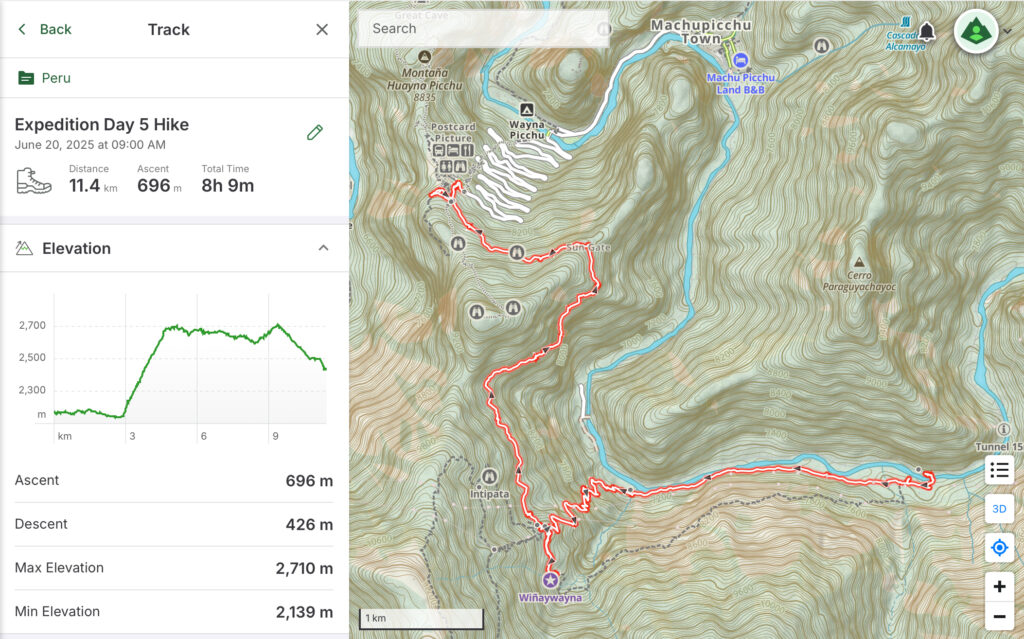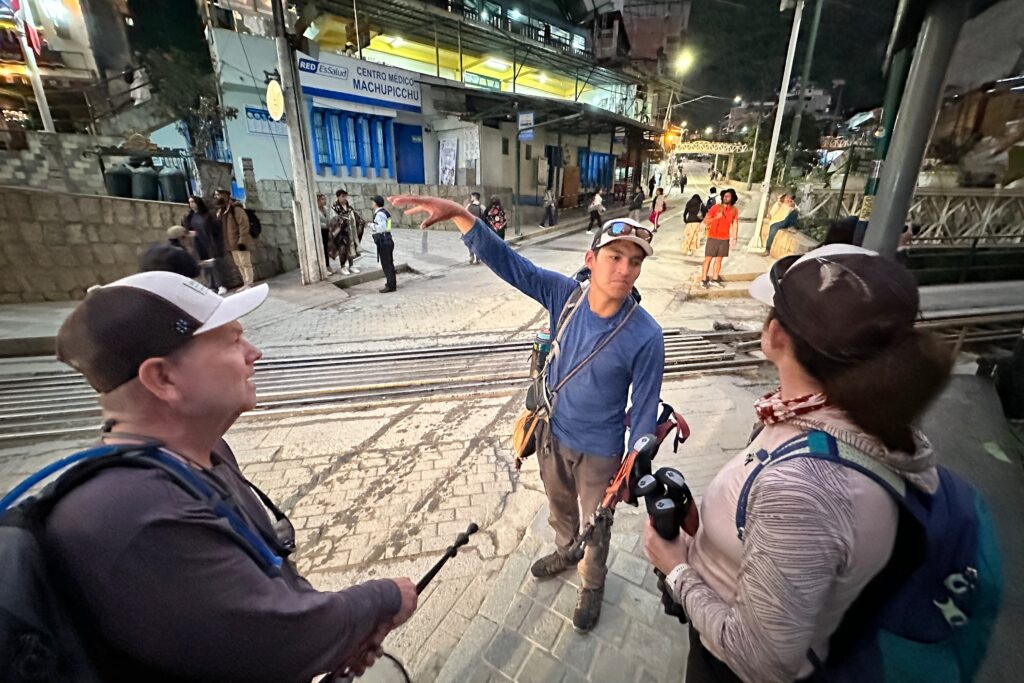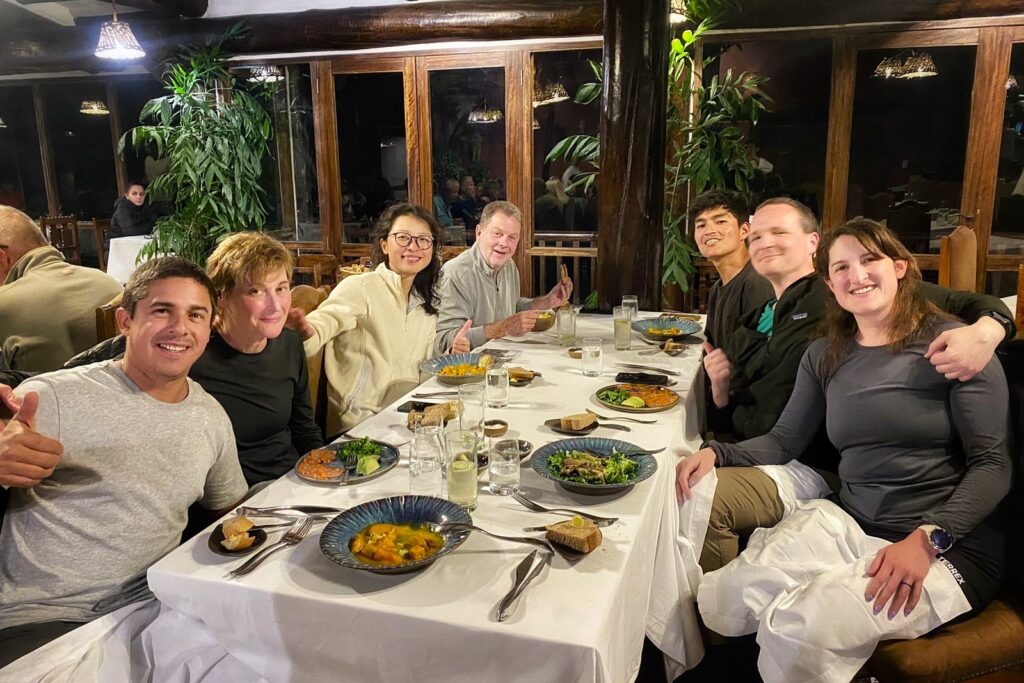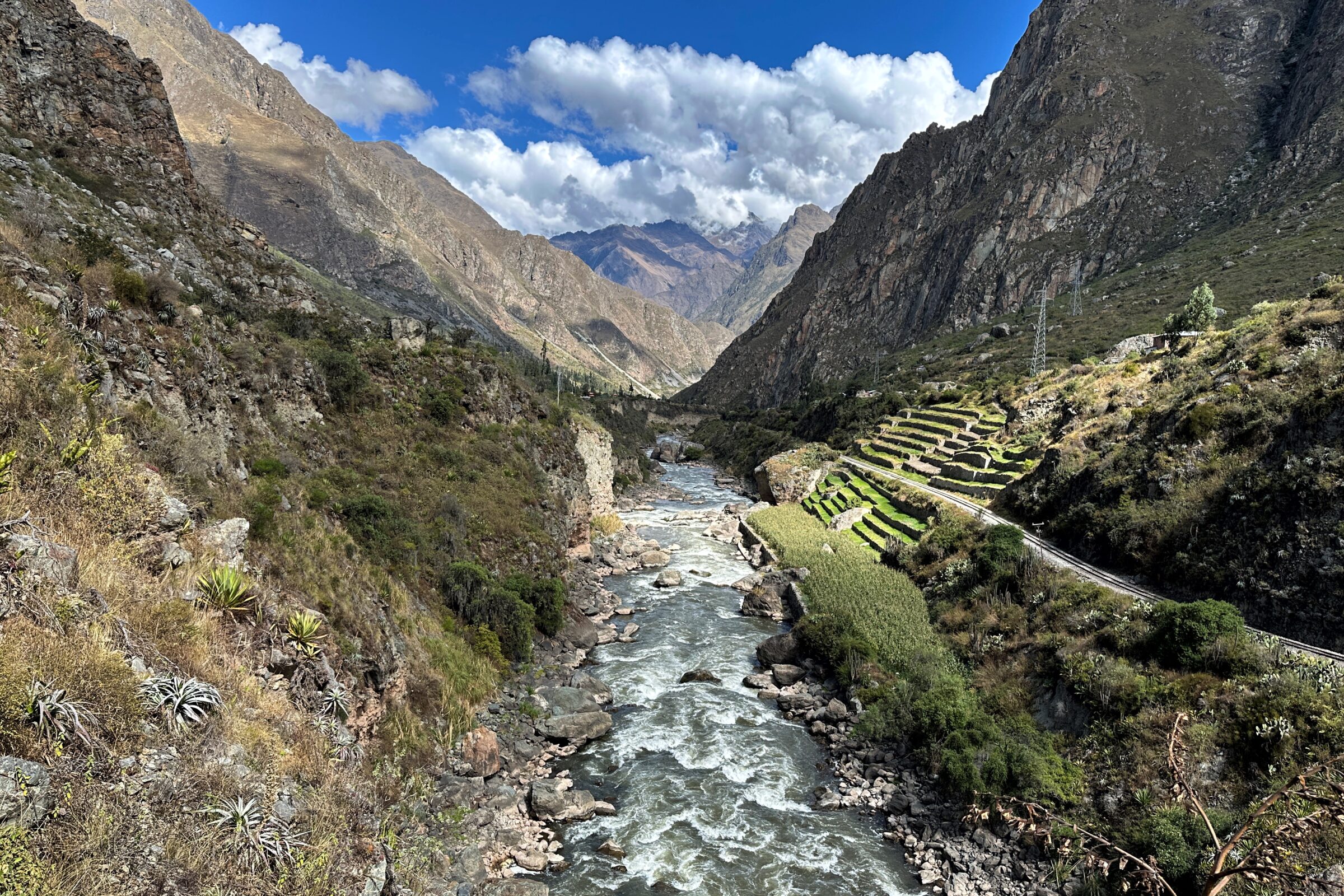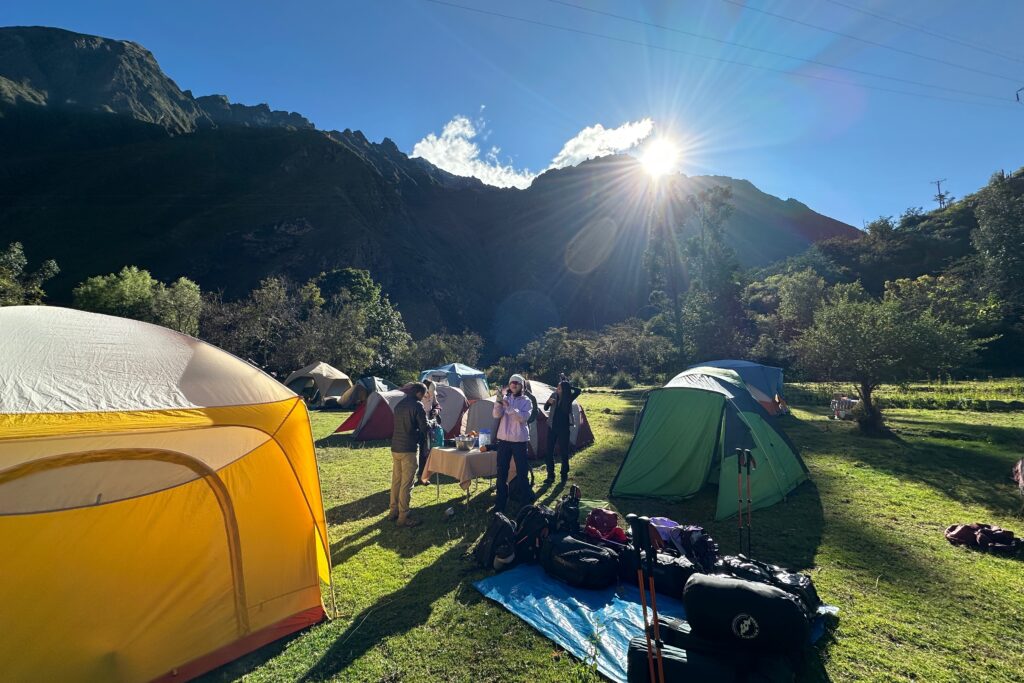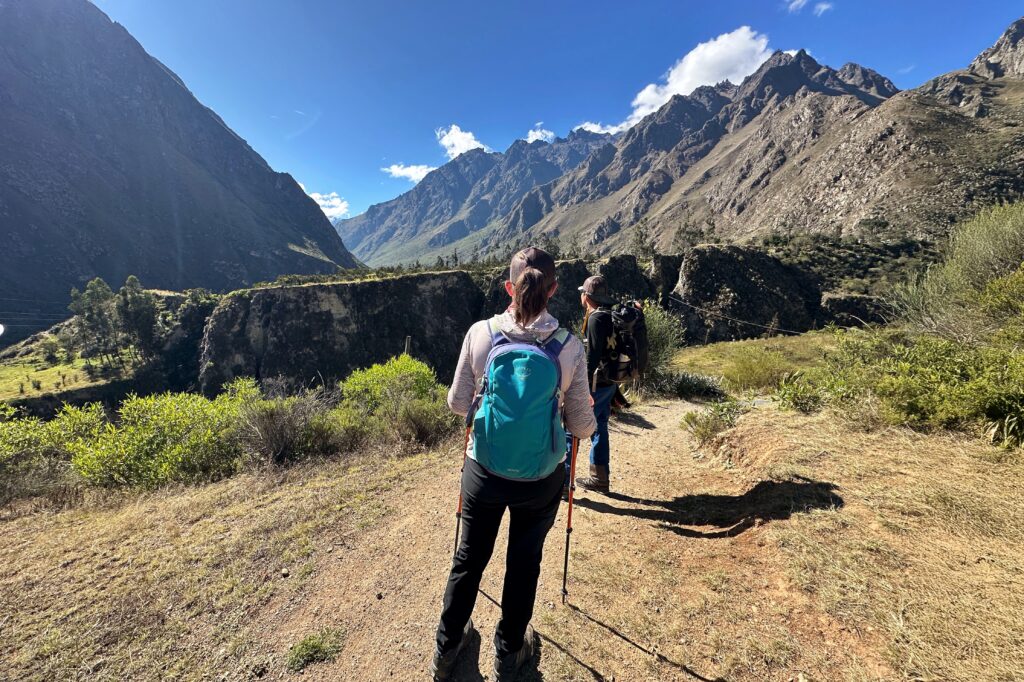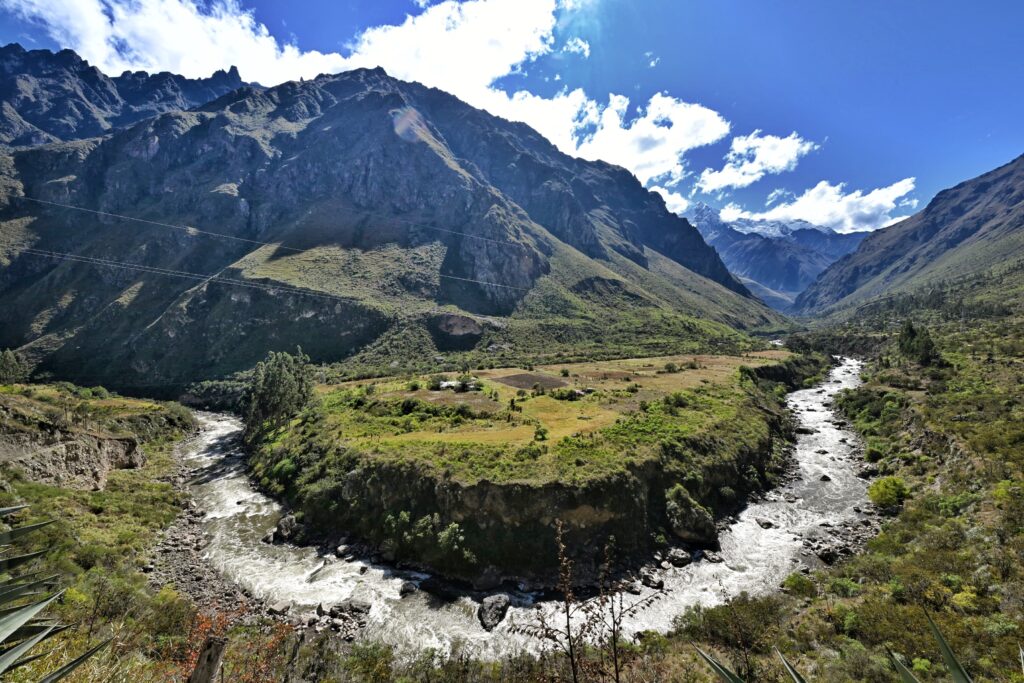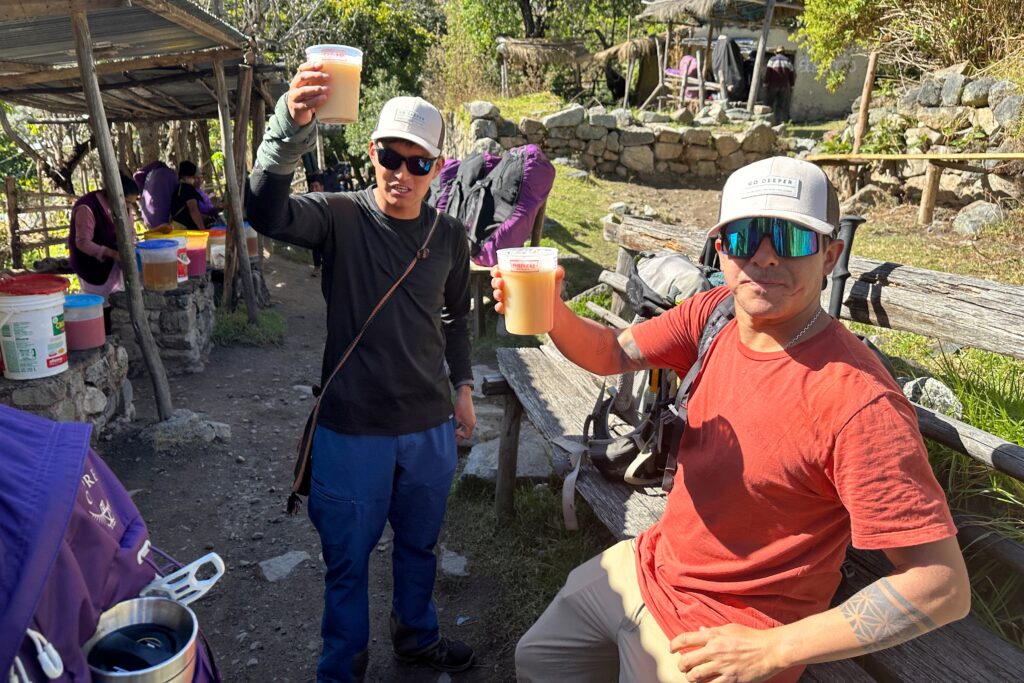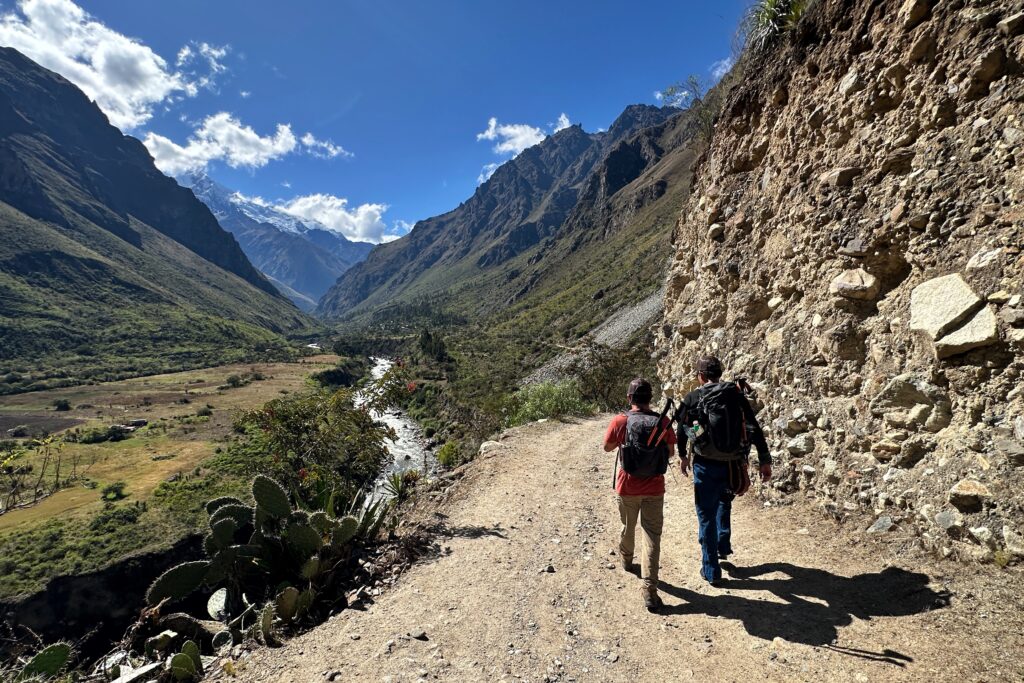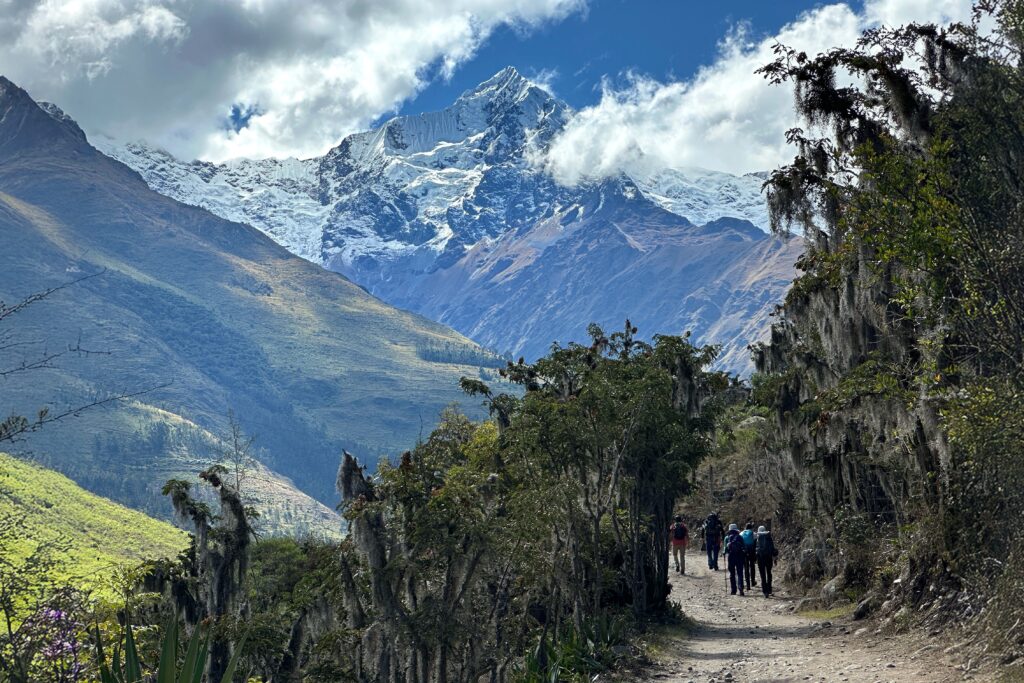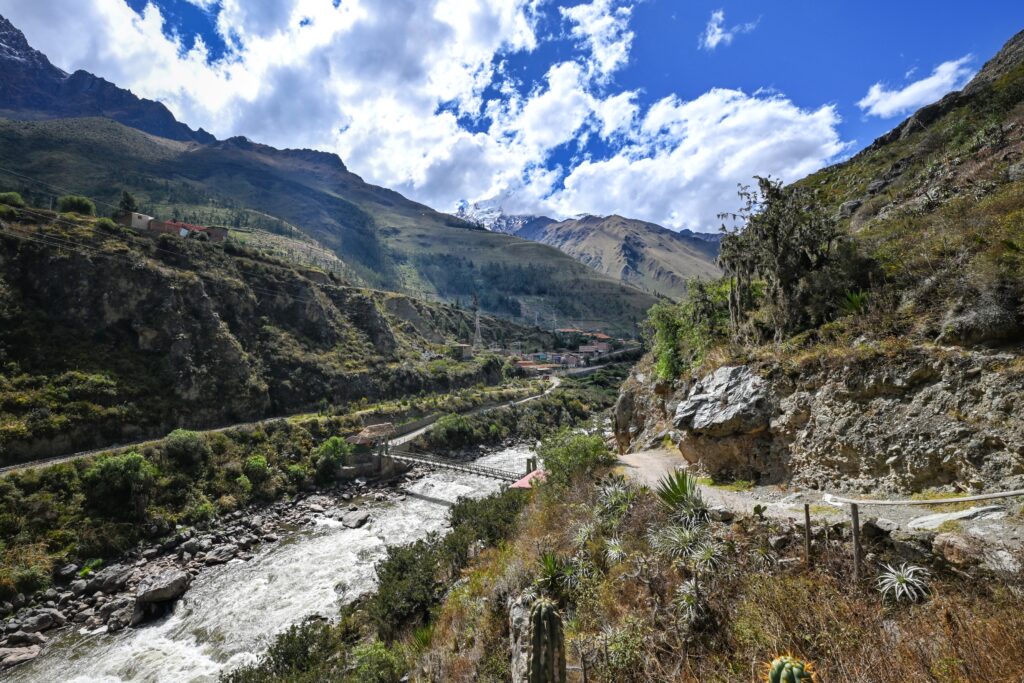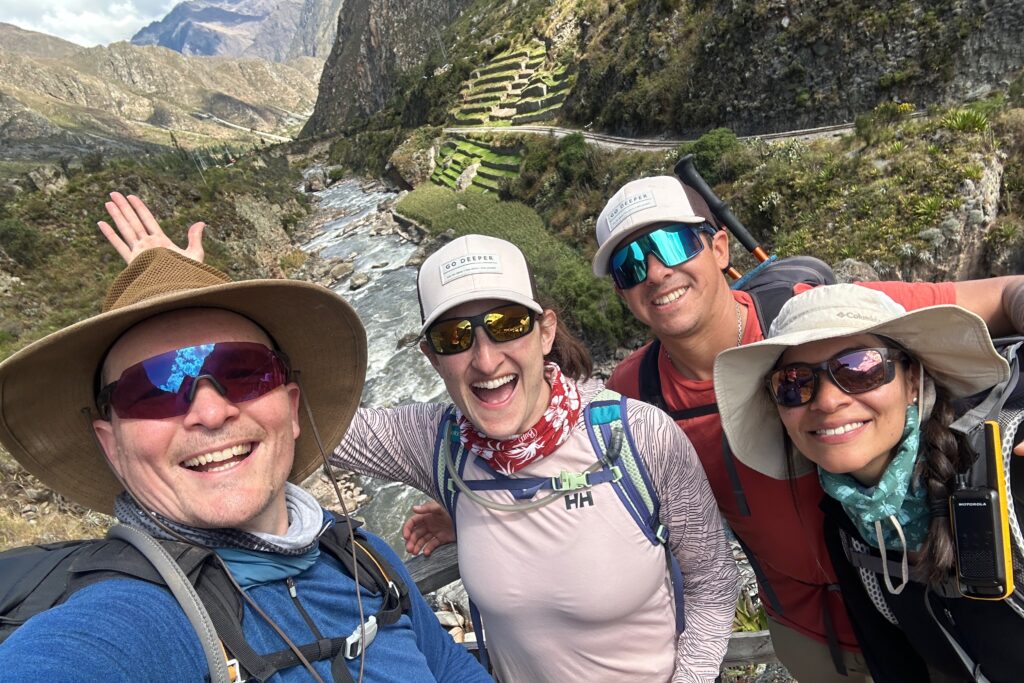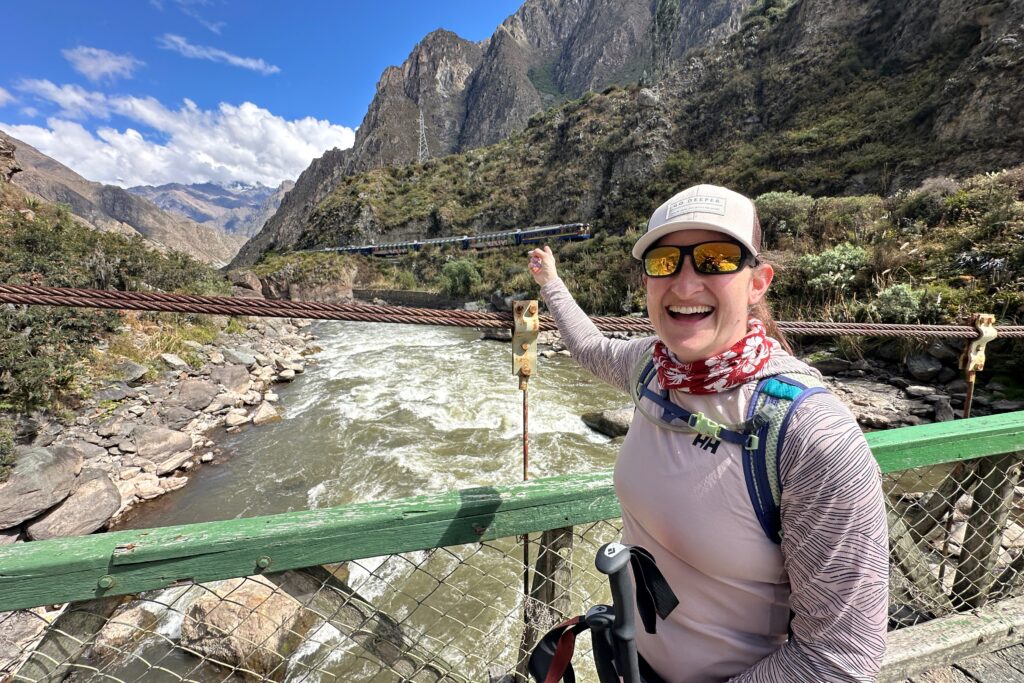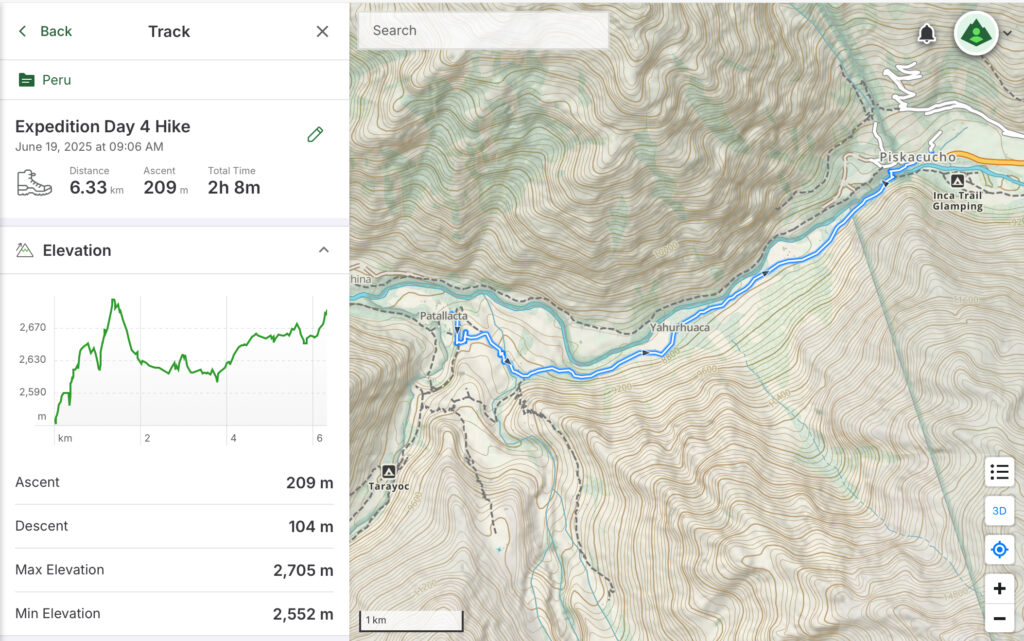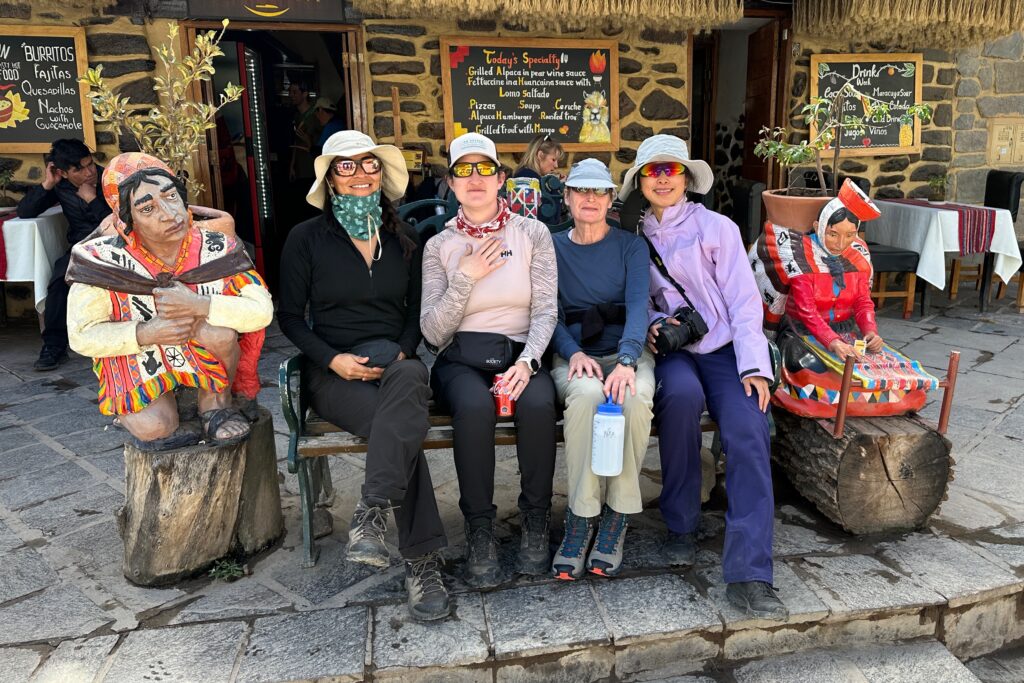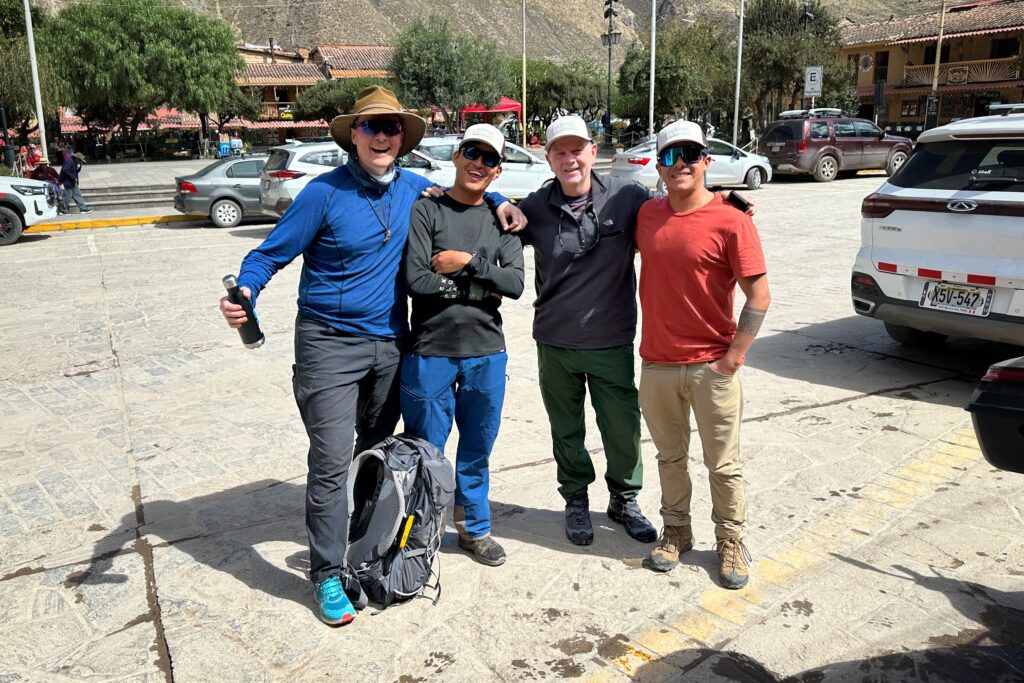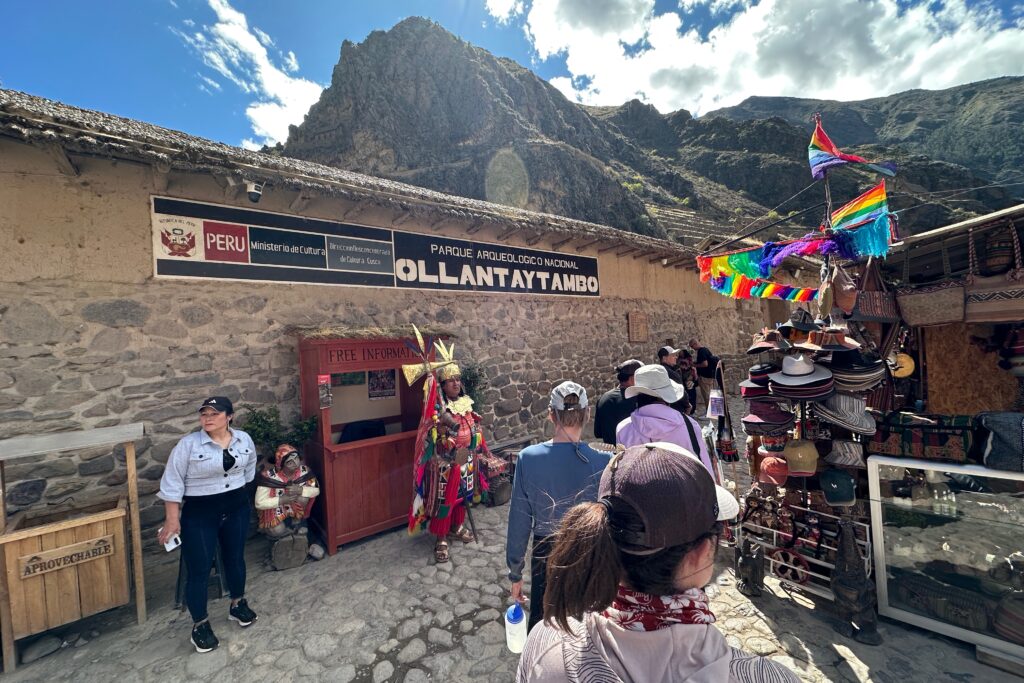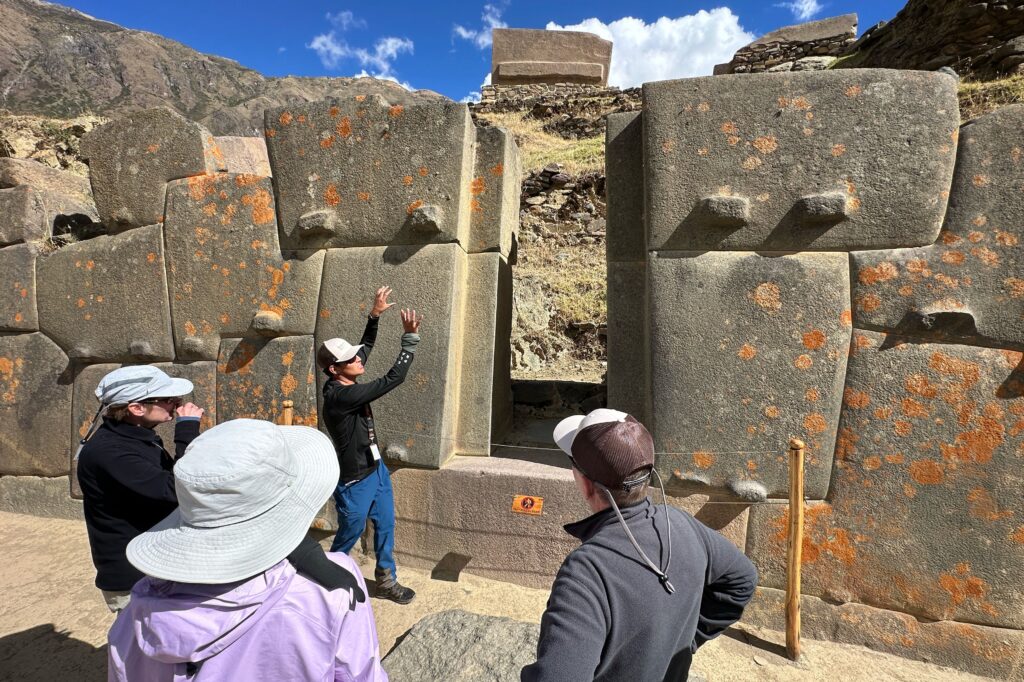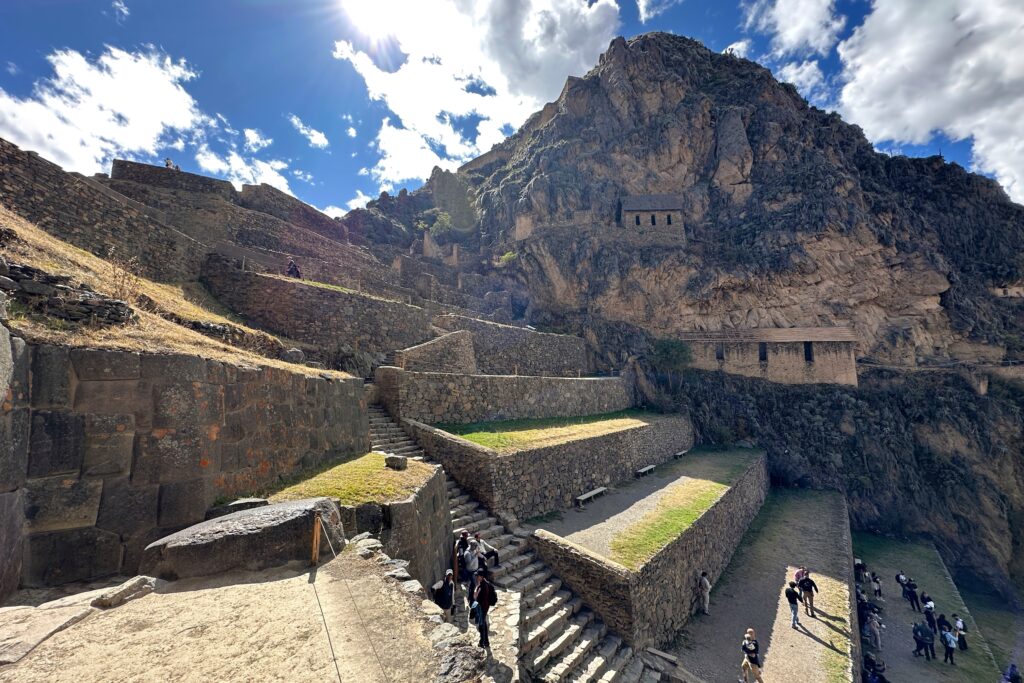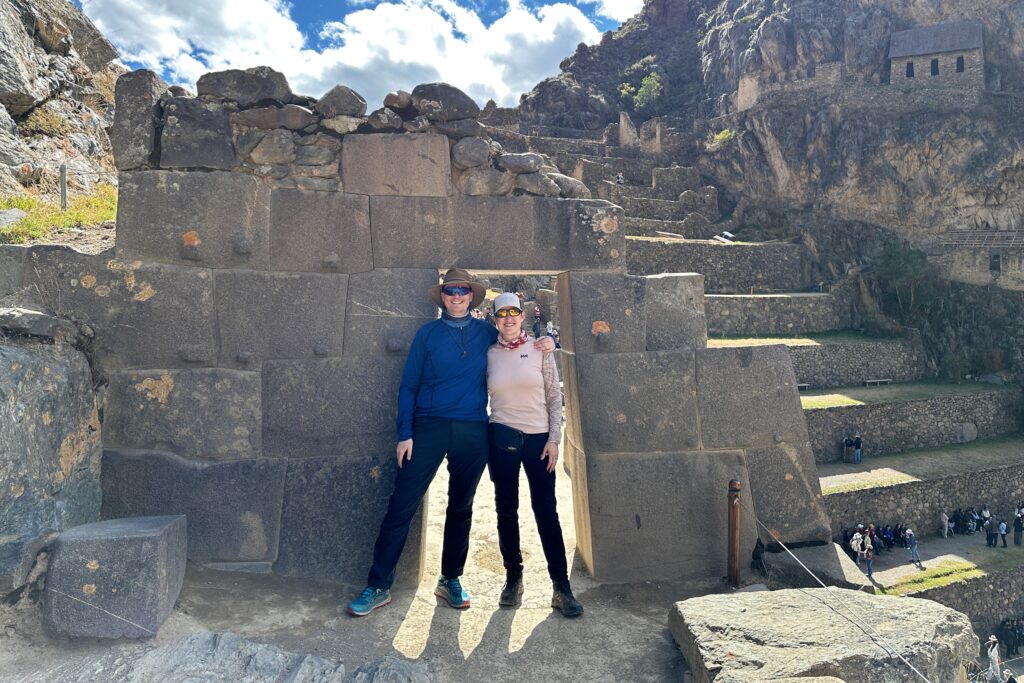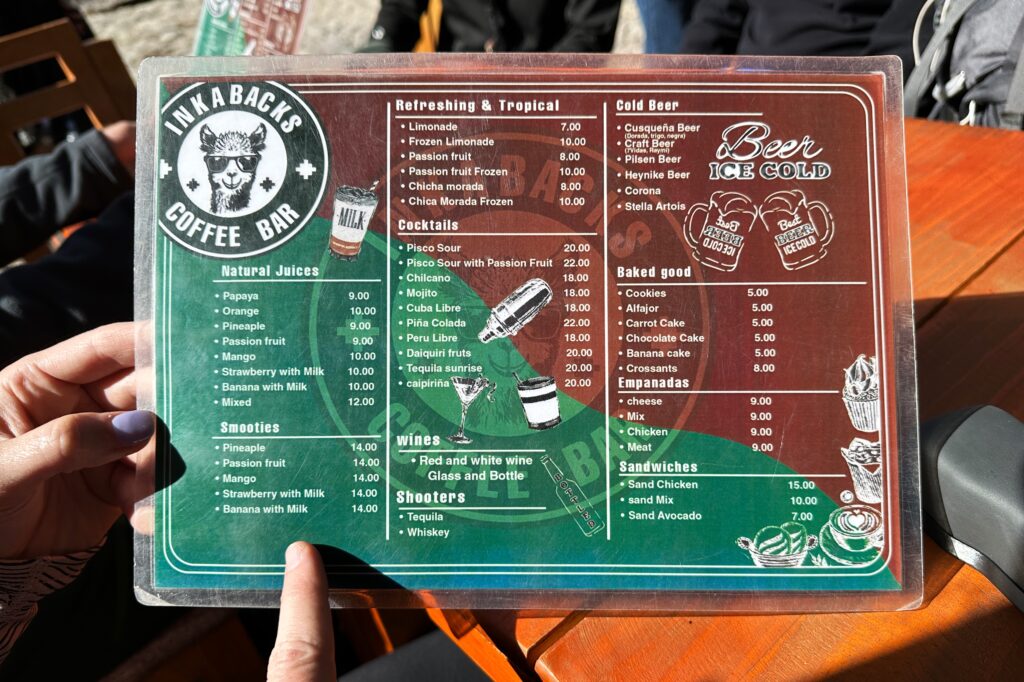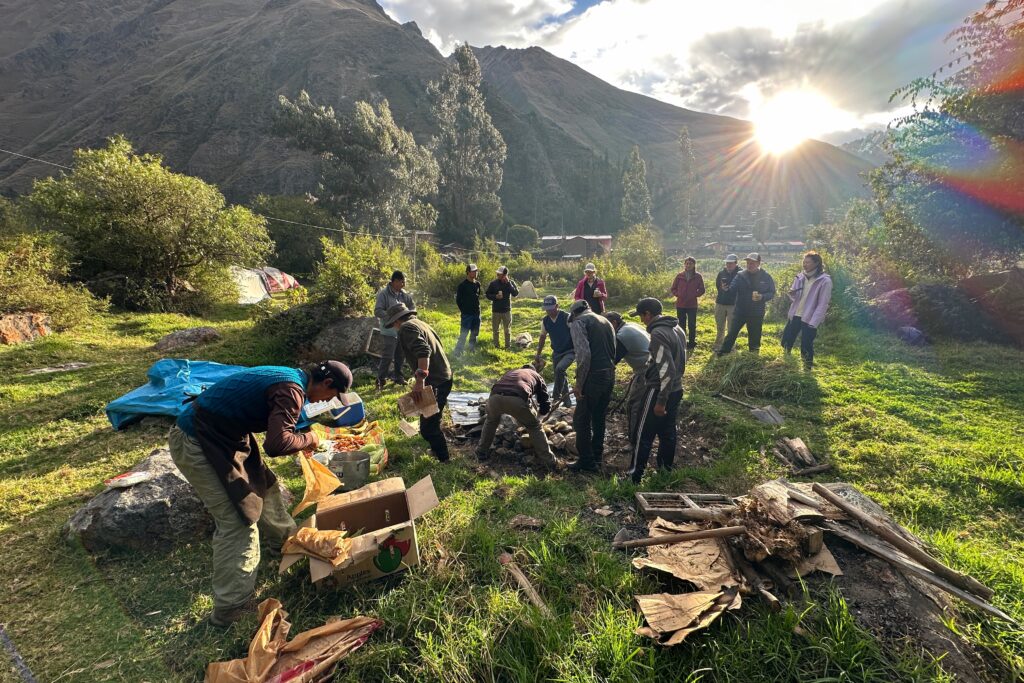Day 16: Colca Canyon to Chicago
Today is our last day in Colca Canyon and Peru. But on the bright side, we did not need to set any alarms in order to leisurely watch the morning sunrise from our lovely casita patio. When we made our way up to breakfast, we went with the usual… a cappuccino (or two), smoothie bowls, eggs with aji, and — a new twist — farewell french toast! Afterwards, we spent the rest of the morning relaxing and packing until our transportation arrived at 11AM.
At checkout, the hotel gave us two handmade, embroidered bookmarks with patterns representing the flowers in the area. They also gave us two chocolate condors. The chocolate here is very good and we have some bars to take home (thanks, complementary minibar!).
Froiland and Jorge (our same driver and guide team from Wednesday) stashed our luggage in the trunk of the car and we were off. We requested one stop in Chivay — at the same alpaca store we stopped before — in order to use our last remaining soles on some 100% alpaca yarn. Jo will be making a cardigan with the yarn haul (but don’t worry Cordwood, not for Matt).
With that task accomplished, the drive proceed south from Chivay, ascending back toward the high pass thru the Andean desert landscape. A great opportunity to view the scenery — or nap. Dealer’s choice.
Not long after our pit stop, we re-joined the main road, and after ~15 minutes, traffic came to a halt. As we observed a few days ago, this main road features a significant amount of truck traffic (given the heavy influence of the mining industry in this part of the country). Well, sometimes high Andean desert roads and large trucks don’t mix. Turns out there was an accident on one of the hairpin turns ahead of us and a truck was blocking the road. Traffic came to a halt in both directions for ~30 minutes. People getting out of their cars and wandering down the road to see what was going on.
Jorge told us he’s seen delays like this take up to 3+ hours, which, would obviously put a small wrench in our travel plans. Fortunately, the police were already on the scene (it takes about 45 minutes to get here) and were clearing the road. With what appeared to be an assist from another truck, the jackkniffed semi was relocated to the side of the road. Soon enough we were back on our way (barring the moronic drivers who were now trying to pass on a two-lane road).
From that drama to the outskirts of Arequipa, it was mostly smooth sailing. There was some Saturday afternoon market traffic to contend with, and the occasional double-parked van straight-up blocking the road, but nothing too bad. We had allotted four hours for a three-hour ride, so we ended up getting to the airport right on time. Jorge helped us check in and directed us on which way to go. We navigated through security and found another functioning Priority Pass lounge in the lower-level to hang out in until boarding. We had some light snacks and water before heading back up to the gate.
The flight to Lima went well, as expected in our super-fancy premium economy seats. Well, the kicking and loud kids right behind us weren’t so great. But the sun was setting and we got some nice views out the window. Pro tip for you fancy LATAM fliers: go with the second row (not first) in premium economy so you don’t have to put your personal bag overhead for takeoff and landing. Also, moveable armrests.
When we landed in Lima (at their brand-spanking new airport, once again), we deplaned on the tarmac and took a shuttle bus to baggage claim. Not exactly sure why the plane couldn’t pull another 20 feet forward to the jetway, but we’re guessing it has to do with the “brand-spanking new airport” part. In any case, we collected our bags and proceeded to the international terminal check-in on floor 3.
We found the American Airlines counter and the self-check in kiosks. An AA employee helped us print our boarding passes and the bag tags and directed us to the right line. Appreciate the help, but we might need to have a chat with all these airport/airline employees also touching our selection screen for us. Knock it off! Also appreciated is the fact American Airlines does not have a 3-hour restriction on accepting your checked bags. We were ~4.5 hours early for our 11:45PM flight but we were able to check-in, pass security, and clear customs right away.
One thing you can’t do more than 3 hours ahead of your flight is get in “THE CLUB LIM” which is the Priority Pass lounge in the new airport. So, we sat on the floor outside the club to kill the time before we were allowed to enter. Our sad puppy-dog faces apparently did not faze them. Once inside, life was good. We found some comfy captain-chair seats and enjoyed a very tasty dinner spread with cocktails (last hurrah pisco sours!) while working on the blog.
After enjoying the lounge for a couple hours, we made our way to the gate. On the way, we sorta noticed some huge crowds as we passed the security/immigration hall. Then we heard an announcement informing all passengers of regrets about some sort of electronic system delays in the airport. Ok, strange, but whatever. We made it to our gate with perfect timing, and immediately strolled onto the plane when our group was called a minute later. Everything seemed a-ok here! Of course, this is an international flight to the US, so raccoon security was in full effect to jack with all your stuff (like American Kestrel feathers in your hat). So, so stupid (Matt is right).
Anyways, we boarded and there were a ton of open seats all around us. We were plotting what to do with all the extra space, but as it turned out, boarding was not complete. Due to that security system crash, American was kindly waiting to depart, as a good chuck of passengers were slowed down by the near-riot in customs when the computers went down. The girl who eventually joined our row recounted the harrowing story. In the end, the pilot said one additional passenger “opted” not to take the flight (not sure how voluntary that was, lol), so they needed an extra 10 minutes to pull their luggage. Not long after that, the plane took off and were on our way to Miami.
After a small dose of blogging, we slept most of the overnight flight . Even with the delay, we were only about 10 minutes late. But the Miami airport is comically large, and we still needed to hoof it to make our connection. First, a walk to the tram. Then a tram to customs. Then Global Entry thru customs. Then pick up our bags. Then re-drop our bags. Then TSA pre-check, but everybody and their grandma now has TSA pre-check, so really just TSA. Finally, we cleared security and got to our gate five minutes before boarding. I guess another way of looking at it is… PERFECT TIMING!
From Miami to Chicago, it was all academic. We landed, picked up our bags and hailed the next taxi. This taxi driver did not have a death wish like the guy who picked us up from O’Hare in March. Instead, he drove like a normal person and — being Sunday — was even listening to “Wait, Wait, Don’t Tell Me!” Good stuff. Another great trip in the books!
